

Public Transport
The Metro of Rome only has three lines and is currently the smallest metro system in Europe. Nevertheless, it reaches the city's most important landmarks.
Opened in 1955, the metro (subway or underground) in Rome has grown very little by little and currently only operates 37,3 miles (60 km) made up of three lines . It is one of the smallest metros in Europe.
At present, there are plans for the creation of a fourth line . The reason why the metro system is so limited is that each time a new tunnel is built, more archaeological remains are found; something which also happens in Athens.
Most important metro stations
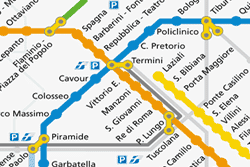
Although the metro only comprises three lines, it gets to most of the city’s top attractions . These are the most important stops to keep in mind:
Line A (Orange)
Line A runs from the northwest to southeast , from Battistini to Anagnina. The most important stops are the following:
- Cipro - Musei Vaticani : The closest stop to the Vatican Museums and to the Sistine Chapel .
- Ottaviano - San Pietro : This station is a few minutes’ walk from St. Peter's Square and St. Peter's Basilica .
- Spagna : Very convenient for visiting Piazza di Spagna and Villa Borghese .
- Barberini - Fontana di Trevi : This station is five minutes away from Trevi Fountain It is also the closest station to Piazza Navona and the Pantheon .
- Termini : Stops at Roma Termini railway station. Here, visitors can take the Leonardo Express to get to Fiumicino Airport.
Line B (Blue)
Connects the northeast to the south of Rome , from Rebibbia to Laurentina. The most important stops are the following:
- Termini : Stops at Roma Termini railway station. Here, visitors can take the Leonardo Express to get to Fiumicino Airport .
- Colosseo : Located near the Colosseum and the Roman Forum .
- Piramide : If you come in the FR1 regional train from Fiumicino , you will be able to take the metro from this stop.
Where to get a ticket?
Tickets can be purchased at the metro stations, at news-stands and in most corner shops. If you are planning to use public transport regularly we recommend that you buy a few tickets at a time or buy a travel card.
Opening times
The metro opens every day from 5:30 am to 11:30 pm . On Friday and Saturday, the metro runs until 1:30 am.
If you’d like more information on the fares, discounts and the various travel cards, check out our article on tickets and travel cards in Rome .
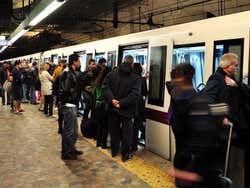
You may also be interested in
The public transport system in Rome is very varied, cheap and user friendly. These are the main means of transportation in the city:
Rome has currently over 350 bus lines and it can sometimes be a bit confusing to find the right bus. Find out the main bus lines in Rome, their schedules and frequencies and tips to help you get around the city on this type of public transport.
The Metro in Rome
Rome’s metro offers a fast and convenient way to move around the city, and won’t cost you a fortune. Here’s everything you need to know.
Receive the Rome Travel Card at home
You can now receive your 72-hour Rome Travel Card (+ audioguide) via mail at home. Read more on the website of Mobizz
Rome Metro Map
Traveling by metro in rome.
Rome has 3 metro lines: A, B, and C. You’ll probably only need to know about Line A and Line B. These cover the city center and some of the most important monuments, like the Colosseum , the Spanish Steps , and the Vatican . Line C goes through residential parts of the city and isn’t useful for tourists.
Line A is orange on the subway map; Line B is blue; Line C is green. Line A and Line B run in opposite directions, meeting in the middle at the central railway station.
Rome’s transport network of metros, buses , trams , and trains . Line A & B cross in the center of the subway map .
Operating Times
- Monday to Thursday 05.30 – 21.00, 21.00 – 23.00 replacement bus service
- Friday to Sunday 05.30 – 01.30
Early Closure of Line A in 2023
If you will be in Rome in 2023, it’s really important to know that until at least the end of the year, Metro Line A will close at 21.00 on Monday to Thursday evenings for maintenance work. There is a replacement shuttle bus. In most cases, they are close to the station, but not always. Particularly hard to find is the stop for Spagna, which is on Via Veneto. Instead of a number on the front, these buses have ‘MA’ and the destination.
Line B & Line C
- Monday to Thursday 05.30 – 23.30
When the buses stop running, night (notturno) buses take over the same route. These buses have MA (line A) and MB (line B) on the front instead of a number.
The Line B night bus is shown with an owl on a sign outside the Colosseo metro
Buying Tickets
Tickets are available for a single trip (100 minutes), for 1 day, 2 days, 3 days, or 7 days. If you’re staying longer than that, there are also monthly tickets.
The same tickets can be used on buses, the underground, trams, and some trains within the city.
There are many places you can buy tickets in Rome:
- at ticket machines in the stations. Choose the language you want, the ticket type, and the payment method. If you buy at least €7 worth of tickets at one of the red vending machines, you will automatically get a rechargeable electronic card to use throughout your visit. You can buy a multi-day pass or top the card up one ticket at a time from the vending machines.
- at tobacconists (these are easily spotted by the sign with a big white T outside)
- from newspaper stands
A newspaper stand (or edicola in Italian)
- Tap&Go at the gate to the metro or on buses with your contactless payment card (VISA or Mastercard) or wearable device with NFC tech – the first time you tap your card, you’ll be charged the ticket price. If you take another bus, tram, or metro within 100 minutes, you should tap your card again, but you won’t be charged.
- TicketAppy app – this is an easy way to buy tickets on your phone by credit card, ApplePay, or Satispay, then use the QR code at the gate.
- DropTicket app – without registering, you can buy tickets on your phone for public transport in Rome and pay for trains and car parks throughout Italy.
Select the language and type of ticket you want to buy
Children under 10 years of age can travel for free when accompanied by a paying adult.
There are no student or senior discounted rates on tickets valid for less than 1 month.
The combined RomaPass includes unlimited access to the city’s transport system for 48 or 72 hours.
How To Take The Metro
It’s not hard to find the metro stations. All stops have large M signs outside at street level.
You’ll find the red metro sign outside all stations
Once inside, you’ll need to get through the barrier.
Single-use tickets are inserted inside the machine, with the arrow facing downwards and towards you. The machine reads the information, stamps the ticket with the date and time, spits it back out, and opens the gate.
Multiday tickets contain electronic data and are held up in front of the yellow circle to be read. The machine will beep if the ticket is valid and open the gate.
QR codes on your phone are held against the screen at the top.
The next step is to work out which way you need to go. At most stations, only the final destination is indicated. So, if you want to go from Termini to the Vatican , you need to follow the signs for Battistini (or direzione Battistini ).
Some signs are more helpful
Currently, you only need your ticket to exit from the station on the B1 line. Most exits are simple turnstiles, which you can pass through without a ticket.
Exit turnstiles
Ticket Controls
As it’s possible to jump over the barriers or get on buses without paying, increasingly, there are groups of ticket inspectors doing spot checks.
On the metro, you’ll often find them waiting at the turnstiles to check that passengers leaving the metro have traveled with a ticket. They will be dressed in ATAC uniforms. When they ask to see your ticket, they will read the electronic data to see if it’s valid.
If you don’t have a ticket, or it isn’t valid for the trip, you will have to show them some form of ID. They will issue a fine if you pay within 5 days. The cost is €54.90. If it takes you 6 or more days to pay, the fine goes up to €104.90. You can pay the inspectors directly by card, but not cash.
Accessibility
For wheelchair users, the metro can be hit and miss and depends on the individual station.
Signs to follow from the platform to the lift
Not all of the stations have elevators or chairlifts to reach the platform. If accessibility is an issue, avoid staying near the Spagna, Barberini, Repubblica, Vittorio Emanuele, or San Giovanni stops.
Repubblica metro station can only be accessed by stairs
Some stations have stairlifts. You’ll need to press the button and call a member of staff to operate it for you.
But even where there are facilities, there’s no guarantee that they will work.
For the visually impaired, there are special rubber tactile paths, that you can follow through the stations to the platform.
A tactile path and wheelchair-accessible ticket barrier
Lifts in some stations, like Termini, have braille buttons and announcements in English and Italian.
There are also announcements in both languages on the trains. These explain which stop is coming up next and which side you need to get off.
Changing Lines
You’ll find metro stations close to some of Rome’s most important monuments. Some of them are on Line A, and some of them are on Line B, but the two lines only have one point of connection.
Lines A and B cross at Termini, the central railway station.
Lines A and C meet at San Giovanni.
And one day, lines B and C will connect at Colosseo, but not right now.
This can make moving from one part of the city to another quite time-consuming.
For example, if you want to go from the Vatican (line A) to the Colosseum (line B), it can be faster to take a bus.
Entrance to metro lines A & B at Termini Station
Popular Metro Stations and Their Monuments
Rome’s central railway station is the only connection point between lines A and B. You can catch the Leonardo Express to Fiumicino here or one of the cheaper coaches outside on Via Giolitti. Termini is also the starting point for the high-speed trains that run frequently to Florence, Naples, Milan, and Venice, and out the front is the bus station, where you’ll find plenty of buses going all over the city.
- Ottaviano: The unmissable St. Peter’s Basilica is less than a 10-minute walk from this stop. Don’t miss cocktails on the terrace with the most stunning view of St. Peter’s dome at Terrazza Les Étoiles (Atlante Star Hotel).
- Cipro: This will get you closer to the entrance of the Vatican Museums if you have skip-the-line tickets , though if you plan to wait in line, Ottaviano is the better choice as the line forms around the walls of Vatican City in that direction.
- Flaminio: One of the entrances to Villa Borghese is right next to the metro. You can also see the great view from Pincio Hill, admire the works of Caravaggio , Bernini , and Raphael in Santa Maria del Popolo church, or take the tram to the stadium to catch a match of one of Rome’s beloved soccer teams .
- Spagna: The exit will bring you out on one side of the majestic Spanish Steps. Also close by are the shopping streets of Via dei Condotti and Via del Corso.
- Barberini: This stop is close to the luxury hotels of Via Veneto and Rome’s Hard Rock Café. You’ll also find the macabre Crypt of the Capuchin Friars and Palazzo Barberini, one of Rome’s most important art galleries, a few steps away. Head towards Via del Corso, and after a short walk, the stunning Trevi Fountain is off a street to the left.
- San Giovanni: Rome’s cathedral is just inside the ancient walls, next to the Holy Stairs (Scala Santa) and Baptistery. You can see them all and do some shopping on Via Appia Nuova from this metro station.
- Vittorio Emmanuele: Piazza Vittorio is famous for its impressive food market , where you can find fresh Italian produce, sections for meat and fish, as well as ingredients from around the world.
- Colosseo: History lovers stop here to see the Colosseum , Arch of Constantine , Forum , Nero’s Golden House (Domus Aurea), and Trajan’s Market .
- Circo Massimo: The historic Circus Maximus is now a public park and occasional concert venue. Wander up to Aventine Hill to see the dome of St. Peter’s through the famous keyhole and visit the Rose Garden. A short walk away are the ruins of the Baths of Caracalla , where from June to August, Rome’s Opera House stages its summer season.
- Piramide: You can’t miss the adorable pyramid-shaped ancient tomb just outside the station. A short walk will also take you to the world’s biggest Eataly store, the popular Testaccio market, and lots of traditional restaurants . On Sunday mornings, this is the stop you’ll need if you want to visit the Porta Portese flea market for a mix of bargain prices and antiques. You can also catch trains here to the beach, Ostia Antica , and Fiumicino airport .
Shopping by Metro
The main shopping streets in the center are Via del Corso (Spagna or Flaminio metro) and Via Cola di Rienzo (Lepanto metro). Here you’ll find a mix of Italian brands and international stores like Zara, GAP, and Mango.
More designer shops like Gucci, Louis Vuitton, and Tiffany & Co. are on the super stylish Via dei Condotti and in Piazza di Spagna, including the flagship store of Rome’s most famous designer, Valentino.
At Barberini, check out the Rinascente department store for its choice designer labels and stylish household items. Don’t miss the restaurant with a view on the roof and the ancient Roman aqueduct conserved in the basement.
The Roma-Lido Train
Next to the Piramide metro station is the Roma-Lido station. This little overground train leaves every 15 minutes and goes to Ostia, Rome’s closest beach.
It’s a convenient way to get to Ostia Antica without driving. It takes about 30 minutes to reach the Ostia Antica station. From there, it’s less than 10 minutes on foot to reach the ruins of the ancient port, but there is an overpass from the station to the site that isn’t accessible to anyone who struggles with steps.
Insider Tips
- Rush hour is from 07.30 to 09.00 in the morning and in the evening from 18.00 to 20.00. It’s best to avoid traveling at these times, if possible, as trains can be very crowded.
- Sometimes it’s quicker to walk. For example, going from the Colosseum to the Circus Maximus or from Termini to Repubblica is quicker on foot than going underground and waiting for the train.
- Line B has 2 destinations. The line splits at Bologna, so if you need to go to Tiburtina Railway Station, make sure to get on the train to Rebibbia, not Jonio.
A Line B metro train going to Jonio
- At Cavour and Circo Massimo, there isn’t an underground station. Instead, there are entrances directly onto each platform, one on either side of the street, which can be very confusing. If you want to go to Termini, you’ll need the Rebibbia/Jonio entrance.
At Cavour metro station there are different entrances for each platform
- Escalators and elevators are frequently out of order. If you rely on them, you can check on the ATAC website, which is currently working.
- Don’t be surprised if the metro seems particularly inefficient in the summer months. Large numbers of staff (and Romans) all go on holiday at the same time in July and August, and waiting for trains to pass can increase from 3 minutes to 10-12 minutes in high season.
- Learn the word s ciopero (pronounced something like this: sho (like shock) pe (like pear) row (like row a boat), the Italian word for strike. Italians love to strike, and ATAC staff do it a lot, especially on Fridays. Typical strikes run from 08.30 to 17.00 and restart at 20.00 until close. Strikes are announced some days in advance, and there will be warning signs at metro stations, usually taped to the gates, to inform travelers. What will happen on the day is impossible to predict. Everything might close; one line could be operating; there could be a reduced service. Checking the website after 08.30 on the day, or following ATAC on Twitter, is the only way to know for sure.
- Other words to learn: ingresso (entrance), uscita (exit), acensore (lift), vietato (forbidden)
An exit sign in a metro station – sometimes signs are only in Italian
- If you are planning to stay on Line C, be aware that it’s a commuter line, and metro trains only pass every 10 minutes.
A 3-day metro pass (which also covers buses, trams, and some overground trains) costs €24 at the time of writing. Check the Atac official website for the latest prices.
For a single journey, a metro ticket is currently €2.
Taking the metro in Rome is perfectly safe. When using any public transport system in a major city, you should keep your wits about you. Pickpockets will target tourists on crowded trains so make sure that your valuables aren’t easy to access.
No, the metro is not free to use, though it is very reasonably priced. Confusion may have come from various tourist passes, like the Rome City Card, which includes ‘free’ use of public transport.

How to Use Rome Metro – An Easy Guide to the Subway in Rome
To anyone visiting Rome, whether it’s their first time or they have already been, I always advise making good use of local public transport. Along with the urban railway, the Rome metro is the fastest and most hassle-free way to get around in the city both in the historic center and in more suburban areas.
Fast, traffic-free, and quite on time, opting for the Rome metro will get you to the destination before a bus and sometimes even a taxi would.
Whether you want to reach the different attractions quicker or your hotel is far from the city center, I’m pretty sure you will end up using Rome metro during your trip. This guide wants to help you do that without getting lost and hassle-free.
Table of Contents
A simple guide to Rome metro
What is the rome metro called.
In Italian, metro or subway is called “metropolitana” or “metro”, and in Rome, the agency that runs it is ATAC , the same company that runs most of the urban and local public transport including buses and trams.
Make sure you read our thorough guide to the Rome public transport .
Rome metro map
Considering all the three lines and the urban railway system, the Rome metro is quite widespread and reaches most places in the city. This is a handy map inclusive of both metro and railway lines.

Rome metro lines
Rome has three metro lines: line A (red), line B (blue), and line C (green). While the one that crosses more central landmarks is line A, also the other two lines count popular stations such as the Colosseum (line B) and San Giovanni in Laterano (line C).
Rome Metro Line A
Rome’s metro line A runs from Battistini (north of Rome) to Anagnina (south of Rome) and counts several tourist-packed stations such as Spagna (for the Spanish Steps, Villa Borghese, Via del Corso, Piazza Navona, and Pantheon), Flaminio (for Piazza del Popolo, Villa Borghese, Tridente shopping streets, Centro Storico), Barberini (to reach Via Veneto, Palazzo Barberini, Quirinale Palace), Cavour for the Monti neighborhood, Cipro for the Vatican Museums, and Ottaviano for St. Peter’s Square and Basilica as well as Borgo neighborhood.
Line A has several stations across the large Via Tuscolana, such as Colli Albani and Furio Camillo, and it also stops in the Quadraro neighborhood, a must if you are a street art fan . The last stop, Anagnina, is a busy bus and coach hub: from here you can also take the bus to Ciampino Airport.
Rome Metro Line B
Metro line B stops in other pivotal stations near the Colosseum (Colosseo) and the Circus Maximus (Circo Massimo). Other interesting stations of metro line B include Piramide for the Testaccio and Ostiense neighborhoods, Basilica San Paolo to reach Saint Paul Outside the Walls Basilica , or Sant’Agnese-Annibaliano to reach the fantastic Sant’Agnese Fuori le Mura complex in the Nomentano area, one of my favorite little-known sites in Rome .
Rome metro lines A and B intersect in Termini, which is both a train and a metro station as well as a crowded bus hub.
Rome Metro Line C
Rome metro line C is one of a kind. First of all, it differs from the first two in the fact that its trains don’t have a driver but run with Driverless technology instead. Out of the 31 stations planned for line C, so far 24 have been opened, with the last one being San Giovanni close to the beautiful San Giovanni in Laterano church.
When line C will be fully operative, among its stops we will have also Colosseo (overlapping with line B), Piazza Venezia, Chiesa Nuova, and San Pietro that currently don’t have metro stations, and Ottaviano (overlapping with line A).
What metro stop is the Vatican?
The closest metro stations to reach important Vatican landmarks are Cipro and Ottaviano in the red line A. Get off in Cipro if you are going to the Vatican Museums. From the station, take Via Cipro and turn right onto Piazza Santa Maria delle Grazie and Via Frà Albenzio. Take Via Angelo Emo and Via Vittor Pisani where you will see the large stairs to Viale Vaticano.
While if you are visiting St. Peter’s Basilica and Square, the closest metro stop is Ottaviano. From here, you just need to walk down Via Ottaviano to Piazza Risorgimento, cross the traffic light to Via di Porta Angelica and you will immediately see Bernini’s colonnade.
Make sure you read our in-depth guide to visiting the Vatican .
What metro stop is Trevi Fountain?
Even the Trevi Fountain doesn’t have a devoted station, the closest metro stop is Barberini on line A which it’s about 600 meters (less than 2000 feet). Fontana di Trevi is not far from other metro stations such as Spagna (900 meters, about 3000 feet) and other central stops such as Repubblica (1.3 km, about 4200 feet) or Cavour of line B (1.4 km, about 4500 feet).

How to buy Rome metro tickets and where
There are many ways and places where you can buy Rome metro tickets:
- with myCicero app: this app is very handy because you can use it in many cities in Italy and also for trains and parking lots. With myCicero app you can buy single tickets (valid for 100 minutes and 1 metro ride) as well as 24/48/72h tickets valid for unlimited metro trips;
- purchasing a Roma Pass: you can buy one for 48 or 72 hours and gives you unlimited access to Rome public transport as well as discounted admission to several museums. Buy here your pass !
- Atac ticket offices in metro stations and main train stations: the main metro stations have also a ticket office, but you can find vending machines in all of them. From the machine, you can buy single tickets (valid for 100 minutes and 1 metro ride) as well as 24/48/72h tickets valid for unlimited metro trips, and also a CIS weekly card.
- from newsagents, “Sali e Tabacchi” shops, and some bars: you will find these everywhere in the city. Newsagents are mainly kiosks selling magazines and newspapers, while “Sali e Tabacchi” are the historical little shops selling cigarettes, tobacco, lighters, envelopes, stamps, candies, and also public transport tickets.
- Tap&Go: if your ATM or credit card is contactless, you can easily buy your ticket at the ticket barriers at the metro stations before reaching the trains. This also works with NFC devices including smartphones and smartwatches.
How much is a metro ticket in Rome?
There are many tickets you can buy to use Rome metro. If you are in Rome for a day only, chances are you are going to stick to the city center and mainly walk, so no real need for a metro ticket.
If you still need a Rome metro ticket to reach your hotel, you can buy a single ticket of €1.50 that gives you a validity of 100 minutes from the first validation and can extend to the end of your trip as long as you boarded (and validated your ticket again) the last bus or train before the expiration time.

If you are staying longer in Rome, staying far from the city center, and visiting beyond the more popular attractions, you can consider purchasing Rome metro tickets with longer validity and unlimited access to all public transport:
- 24h Rome metro ticket costs 7€
- 48h Rome metro ticket costs 12.50€
- 72h Rome metro ticket costs 18€.
Are you lucky enough to spend a week in Rome ? Chances are you are going to use public transport often so I totally recommend buying a weekly ticket. The cost for a 7-day Rome metro ticket is 24€ and it obviously gives you access to all buses, trams, metro, and trains within the borders of Rome municipality.
How to validate your ticket in the Rome metro
Depending on what type of ticket you have, there are different ways to validate it.
If you bought a paper ticket from a newsstand, a Sali e Tabacchi in the city, a ticket vending machine, or a ticket booth, you just need to insert it in the ticket barrier placed before the platforms.
This way, the barrier will unlock and you can go through it. If the barrier doesn’t unlock, it means that your ticket is expired: it’s either more than 100 minutes from the first validation or you have already done one metro ride.
If you are sure that your ticket is still valid but the barrier didn’t unlock, try another one or ask the staff for help.
If you have a Roma Pass or have bought your ticket from myCicero, you need to open the barcode on your phone and then place it close to the electronic reader. The ticket barriers with the electronic readers are not many in each station, they are usually at the ends of the barrier rows and often are the same barriers for the wheelchairs. Once your ticket is validated, the sliding doors will open and you need to enter before they close (pretty quickly!).
If you are using myCicero, you need to actually activate the metro section on your ticket. Only this way, you will have the barcode. Even if you have already used the train or the bus with the same ticket, the metro option is not active and you need to do it separately. I suggest you do it when you are ready to validate the ticket for the Rome metro because once you activate it, you have a 5-minute span to enter.
You can also access the Rome metro easily with your contactless card. In Rome, it’s called Tap & Go and you can use any contactless card, whether it’s debit, credit, or prepaid, or any enabled device. Just like with the myCicero app, you need to place your card on the reader and wait for the green light and the opening of the doors.
To use the contactless Tap & Go service in the Rome metro you don’t need to register an account. You would need this only if you want to retrieve your trips, see travel costs, or buy the monthly ticket.
Is the Rome metro 24-hour?
The Rome metro doesn’t run 24 hours, each line follows its own schedule.
- Line A Anagnina-Battistini runs from 5.30 am to 11.30 pm from each end. On Friday and Saturday, the last ride from each end station departs at 1.30 am.
- Line B Laurentina-Rebibbia runs from 5.30 am to 11.30 pm from each end. On Friday and Saturday, the last ride from each end station departs at 1.30 am.
- Line B1 Laurentina-Jonio (a shorter detour of the main line B) starts at 5.30 am from both ends while the last ride departs at 11.27 pm from Laurentina and 11.24 pm from Jonio.
- Line C Pantano-San Giovanni runs from 5.30 am to 11.30 pm from each end. On Friday and Saturday, the last ride from each end station departs at 1.30 am.
Rome has also a few urban railway lines and these are the schedules:
- The line Roma-Ostia Lido connects the city to Ostia Antica and Ostia beach and it runs from 5.30 am (the first train from Ostia departs at 5.15 am) to 11.30 pm from each end station.
- The line Termini-Centocelle connects Rome’s main station, Stazione Termini, to the southern Centocelle district and runs from 5.30 am (the first train from Centocelle departs at 5.07 am) to 10.53 pm (the last train from Centocelle departs at 22.30 pm).
- The line Flaminio-Civita Castellana-Viterbo connects the center of Rome to the towns of Civita Castellana and Viterbo. Before leaving Rome, this line has a few stops inside the city and its trains start at 5.25 am from Flaminio or 5.55 am from Montebello to 10.40 pm from Flaminio or 11.10 from Montebello.
There are also other railway lines from the main stations in Rome with urban traits that also connect to other cities and towns in the region such as F1 (Orte-Fiumicino), F3 to Bracciano and Viterbo, and F5 to Civitavecchia. They are run by Trenitalia but if you are staying within the city of Rome, your ATAC ticket will be valid. For these schedules, check out the official website of Trenitalia .
How to use the Rome metro
Rome metro is pretty easy to use. From outside, you need to spot the big M sign, and to get in there is always a staircase, if you are lucky, an escalator, but that’s not always the case in the Rome metro. This is why sometimes it’s difficult to take the metro if you are traveling to Rome with a baby and a stroller. Usually, there is a lift, so inquire with the staff.
When you enter the metro station, you will find the sign for the trains with also noted the direction. Before accessing the platform, you will need to validate your ticket or card, whether it’s paper or magnetic. If you purchased through an app, you need to scan the barcode on the ticket barrier.
Usually, you can choose your direction once you are already inside the barriers where you will find the list of the stations. Sometimes, this is not the case and you need to know which direction you are taking before entering. I think it’s like this Cavour station in line A (red).
When I get to the platform, I always try to go to the first or last wagons because they are usually less crowded than the central ones.
Once you reach your destination and get off the train, from the platform you go towards the exit, and before actually getting out of the station you can see the signs telling you which street each exit leads to. Sometimes you will find escalators, like in Spagna station, and sometimes stairs like in Lepanto or Ottaviano.
Is Rome metro safe?
Generally speaking, the Rome metro is safe. I took the metro in Rome in many different neighborhoods, both central and towards the suburbs, and never had a problem. There is plenty of police and Atac staff, especially in bigger stations like Termini, so whichever problem you might have, you can ask them.
When you take Rome’s metro, however, I suggest you watch out for your belongings because there are pickpockets. As a general rule, don’t leave your valuables very visible, but especially if the metro is crowded, be extra careful. This is a well-known issue and it’s not uncommon to hear metro drivers warn the passengers when they see regular pickpockets entering the trains.
Other than that, probably I would pay attention to metro and train stations at night, like in most big cities though, nothing more than usual. I took the metro many times at night and I have never witnessed crimes, robberies, or unpleasant scenes. I actually witnessed the end of a robbery (when the victim realized he got his video camera stolen when the thief was already gone) in the metro in the full daytime, while I got robbed only on a bus.
Does the Rome metro go to the airport?
No, the Rome metro doesn’t go to the airport directly, you need to change and take a train or coach.
To get to Fiumicino Airport you can get off in Termini and take the Leonardo Express train, or the F1 railway from Trastevere, Ostiense, Tuscolana, or Tiburtina.
To get to Ciampino Airport, you can either take a coach from Termini station or take the metro to Anagnina (the last stop of metro line A) and from there a coach.
Tips for when you use the Rome metro
Rome’s metro is pretty easy and straightforward to use. Apart from line B which includes a small separate branch, the other lines are just straight and leave no room for confusion.
- Avoid peak hours. Whether you are traveling with or without luggage, I suggest you avoid peak hours when taking Rome metro. The peak hour in the morning goes from around 8 to 10 am, while in the evening it goes from 5 to 7 pm.
- Watch out for your belongings. Always take care of your belongings because pickpockets are very active in the metro in Rome.
- Expect strikes. Atac sometimes goes on strike, and when it does, while the buses ensure a minimum number of rides, metro stations are closed so not operative for the whole duration of the strike. You can find updated information on the strike hours on the Atac website.
- Check out the detours. In the case of works and renovation, it happens that Rome lines are covered by buses when the trains are not working and stations are closed for maintenance. You will find real-time updates on the Atac website.
- Google Maps is your friend. I found Google Maps quite up-to-date when going around Rome, so if you are getting lost and want to reach the closest metro station quickly, don’t be afraid to use Google Maps.
About The Author: Angela Corrias

Rome Public Transport – Easy and Complete Guide

12 Best Cooking Classes in Rome – How to Make the Perfect Pasta and Pizza in Italy

Is Rome Worth Visiting? My Honest Opinion, Pros & Cons
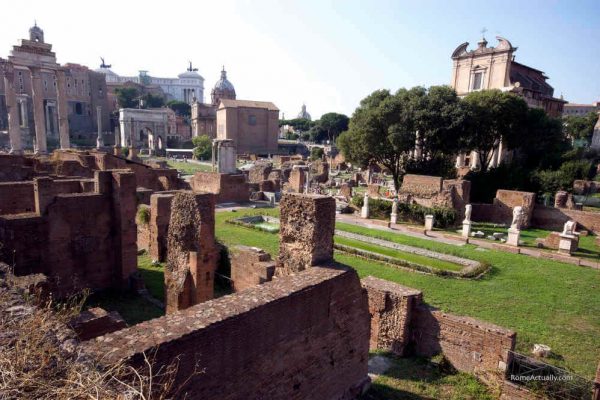
Birthday of Rome, All You Need to Know About the 21st of April in Rome (2024)
Leave a Comment Cancel reply
This site uses Akismet to reduce spam. Learn how your comment data is processed .
Privacy Overview
Public transport & Metro Rome
Getting around in rome: transportation, metro tickets and travel passes.

All information on the metro and public transportion in Rome; bus, metro map, metro tickets and travel passes. Tips for getting around in Rome Italy.
Public transport in Rome
Rome has three metro lines (A to C). During your city break, you will probably only use subway line A and B (Line C is still largely under construction). You have several options for buying tickets at the ticket machines. It is important to know that the same ticket is valid for all public transport (ATAC) including metro, trams, buses (with the exception of the tourist buses) and even a number of regional trains (Trenitalia 2nd class, Roma-Lido, Rome-Viterbo and Rome-Giardinetti). These tickets are not valid all the way to the airport; please read this airport transfer article for more information. You can choose from a number of different Rome subway ticketsy:
- BIT Metro Ticket : This ticket costs 1.50 € and allows you to use public transport for 100 minutes after you stamp it. You are only allowed to make one trip by metro or train.
- Roma 24H Ticket : This 7 € ticket allows you to travel for 24 hours after activation.
- Roma 48H / 72H Ticket : With this ticket you can travel 2 days for 12.50 € or 3 days for 18 €. Tip : You can now also purchase your public transport card (72 hours) incl. Airport transfer online. Buy this Rome Travel Card here .
- The metro is also included in the Roma Pass , which gives you 48 or 72 hours access to public transport including one or two attractions.
- CIS Metro Ticket : With this ticket of 24 € you can travel 7 days.
- The metro runs every day from 5:30 am to 11:30 pm, 01:30 am on Saturdays
- Children up to 10 years old travel for free when accompanied by a paying adult
- Do remember to stamp your ticket (you do this yourself in the buses and trams), or you will risk a fine
- A better map of the center of Rome with the metro stops can be found here .
From the airport to the city centre of Rome
This ' Airport to Rome ' article describes in detail how you can reach the center of Rome from the two airports Fiumicino and Ciampino.
To airport transfers
Public buses
Certain tourist locations, such as Trastevere , are far from the nearest metro stop. There is an extensive network of city buses you can use for these. They use the same tickets as the metro. Tickets (same as for the metro) can be purchased from the ticket machines at the metro and bus stations and at tobacco and newspaper shops. Do remember to stamp your ticket; after stamping it, you can use the bus for 100 minutes and change lines if necessary. The route planner for the city buses can be found here .
Hop-on-hop-off buses & Tourist passes
Hop-on-hop-off buses are a common sight in every tourist city. Rome chose to go with two different companies for these sightseeing and tourist buses. Rome also has a number of different tourist passes that will definitely save you a lot of money. Here is a list of all the buses and tourist passes; pick the one that suits your needs best:
- 1 day Bus Pass 26 €
- 2 days Bus Pass 33 €
- 3 days Bus Pass 39 €
The convenient thing is that you can already book your Hop-on-Hop-off bus tickets online and show them on your mobile phone when you get on the bus. You will not have to stand in line at sales points for tourists and just step on the bus with your mobile ticket nice and early.
- 48 hours 33 € including 1 attraction ( Reservation & info ).
- 72 hours 53 € including 2 attractions ( Reservation & info ).

Partnerlinks: Transport Venetië , Airport transfer Dubai and Granada
Most visited attractions

Top 25 Things to do in Rome

Colosseum & Tickets

Sistine Chapel & Vatican Museums

St.Peter's Basilica & Tickets
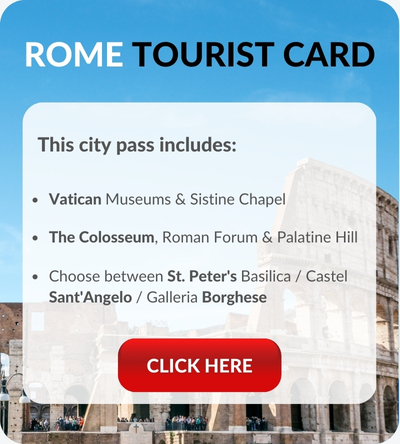

How to Buy Pantheon Tickets in Rome

How to skip the line at St Peter’s Basilica

How to skip the line at the Borghese Gallery

How to skip the line at the Colosseum – 2024

How to skip the lines at the Pantheon

How to skip the lines at the Vatican – 2024

Should I get a Roma Pass?

The best time of day to visit the Colosseum

The best time of day to visit the Vatican Museums | Opening hours 2024

The cheapest way to skip the lines at the Vatican | 2024

What are the official websites to buy tickets for Rome’s major attractions?

Vatican and Sistine Chapel tickets

How to get past Colosseum ticket buying problems – 2024

How do I travel to Rome from Fiumicino airport? 2024

How do I get into Rome from Ciampino Airport? 2024

How do I book train tickets around Italy?

Hop-on-hop off bus tours

August 15th is Ferragosto, a national holiday, and many things in Rome are shut

How do I buy a slice of pizza in Rome?

How do I buy cigarettes in Rome?

How do I mail a letter in Rome?

How do you use the bidet when on vacation in Rome?

How much cash to bring with you to Italy

How to buy vape supplies, e-cigarettes and juice in Rome

How to cross the street in Rome (and live to tell the tale!)

How to get English-speaking medical treatment in Rome

How to order a coffee in Rome

How to visit Rome with children

How to visit Rome’s Olympic Stadium

How to visit the mosque in Rome

The difference between St. Peter’s Basilica, the Sistine Chapel, and the Vatican

The difference between the Colosseum, Roman Forum, and Palatine Hill

What is the dress code in Rome?

What kind of electrical adapter do I need to bring to Italy?
What should I see if I have only one day in Rome?

Where are the best views of Rome?

Where can I buy a used bike in Rome?

Where can I find a wifi cafe in Rome to work in? 2024

Where can I run in Rome?

Where’s the bathroom in Rome?

12 reasons you shouldn’t drive a car in Rome

Avoid common problems with Rome’s public transport

Can I travel to Rome at the moment?

Can I use Uber or Lyft in Rome? 2024

Getting to and from Rome Ciampino airport at night

How do I get to and from Fiumicino Airport (FCO) at night?

How to buy a ticket for Rome’s public transport system using an app

How to get from Rome’s Civitavecchia port into the city

- How to not get pickpocketed

How to use Rome’s public transportation network – with map – 2024

Rome’s “secret” train that gets you across the city in 20 minutes – for only 1 euro

Scooter sharing: renting an electric scooter in Rome
The best way to get from the airports into Rome (and back again)

Aperitivo: Rome’s low-cost drink and food extravaganza

Become a Spritz Specialist and a Pasta Pundit

Beer in Rome

Do I need to tip in Rome?

Food tour in the heart of Rome

Hooch and History: the Tipsy Tour of Rome

How to avoid being ripped off at a tourist trap restaurant in Italy

How to cook perfect pasta

How to eat gluten free in Rome

How to eat vegan and vegetarian in Rome

How to use an Italian stovetop coffee pot

Pasta and Tiramisu class

The truth about sandwiches in Rome

What to order in a restaurant in Rome

What’s the difference between a Ristorante, an Osteria, and a Trattoria?

Why you never need to buy water in Rome
- Where to stay in Rome

Colosseum Arena tour with Forum and Palatine Hill

How to visit the Coppedè Quarter in Rome

Off the beaten track to see the beaten track: Via Flaminia Antica

Orientation tour: self-guided piazza walk

Rome Vacation Tips Eternal City Night Walk

Rome Vacation Tips guided walk of the Baroque City

Rome Vacation Tips tour of the Colosseum, Forum, and Palatine Hill

Rome Vacation Tips VIP Vatican Tour

Self-guided walking tour around the ancient city

Terrifying ghost tour of haunted Rome

The Popes, Domes, and Tombs Tour of St Peter’s

Where can I see Caravaggios for free in Rome?

Basilica di San Clemente: the most interesting historical site in Rome

Guided Modern Architecture Tour Of Rome

Guided Street Art Tour in Rome

Rome’s other “Jewish ghetto”

San Lorenzo in Miranda – a church in a temple

The optical illusion of St Peter’s Basilica from Via Niccolò Piccolomini

Villa Torlonia: ersatz architecture and Mussolini’s home in Rome

Where can I see street art in Rome?

Can I splash in the fountains in Rome?

How to avoid the African bracelet scam

How to get a Covid test in Rome with English language certificate – 2024 update

Special rules for visiting the Vatican during the coronavirus pandemic

What to do in Rome in an emergency

What’s with all the trash in Rome?

Why do shopkeepers in Rome never seem to have any change?
- Book train tickets around Italy
- Day trip to Tuscany
- Day trip to Pompeii
- Things to do in Florence
- Things to do in Milan
- Things to do in Naples
- Things to do in Tivoli
- Things to do in Venice
- How to Vacation in Dublin
- How to vacation in Istanbul
How to get around Rome by public transport
One very cheap fare or transport card allows you to use almost all means of public transport in Rome with the exception of taxis and airport transport. Buses, subway trains, trams (streetcars), and light rail are operated by the same company called ATAC. You can hop on any of their transport using the same ticket. Here’s how.
Where can I buy single tickets for the Rome public transport system?
Tickets are available from machines at all Metro stations. These machines allow you to select an English Language interface (shown by the British flag not the stars and stripes). They take euro bills and coins, but not credit cards even though many of them have a credit card slot. But beware: they never dispense more than €6 in change ( resto )! The machine will happily eat your €20 bill but won’t give any of it back until you’ve bought €14 worth of tickets.
However recently many of the machines won’t accept bills of more than €10. Finally the depressingly common fuori servizio or guasto signs both mean ‘out of order’. All is not lost though: you can also buy these tickets in most tabacchi – tobacco stores, distinguished by the “T” sign outside. Go to the cash register and ask for un biglietto (oon beel-YET-oh) or “ X biglieti ” ([number] beel-YET-ee”) to get the standard 100-minute ticket (below).
Things are changing though: new, orange ticket machines are being rolled out slowly throughout the Metro network that take credit cards and dispense all types of tickets.
Can I use contactless payment in Rome’s public transport system?
Yes, but right now only on the Metro. All turnstiles are fitted with a contactless payment tab that will accept contactless credit and debit cards, as well as NFC-enabled phone payment systems (i.e. G-Pay and Apple Pay).
Tapping your payment method will automatically debit your account by €1.50, granting you 100 minutes’ use of the transport system including one Metro ride.
ATAC claims it will roll out the same “tap-and-go” system throughout the entire system, including trams and buses, but until then you will need a ticket to board these means of transport (unless you’ve already tapped into the system in a Metro station).

Is there an app that I can use to buy tickets?
The “ MyCicero ” app allows you to buy tickets for the Rome transport system.
How to buy a ticket using MyCicero…
Can I get a city card that includes the Rome public transport network?
The most famous city card is the Roma Pass . This gives unlimited access to the city’s public transportation system for 2-3 days, two free entries to major sights, and discounts to museums, though not to the Vatican. However this option does not include airport transfers, the card has to be physically picked up from an office, and some visits still have to be booked in advance. Read more…
What lines can I use my transport ticket or card on?
Lines shown below can all be accessed with the ATAC tickets mentioned below. This includes all the way to the beachside town of Ostia Lido – you can honestly get there for €1.50 each way! Note for the gray lines on the map – commuter rail lines – stations in red indicate the furthest extent of ticket validity: i.e. you can’t use the standard ticket to travel beyond the station in red; after that you would need a train ticket purchased in the originating station. You can also use your ticket on the “FL” main train lines that cross the city , but again only within city limits.
Does Rome’s public transport go to the airports?
Unfortunately the network does not extend to the main Fiumicino Airport. To get to FCO you must take a train or private transport. Read more here…
Ciampino Airport is in fact served by the public transport network, but it is a slow and tricky journey involving bus and Metro. Read more here…
How reliable is public transport in Rome?
It’s not always reliable, but public transport in Rome is cheap and there’s a lot of it. The bad news is it can be slow and subject to delays and strikes .

How do I use the metro in Rome?
Rome’s Metro is simple. It’s just a big X that meets in Termini. There are two fully viable lines: Linea A (red) and Linea B (blue). Linea B splits at Bologna and either goes to Rebbibia or Jonio. Both lines are rather superannuated. The third line, Linea C (green) is partially constructed.
Modern, efficient, clean driverless Linea C runs from Montecompatri way outside the city to join the rest of the network at San Giovanni where you currently have to leave one part of the station and enter another part (be reassured that your single-use metro ticket will allow you to do this) but will eventually cross the entire city.
Locals’ tip: the new part of San Giovanni station has a fantastic display of some of the thousands of artefacts that were dug out of the ground during its construction .
How early/late does Rome’s Metro run?
The first train from each end of the metro lines (see map) is 5.30am every day. The last train leaves from the ends of the metro at 11.30pm on weeknights, and 1.30am on a Friday and Saturday night. That means if you’re in the center and it’s just after 11.30/1.30 you may still be able to catch your metro.
What kind of ticket should I buy to use the Rome public transport system?
There are numerous kinds of ticket available:
- 100 minutes . Probably the best value for money for individual trips, this gives you just over 1 and a half hours to use ANY means of transport mentioned above (although it only allows one ride on the Metro), for the teensy price of €1.50. Note that these are the standard tickets available from the tabaccaio .
- Day ticket . Not recommended. It costs €7 and expires at midnight of the day you buy it. It’s only good value if you take at least five journeys more than 100 minutes apart, which is probably unlikely.
- 48 hour . €12.50. Also poor value: see ‘day ticket’ above.
- 72 hour . Again, a false economy. If you need transport for three days and are sightseeing too then it’s probably worth considering a Roma Pass instead.
- Weekly ticket . Bad value: the price of €24 means you need to make 16 journeys in seven days in order to break even. It expires at midnight on the seventh day, so unless you buy one early in the morning you are automatically cheated out of half a day.
In all of the above ‘daily’ cases, unless you’re going far and wide with many journeys, it’s probably far more cost-effective to fill your wallet with a small stack of 100-minute tickets since they don’t expire and can be rolled over to the next day.
- Monthly ticket. The tessera mensile is amazingly good value at only €35 for unlimited travel. If you’re staying for a while it’s definitely worth considering. However these cards only run from the first day of the calendar month to the last, so if you arrive mid-month you can still buy one, but should probably consider other options. Available from ticket offices in major stations.
- Roma Pass . If you’re touring Rome for three days or so, this is fairly good value. It provides public transport for two or three days ( not 72 hours: it expires at midnight on the third day after you buy it), as well as free entrance to two museums, but not including the Vatican. Read more.. .
How do I validate my ticket?
When you board the Metro or commuter train, you pass through a turnstile that will automatically validate your ticket for you (it prints the expiry time and date on the back of the ticket using the word “scadenza”). However if you take a bus or a tram you have to do the validation yourself – if it is the first time you have used your ticket during its allotted time period. If you’ve already validated it once and it’s still valid, you don’t need to do this, and nor do you need to validate a travel pass such as the Roma Pass .
Note that travelling without a validated ticket can get you up to a €150 fine. Once you have figured out which bus or tram to take – try this website – board the bus and you will note a little blobby machine attached to a pillar at the front and back of the vehicle. Insert your ticket and it will be stamped with the expiry on the back, and you’re good to go. (If the bus is particularly crowded, and you wave your ticket and indicate the machine, the friendly Roman crowd will usually pass it to the machine for validation then pass it back to you!)How do I use the metro in Rome?
Now make sure you don’t miss out: plan your visit in advance:
| Plan your vacation
| emergency.
Read this now >
| Book your hotel
| popular articles.
- How to use Rome’s public transportation network – with map – 2024
- How to skip the lines at the Vatican – 2024
- How to skip the line at the Colosseum – 2024
| Recent articles

Related posts

This website uses cookies to ensure you get the best experience on our website.

Photo credit: AFP
Tickets in advance!
Because of ticket supply problems following the end of Covid restrictions, it is strongly advised that you buy tickets and tours in advance to visit attractions in Rome.
Buy your tickets now to avoid disappointment.
This website uses cookies to improve your browsing experience and analyze the use of the website. Learn More

How to Use the Rome Metro

This post explains the Rome Metro system and how to use it, including tips on how to use the buses, streetcars, and commuter trains.
The information is based on first-hand experiences from our local tour guides in Rome who ride the Metro and buses all the time.
Also, we include some great suggestions and tips from group members of various Rome Travel groups, including our own.
- System Overview
- How to Get Tickets
- Metro (Subway) Info and Tips
- Bus + Streetcar
- Hop-on-Hop-off Bus
- Things to Do in Rome
SYSTEM OVERVIEW
Roma ATAC is the official public transportation system for the city of Rome.
It includes the Metro (subway), buses, streetcars, and commuter trains.
One ticket is good for all four modes of transport, making it easy to transfer from a train to a bus without any issues, and you can buy tickets for multiple days.
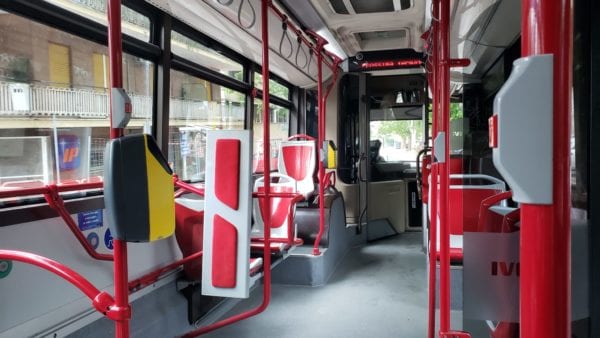
The system offers extensive routes that allow you to explore the city without much trouble.
We have provided route information targeted to visitors in our Metro and bus sections below.
Rome's transportation system is one of Europe's smallest and doesn't cover all areas of the city's central core.
So it's very likely that you will use a combination of Metro, bus, tram, and your feet.
We recommend using an app like Google Maps to test out some trips from your hotel and accommodation to sights that you want to see.
You might find that your hotel or accommodation is within walking distance of many of your to-do-sights and you might only seldom use public transportation.
The system isn't directly connected to Rome's two main airports, so you might benefit from reading the following posts:
- How to get to and from Fiumicino Airport
- How to get to and from Ciampino Airport
As a walking tour company, we highly recommend that you walk as often as you can and if you are able.
Rome's beauty lies all around, but mostly you will find it roaming her small ancient streets on foot.

We provide self-guided walks in the city centre as well as ancient Rome so that you will know where to go and how to get there.
Nevertheless, Rome's public transportation will take you to all of the top spots, including Vatican City , the Colosseum , the Pantheon , the Baths of Caracalla , and the Appian Way .
And whenever you find yourself in a crowded Metro station, train, or bus (or any crowded plaza for that matter), always be aware of pickpockets.
ROME METRO TICKETS
There are several different ticket options for the Roma ATAC system.
All ATAC tickets are good for travel on the train, bus, and streetcars. They are also valid for commuter trains, but only when within Rome itself.

Here are all the different ticket types you can purchase and the price.
Single BIT ticket : €1.50. Valid for one metro ride or 100 minutes on all buses allowing transfers. *These do not expire so you can buy a few at a time and use them as needed.
Unlimited tickets
Roma 24H: €7 valid for unlimited metro, bus, and train travel within Rome for 24 hours from validation.
Roma 48H: €12.50 valid for unlimited metro, bus, and train travel within Rome for 24 hours from validation.
Roma 72H: €18 valid for unlimited metro, bus, and train travel within Rome for 72 hours from validation.
CIS: €24 valid for 7 calendar days for unlimited metro, bus, and train travel within Rome for 72 hours from validation.
TIP : Traveling with children? Children under 10 years old ride for free with an accompanying adult.
If you will be in Rome for more than a few days and expect to use the metro and buses (including from the airports to the city centre), we think that you get the most for your money with the CIS ticket.
With this pass, you will pay less than €3.50 per day for unlimited access to the entire Roma ATAC metro system.
Below we explain how you figure out which ticket type will be the best for you.
Important : Read below about validating your ticket . This is "must-know" information!
Where to buy tickets
Tickets can be purchased at automated vending machines or the ticket booth in Metro stations.
The vending machines do not give more than €6 in change, and they don't always accept credit cards, so have small bills on you when buying tickets.
You can also purchase tickets at tobacco shops and newspaper stands throughout the city.
Tobacco shops (or tabachi ) are usually marked with a blue sign with a big T .
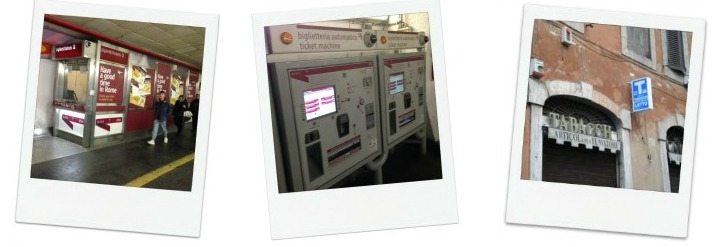
You can also use the contactless payment Tap & Go system to buy a single BIS ticket.
Place your contactless credit or debit card or smartphone with Apple Pay on one of the readers at the turnstile.
Your payment method will automatically debit your account by €1.50 for a BIS ticket.
If you are considering paying this way we highly recommend you read more about the Rome Tap & Go. See the website for details .
How to decide which ticket to buy
You will need to figure out how many rides on the Metro, buses, and trams you, or anyone 10 and older in your party, will make.
We recommend using an app like Google Maps to test out some trips from your hotel and accommodation to the sites you want to see.
Many of your target sights may be within walking distance so you won't be using the metro or buses much.
If that's the case, you might be better off purchasing a handful of single tickets which are good for all transport options within the city.
SHOULD I GET A ROMA PASS?
The Roma Pass is a money-saving tourist pass that includes unlimited access to all Roma ATAC services and free access to either one or two attractions.
Travelers can purchase either a 2 or 3-day pass which will give them admission to all buses, trains, and trams in Rome.
A 2-day ticket comes with one free attraction and a 3-day ticket comes with two free attractions.
- 2-Day Ticket Price: €33 per person
- 3-Day Ticket Price: €53 per person
- Includes unlimited access to Roma ATAC transportation
- 1 free attraction included with a 2-day ticket
- 2 free attractions included with a 3-day ticket
- Click here for additional information .
NOTE: Even if you're not interested in visiting any of the attractions included with the Roma Pass, you can still save money on public transportation using the Rome Metro Card .
This card includes either a 1 or 3-day public transport pass as well as a hop-on hop-off bus tour.
Ticket prices are similar to the Roma Pass, so this is an excellent option for anyone who wants to get around the city with ease.
Validating your ticket
When you use the metro, buses and trams, you must validate your ticket.
When going through the gate, hold your ticket over a yellow dot. The card will be scanned and the gate will open.
On buses and trams, you can validate your ticket by using machines located near the doors when you board.
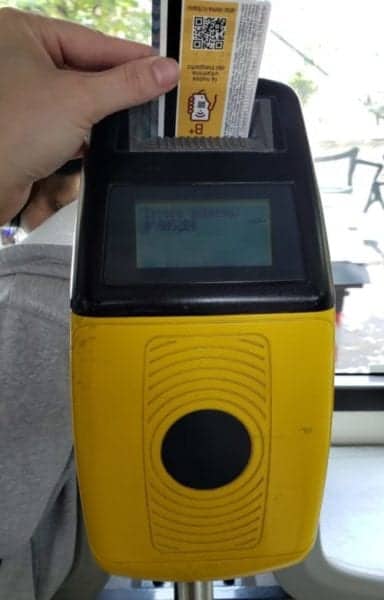
You can be charged up to a €150 fine for riding without a stamped ticket.
When using a 1, 3, or 7-day ticket, you only need to stamp it once.
ROME'S SUBWAY (METRO)
Rome has an efficient, if not very extensive Metro system.
As mentioned above, it's inexpensive. It costs €1.50 per ride on a single ticket ( read more on tickets ).
These tickets can also be used on buses, trams, and commuter trains within the city.
Rome Metro stations are marked with red M signs like the one shown in the image below.

Trains operate between 5:30 am and 23:30 (11:30 pm) from Sunday to Friday. On Saturdays, the system closes at 00:30 (12:30 am).
Trains visit a station every 5 - 10 minutes, depending on a weekday vs. weekend.
Rome's Metro system does not directly extend to Fiumicino Airport or Ciampino Airport.
However, you can connect to the commuter trains that do (read our post on airport transfers to and from Fiumicino ).
The system comprises for the most part 2 main Metro lines, A + B.
There is a C line that is partially finished, but it is not yet connected to either A or B and is of little use for most visitors to Rome.
Part of the reason why the C line is still unfinished is the same reason why Rome's Metros are missing from most of the city center - anywhere you dig is almost assured to be a future archeology site.

Currently, Line C meets up with Line A outside the city centre at San Giovanni , just south of Roma Termini. In the future, Line C will connect San Giovanni to Piazza Venezia and Colosseo .
In the Rome Metro map above, we have placed in orange boxes the Metro stops that interest tourists.
Important Line A Rome Metro Stops
Line A runs from Battistini in the northwest to Anagnina in the southeast. The most important stops are the following:
Termini is the stop for Roma Termini Rail Station.
Spagna is the stop for the Spanish Stairs and Villa Borghese and the Villa Medici, though Flaminio is the closer station for the last two.
Barberini is the closest stop to Trevi Fountain and Via Vittorio Veneto.
And it's not unreasonable to say that Spagna and Barberini could be considered stops for the Pantheon, and Piazza Navona, which are all about a 15-minute walk away from both.
In fact, many walking tour companies start their city centre tours from this stop.
For Vatican City , there are 2 relevant Metro stops on the A line, Ottaviano-St. Pietro and Cipro .
Cipro is closer to the Vatican Museums, but if you don't get there really early in the morning or later in the day (and you don't have a skip-the-line ticket) then you will likely be better off getting out at Ottaviano-St. Pietro.
The lines for the Vatican Museum tickets are legendary for their sheer lengths.
If you are only coming to St. Peter's Square and St. Peter's Basilica, then Ottaviano is the Metro stop that you need.
Before you arrive, test out some paths on Google Maps the paths between your hotel or accommodation to sights in the city that you want to see and determine if riding the Metro makes sense for your trip.
If you take the FL1 local train from Fiumicino Airport, there is 1 stop where you can connect to the B line on the Rome Metro, Roma Tuscolana Station .
Anagnina , which is the southern end of Line A, is where you can take a local bus to Ciampino airport.
Important Line B Rome Metro Stops
Line B runs from the Rebibbia in the northeast of Rome to Laurentina in the south.
Termini is the stop for Roma Termini Station.
Colosseo is the stop on the B line where you can access the Colosseum, the Roman Forum, Palatine Hill and several other ancient Rome sights, such as Circo Massimo.
If you take the FL1 local train from Fiumicino Airport, there are 2 stops where you can connect to the B line on the Rome Metro, Piramide and Roma Ostiense .
As we explain just below, for some hotel and accommodation locations, a bus makes more sense.
Whether Metro, bus, and/or tram, all tickets are good for each.
Depending on where you are staying and what you want to see, you might find that taking the bus is more practical than taking the Metro.
The Metro doesn't run through much of Rome's historic center and buses, including smaller electric buses, are the only mass transit options available.
As the author of this post found out, his hotel next to the Pantheon was too far from the nearest Metro, so he walked and used buses to visit the Vatican, Colosseum and the Spanish Steps rather than the Metro.
Below, we provide text and images to help familiarize yourself with Rome's bus system.
And as you can see in the map below, several bus lines stretch across the city.
Before you get frustrated trying to understand this map, we recommend using Google Maps to plan out some of your trips.
Rome buses are GPS enabled, so Google and other travel apps know where your bus is and if it will be late.

For a larger version of this map, click here .
What you are likely to find is that you will be routed along the major arteries and the system will start to make more sense as you explore.
As a tourist or newcomer to the city, you will want to keep the following 2 types of bus lines in mind.
- Urban Line - The U-line runs through the urban center of Rome. This line will be very useful for reaching most of the major sites and landmarks in the area. U-line runs from about 5 am - 12 am daily.
- Night Line - The N-line runs at night while the U-lines rest. You can expect to use this bus line from 12 am - 5 am daily.
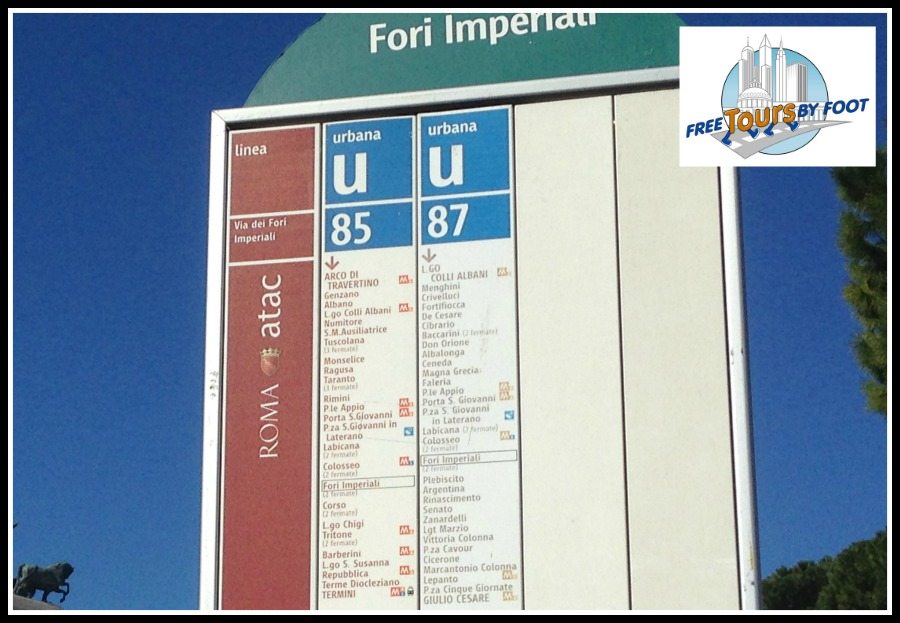
Above is an image of a bus stop sign. This stop is for the Fori Imperiali (the Roman Forum) and two Urban Line buses stop here, the 85 and 87.
There is a good chance that you will take one of these buses.
Underneath the bus line names and numbers are arrows denoting the direction that the buses are heading in.
It also lists all the stops as well as the connecting metro, bus, and other rail lines at those stops.
Some of the most relevant bus lines for tourists are the 60, 62, 64, and 81.
There are two more types of bus lines to note, but unless you are outside of the city, you won't be using these.
- Express Line - The X-line is used to connect Rome with its outskirt communities. Most tourists will have no reason to use this particular service.
- Exact Line - The E-line is used primarily by people in surrounding neighborhoods to travel into Rome. Unless you have a reason to travel to the neighborhoods surrounding this city, we recommend avoiding this bus line.
Tips for Riding the Bus
- You can't purchase tickets onboard the bus. Tickets can be purchased at Metro stations, tobacco shops as well as endicola (newspaper stands) throughout Rome.
- You must validate your ticket once you board. There are yellow validation machines on each bus. Failure to do so will result in a fine of at least €50.
- Children under 10 ride for free.
STREETCARS (TRAMS)
The trams that run throughout Rome aren't as easy to find in the city center area, but they do make stops at several famous locations.
Although we don't recommend relying solely on the tram service, they can be handy for traveling short distances quickly.
Almost every tram line runs along the same route as the bus lines, making it easy to transfer from one service to another.
TIP: The main tram line that tourists will want to consider is #3. The #3 line runs from east to west on the southern end of the city center and makes stops at locations such as The Colosseum and Circus Maximus.
You may also want to consider the #19 tram, as it will take you very close to the Vatican.
For more information, check the Roma ATAC website .
TIPS FROM LOCALS AND TRAVELERS
Here are some helpful tips and suggestions from Rome Travel groups on Facebook like this one .
You can also ask questions about the metro and buses, Roma Passes, and anything else about Rome in our Facebook group, Rome Travel Tips , which consists of locals and travelers eager to share their experiences.
One question that comes up in many Rome travel tip Facebook groups is about where to buy tickets and what kind of ticket makes sense for you. (See above )

If you buy tickets at a metro station, you'll find the kiosks along the wall when you enter the station.
At the airport, the kiosks are by the baggage claim, which is very convenient.

Now that Rome Metro has a Tap to Pay option, many travelers have found this an easier way to buy a ticket. This is if you have a credit or debit card.
Each time you tap, you are paying for one ticket.

For those arriving at Rome Termini Station, the main train/Metro/bus station, this group member explains getting tickets using the kiosks.
Also two very important tips: validate your ticket and beware of pickpockets.

Finally, we remind you again to VALIDATE YOUR TICKET !

RELATED POSTS:
- Ancient Rome
- Visit the Vatican
Choose a Destination... I want them all PLUS general travel tips. Amsterdam Berlin Boston Charleston Chicago Dubai Lisbon London Los Angeles Miami Nashville New York City New Orleans Paris Philadelphia Prague Rome San Francisco Washington DC
About The Author

Stephen Pickhardt
North america, united kingdom & ireland, middle east & india, asia & oceania.
- Where to Stay
- Where to Eat
- Best Time to Visit Rome
- Top 10 Tips for Rome
- Bathrooms in Rome
- What to Pack & What to Wear
Money Matters
Getting Around
Getting to Rome
- Learn Italian
- Can You Travel to Rome Right Now?
- Italy Green Pass - do you need one?
- Rome Coronavirus News & Updates
- Rome & Vatican Tours
- Italy Tours
- Transfers & Transport
- Sign up & get a FREE ebook Subscribe Today!
- Romewise Home Page
Rome Metro How to get around using Rome's underground subway system

By Elyssa Bernard
Dec 13, 2023
The Rome metro ( Metropolitana ) can be a convenient and fast way to get around Rome.
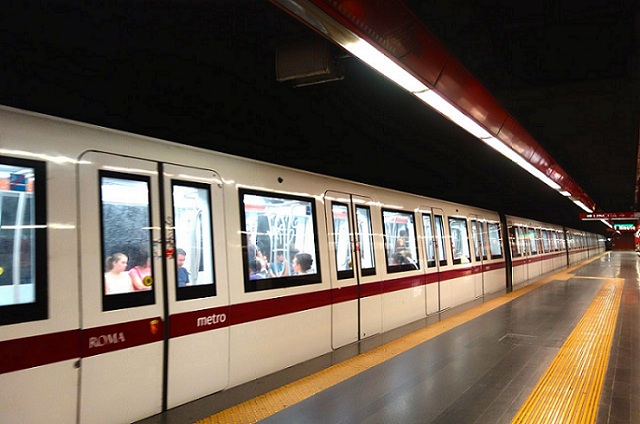
Everything You Need to Know About Using Rome's Subway
The metro system in Rome is really easy to use, and a great way to get around between the sites. Find out:
- where to buy tickets and passes
- which types of tickets to get
- who is eligible for discounts and free entry
- where to get the metro
- where it can take you
- how to use your ticket
Quick Things to Know
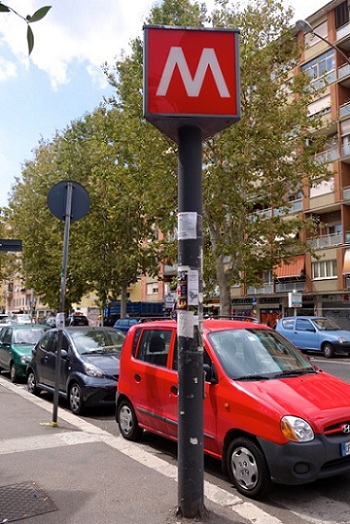
- The metro runs from 5:30am to 11:30pm Sunday to Thursday, and until 1:30am on Friday and Saturday.
- Like any big city with a metro system, this is prime pickpocket territory . Always hold on tight to your stuff, and keep wallets and money out of reach.
- Trains come along about every 3-4 minutes .
- During typical rush hours, and very busy tourist seasons, the trains can be very crowded . I always try to go to the very end of the platform to get on the last (or first) car, in hopes of it being less crowded.
- Most Metro stations may be accessed from multiple street corners. Look for the big M.
Rome Metro Map - Stations
Below is a map of the subway (underground) system in Rome.
The red line (shown kind of orange here), crosses the blue line at Termini.
The green line is the new line C, which is coming along nicely. Where it's dashed, it means it's still under construction.
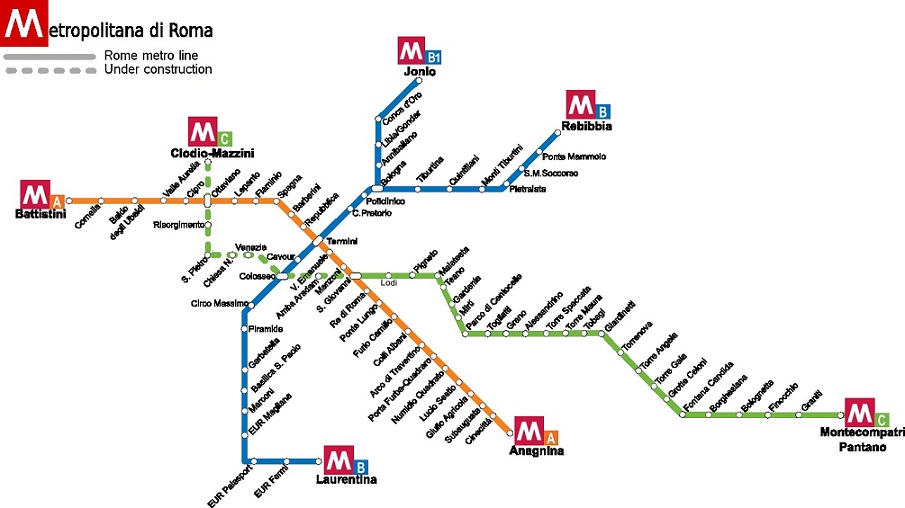
Rome Metro - Where Can it Take you?
The Metro can be very useful for getting to and from certain major tourist attractions in Rome.
The most common use of the Rome Metro is to get from Termini station (the main train station in Rome), to the Colosseum (blue line B, 2 stops) or the Vatican (red line A to Ottaviano, 6 stops.)
But if you look at a map of the Metro superimposed on a Rome city map (below), you will notice that there is a huge section of the center of historic Rome where the Rome Metro does not go. Can you guess why?
Looking for places to stay near the Colosseum? Visit our dedicated page here .
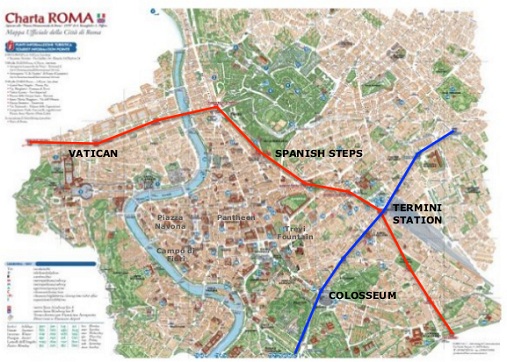
It's full of ruins! Every time they try to dig, they find more ancient stuff.
That said, they are working on a long-term project to add a third line, C, which, among other conveniences, will (one day) take people from the Basilica of San Giovanni to the Coliseum to the Vatican .
For more information, visit the official site of the Rome Metro (Italian only, but there are specific maps of each line if you like.)
From Termini, the red line A also takes you to common stops such as:
- San Giovanni to the southeast (where you can visit another of Rome's four major basilicas, San Giovanni in Laterano , or Saint John in Latern. Also a popular inexpensive neighbourhood to stay while in Rome).
- Barberini to the northwest (easy access to the Trevi Fountain and the via Veneto).
- Spagna to the northwest ( Spanish Steps ).
- Flaminio to the northwest ( Piazza del Popolo , also a tram stop for taking you further north).
🔐 Store your bags and luggage securely! 🧳
We're parterned with Radical Storage who have locations across Italy for you to keep your luggage safe before and after check-in, while on day trips and for everything else between 👌
Click here to book now and use code ROMEWISE to save 5%!
Blue Line B
From Termini, the blue line B also takes you to common stops such as:
- Tiburtina to the northeast (where the newest Rome train station is).
- Circo Massimo to the southwest (the stop after the Colosseum , where you can visit the Palatine Hill , the Aventine Hill and the Caracalla Baths ).
- Piramide to the southwest (so-called because of the nearby Pyramid of Cestius , and from where you may visit Eataly, or get on another local train to Ostia to visit either the ruins there , or the beach ).
- Basilica San Paolo to the southwest ( one of the four major basilicas , this one is worth a visit just to see the images of every pope since Saint Peter, lining the walls all around the interior).
Where the Rome Metro does not go
You will not be able to use the metro in Rome to easily access the Trevi Fountain , Pantheon , Piazza Navona , Largo Argentina or Campi di Fiori , among other important tourist attractions .
It also does not go to Trastevere .
But there are buses and trams so you can use those, alone or combined with the metro...or walk!
If you want to take a taxi, find out all about how to get one and what they cost here .
🤙 Roaming in Rome? 📱
Get yourself an Italian eSIM for calls, messages and data when traveling here.
Save on data charges with plans from just 19€ from Holafly - our recommended eSIM provider!
Click here to get yours now and use code ROMEWISE to save 5%!
Rome Metro and Bus - Passes and Ticket Types
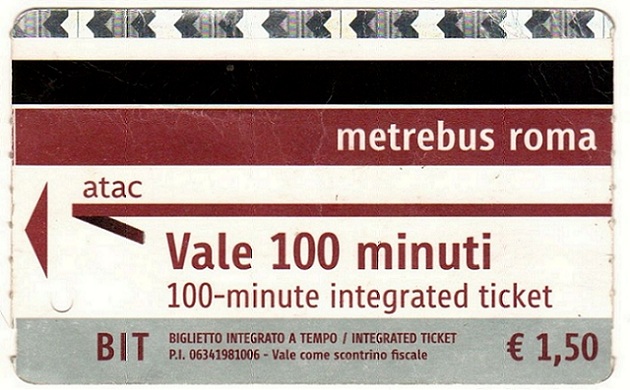
The Rome Metro system (lines A, B and C) is run by ATAC and the Metromare line to Ostia is run by Cotral.
They use the same tickets and you may combine the two systems. For example, you may decide to take the metro from Rome Termini station to Piramide, and from there, take the overground line to Ostia Antica .
- BIT ticket ( one-time use ) - The most basic one-way metro ticket costs 1.50€. For this ticket, you are allowed to change train or bus once (same direction, not round-trip.) It's valid for 100 minutes from the moment you validate it.
- Roma24 - You may also buy a 7€ pass, which is valid for unlimited use for 24 hours from the moment you validate it. So if you will use the bus/metro more than 4 times in one day, this could be worthwhile.
- Roma48 - You may also buy a 12.50€ pass, which is valid for unlimited use for 48 hours from the moment you validate it.
- Roma72 - If you want a 3-day metro/bus pass, it costs 18€. It's good for unlimited bus/metro use around Rome from and including the day you validate it, for 72 hours from the moment you validate it.
- CIS ticket ( 7-day use ) A 7-day pass costs 24€, and is good for unlimited travel on the buses and metro in Rome from and including the day you validate it, until midnight of the 7th day.
- Roma Pass ( tourist package ) - You may also consider getting the Roma Pass, which allows for unlimited travel on Rome's bus and metro system for a 2 or 3 day period, depending on the pass. It also gives you discounted rates to many of Rome's museums and archaeological sites . Click here to visit my Roma Pass page .
For more information, visit the ATAC website, Rome's official public transportation portal. Unfortunately the site does not work well in English.
The perfect 3-day itinerary in Rome
Trying to figure out how to organize your visit to Rome? I've got the perfect 3-day itinerary for first-time visitors (or those who have not been here in a while.) It works for a 2.5 day visit as well.
In my 3-day itinerary, you'll see all the major must-see Rome attractions like the Vatican , Colosseum , Trevi Fountain , Pantheon , Piazza Navona , Spanish Steps , Castel Sant'Angelo , and much more.
And if you have more time, or want suggestions for extra/other things to do, you'll find that there too.
Visit my page with the best 3-day itinerary in Rome for first-timers .
Who is eligible for discounts and free entry
Children 10 and younger may use Rome's public transportation free, as long as they are accompanied by an adult.
There are no discounts for the elderly or for the disabled (unless you are a Rome resident, and purchase an annual ticket).
How to travel for free in Rome:
At the end of 2023, ATAC and Cotral, in conjuction with city hall, announced for that a select number of dates, all buses would be free in Rome.
This is part of a initative to reduce car use in the city, and is likely be repeated.
When planning your trip here, do some research and find out if you can travel for free, and spend the money you save on some extra gelato or spritzes!
Rome Metro - Where to Get Tickets
You may buy several tickets at once. They last for months if not years, until the moment of validation. So if you know you want to have, say, 4 tickets for your stay in Rome, you can just get them all at the same time.
You can buy metro/bus tickets from tabacchi (tobacco shops), or at the green newsstand kiosks you see around Rome, however, since the end of 2023 this has become difficult at times.
This is because of the introduction of new rechargeable/reloadable tickets, designed to reduce the amount of single-use tickets being issued.
You will find machines offering these rechargeable tickets at all metro stations and major bus stops.
Select the type you want (instructions are available in clear English) and follow the on screen info.
To use your ticket, just place it on the little yellow circle on the metro platform barriers. This will deduct a use from your ticket - once you have used up your ticket, return to a machine to recharge it.
You must purchase your tickets before you board any type of public transportation in Rome as it is not possible buy tickets on board .
Ready to plan your trip?
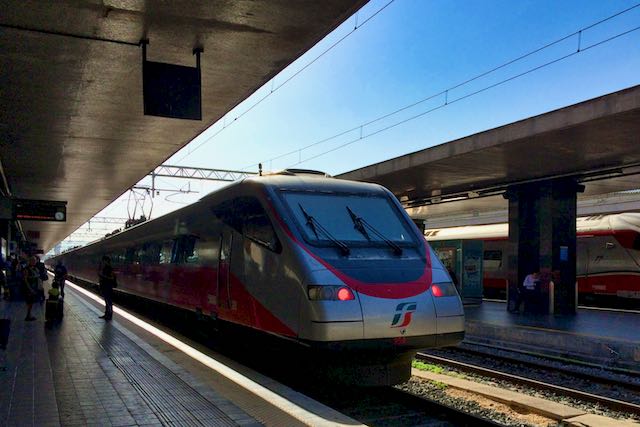
No matter what season you visit Rome, here are 4 things never to leave at home:

Disclosure: If you make a purchase through a link on this page, I may receive a small commission - at no extra cost to you. Thank you for supporting my site!
How to Validate Tickets on the Rome Metro
If you have a single-use ticket, insert it into the machine, with the stripe facing up and the arrow facing into the machine.
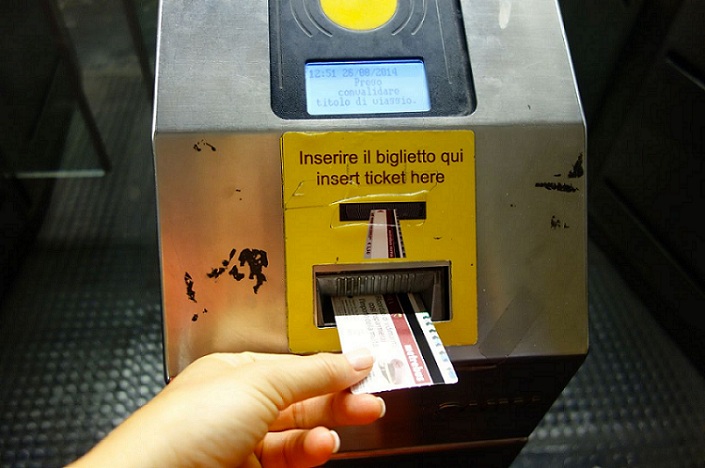
This part is just as important : when the ticket is validated, it pops back up. You must take the ticket with you, and keep it with you until you have fully exited the metro system!
Never enter the metro or bus system of Rome without a validated ticket. You will risk a hefty (60€ minimum) fine. And playing the ignorant tourist will get you nowhere. Trust me I have witnessed this in action.
If you have one of the new rechargeable tickets, place it on the yellow circle at the top of the barrier (you can see this in the photo) above which will validate it.
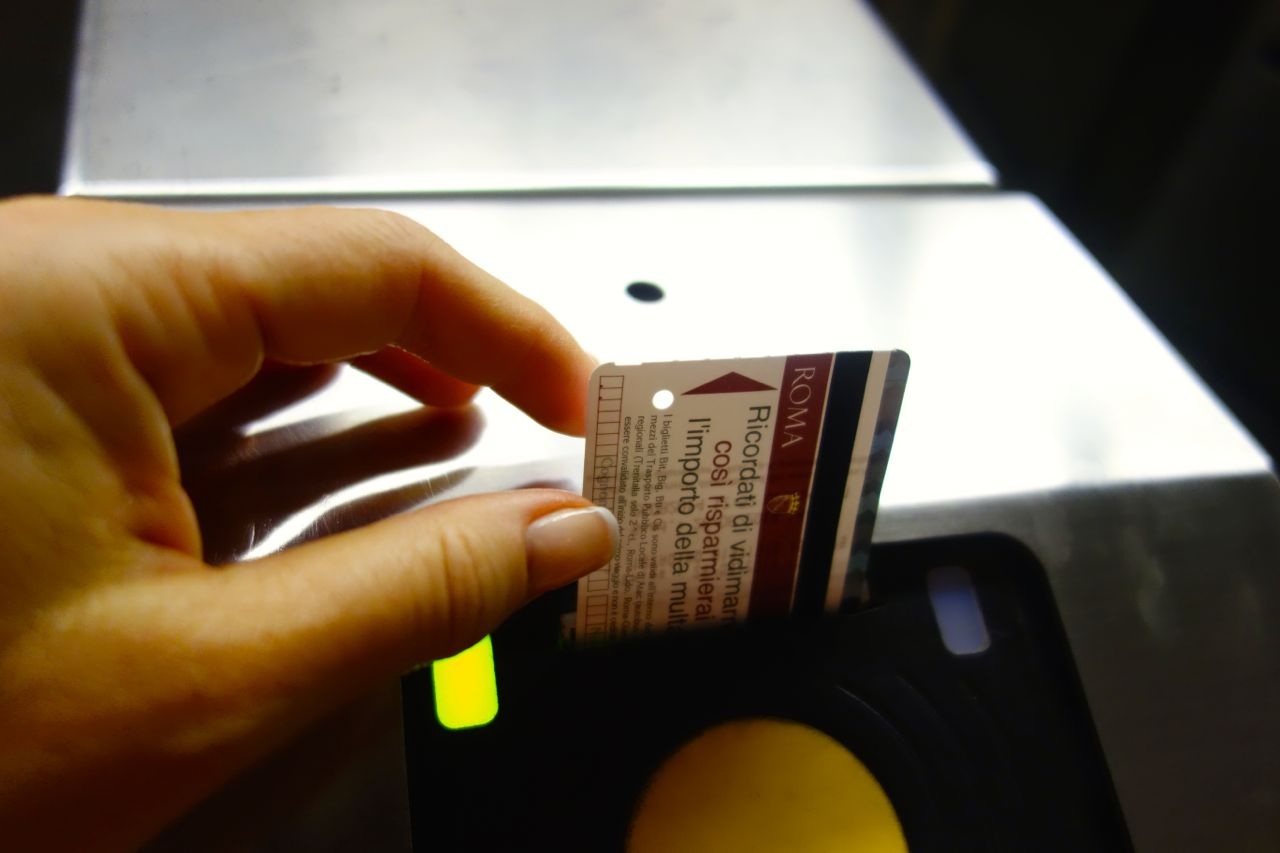
If you have a Roma Pass , press it against the yellow dot also. The gates will open.
Want to save this to Pinterest? Pin it here!
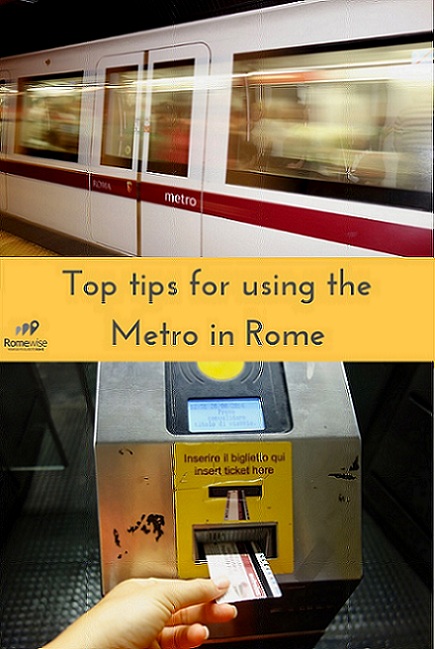
Get your 100% free Rome trip planner now!
Simply sign-up today for our free newsletter and get the Romewise Quick Start guide to Rome:
We are committed to respecting your data. Click for our Privacy Policy .
Comments? Questions? Suggestions?
Please come over to the private Romewise Facebook group and join in the conversation.
You will often find me there, happy to answer your questions / comments!
You will also meet other Rome lovers and experts, too.
What are you waiting for?
Come join in the fun !

Read here about our sponsorship policy
Top attractions and tours

- Colosseum - Don't miss visiting Rome's most iconic monument
- Vatican Museums - This is where the Sistine Chapel is
- Pantheon - Book ahead and skip the line
- Galleria Borghese - You'll need to book ahead for one of Rome's best museums
- Castel Sant'Angelo - See Rome's history through its architecture
- Rome City Pass - A great way to make your Rome visits easier
Disclosure : If you make a purchase through a link on this page, I may receive a small commission - at no extra cost to you. Thank you for supporting my site!
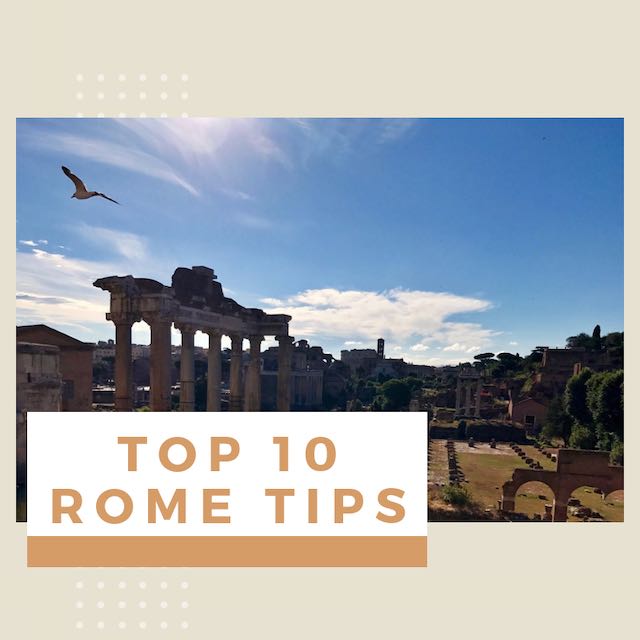
New to Romewise? Start Here
Get the most out of Romewise
Coming To Rome?
Weather in Rome
Accommodation
Already in Rome?
Things to Do
Home | About Me | Privacy Policy | Legal Disclaimer | Affiliate Disclosure | Contact Me
Copyright © 2009-2024 by Elyssa Bernard, Romewise.com | All Rights Reserved.
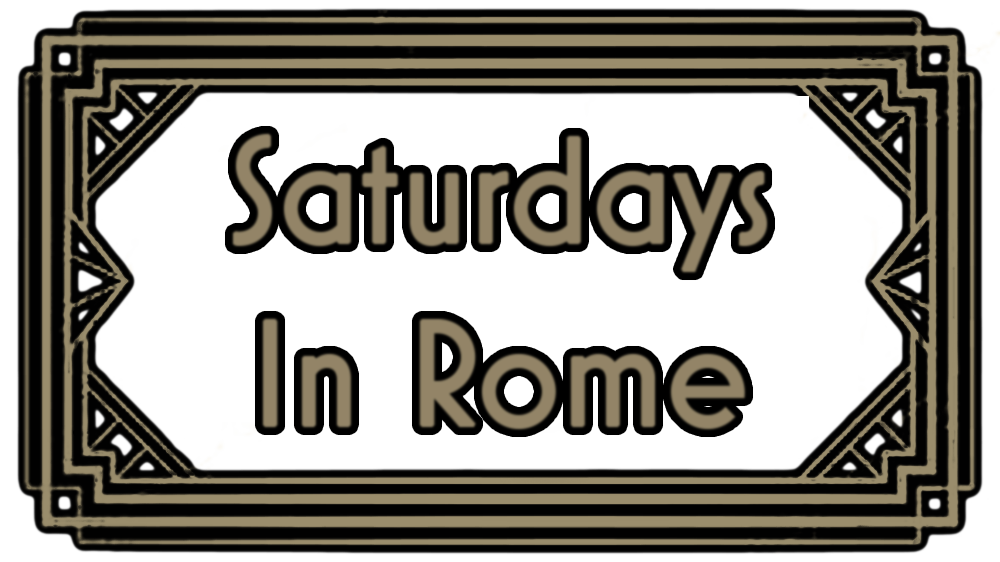
The Rome Metro System Tickets, Prices, Maps and Stations
The Rome Metro System is an important tool for navigating around the Eternal City and beyond and you should refer to this guide when making your travel plans.
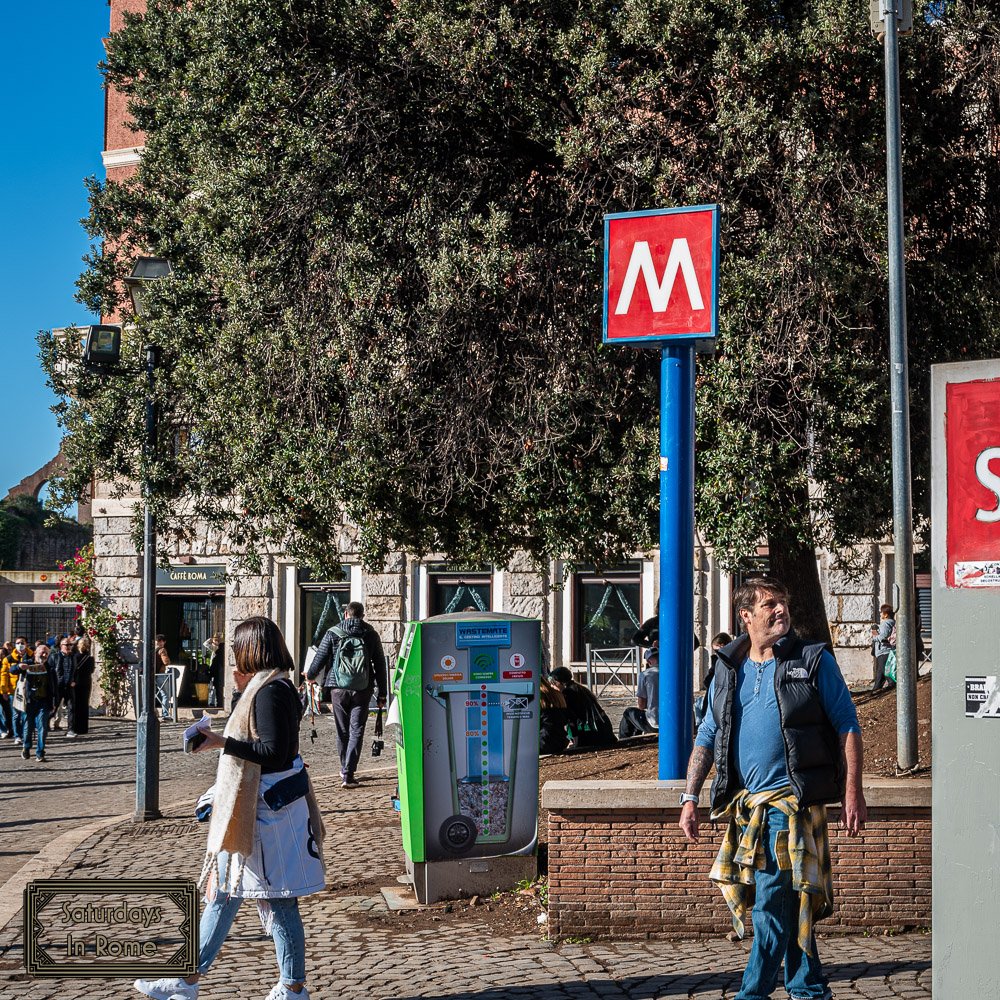
Metro Station Logo
Rome Metro System Frequently Asked Questions
If this is your first time traveling to Rome, you may have some questions about the Rome Metro system, the tickets, maps and how to pay. Hopefully these answers will help you plan a great trip to Rome.
Does The Metro Run 24 Hours In Rome?
No. Unlike other big cities, like NYC, the Rome metro does not run all night. The metro begins, like the bus, at 5:30AM every morning. During the week the metro stops at 11:30PM and on Friday and Saturday nights the Metro system shuts down at 1:30AM.
Is The Rome Metro System Crowded?
The Rome Metro System is popular and is well used, so you can expect crowds during rush-hour and when there is inclement weather, but off-hours and on the weekends, the Metro is not overly crowded and you should expect an easy time getting around the city. The only exception is if there is a transportation strike ( sciopero ), but these are rare by European standards.
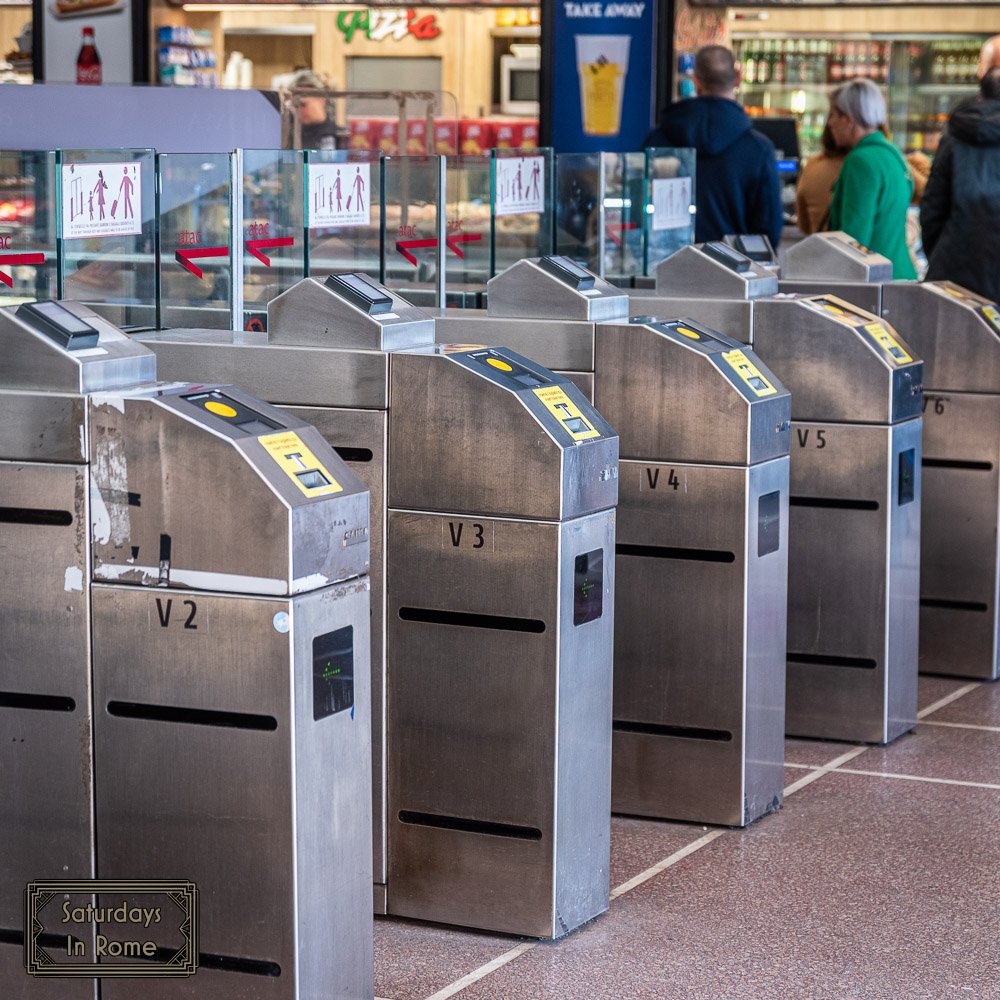
How Do You Pay For The Metro In Rome?
You have a number of options for buying Rome Metro tickets. Some of these options are well suited for tourists, and others are more geared towards locals. Here are your Rome metro ticket buying options:
ATAC Ticket Offices – You can purchase tickets in one of the ATAC ticket offices present along the subway and railway routes. The hours are from 7:00AM to 20:00PM from Monday to Saturday, and from 8:00AM to 20:00PM on Sundays and holidays.
Stores – You can purchase tickets in one of the 2,700 points of sale (news stands, bars, tobacco shops, etc.) in the Rome Capital and Metro Rome, of which approximately 1,000 points of sale are equipped with equipment for the sale/top-up of electronic tickets.
Tap&Go – Purchase directly with a contactless card (credit, debit or prepaid card), or with a card scanned on NFC payment-enabled devices (smartphones and wearable devices).
B+ – Known in Italian as Bipiù , you can purchase and validate your Metro tickets directly from your mobile phone. B+ is a payment method via a SmartPhone app that is developed on multiple platforms. At the moment the apps that can be used are: MooneyGo, Tabnet, TicketAppy, Dropticket and Telepass Pay .
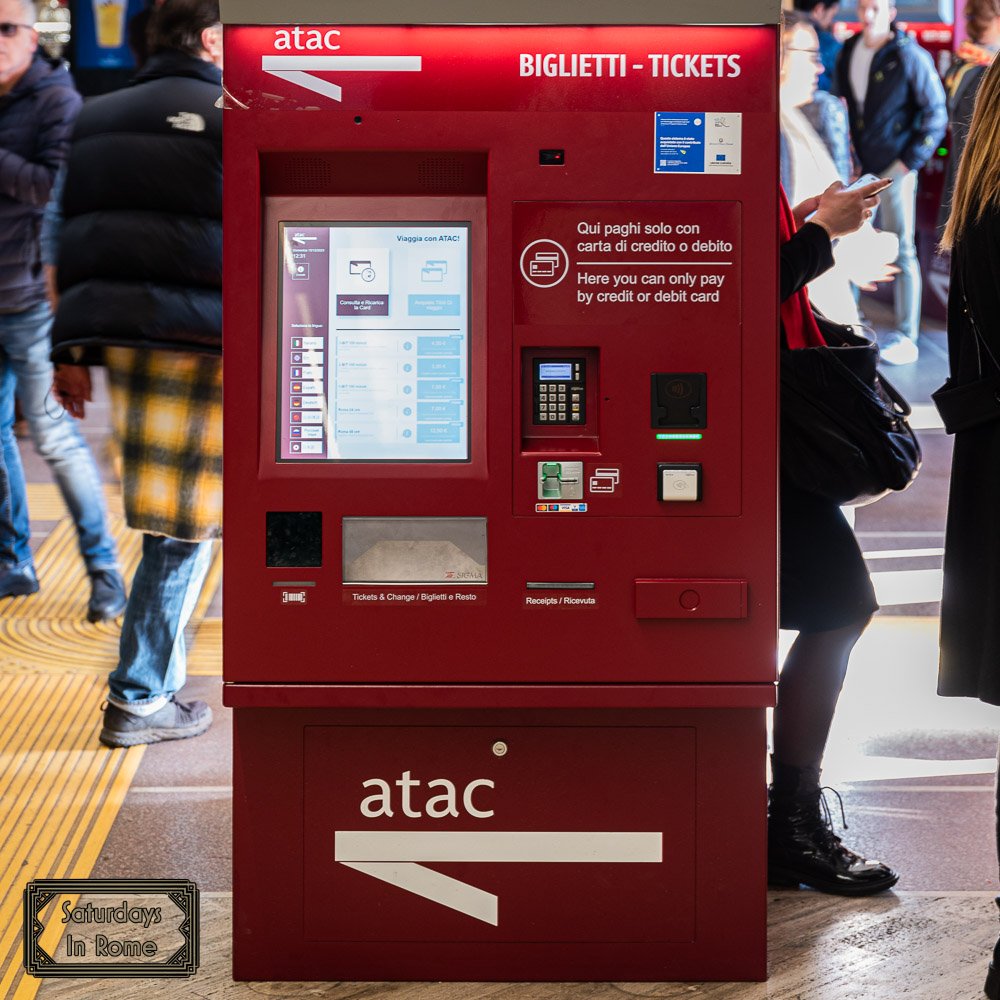
Metro Ticket Machine
Does Rome Have A Good Metro System?
The Rome Metro System is one key part of the municipal public transportation system. The Metro system by itself has only a limited range, so you should plan to use the Metro system in conjunction with the bus, tram and regional train system as well. Using these together can get you anywhere (almost) in Rome and beyond. Using the Metro System by itself can get you around the historical center of Rome, but you might still be walking a bit, depending on your destination.
Is There A Rome Metro System Map?
The Rome Metro System map is integrated with other forms of travel, like with the trams and regional rail lines. Take a look at the ATAC map below, and if you are looking for more maps of Rome, you can find more details on the ATAC maps of public transportation in Rome.
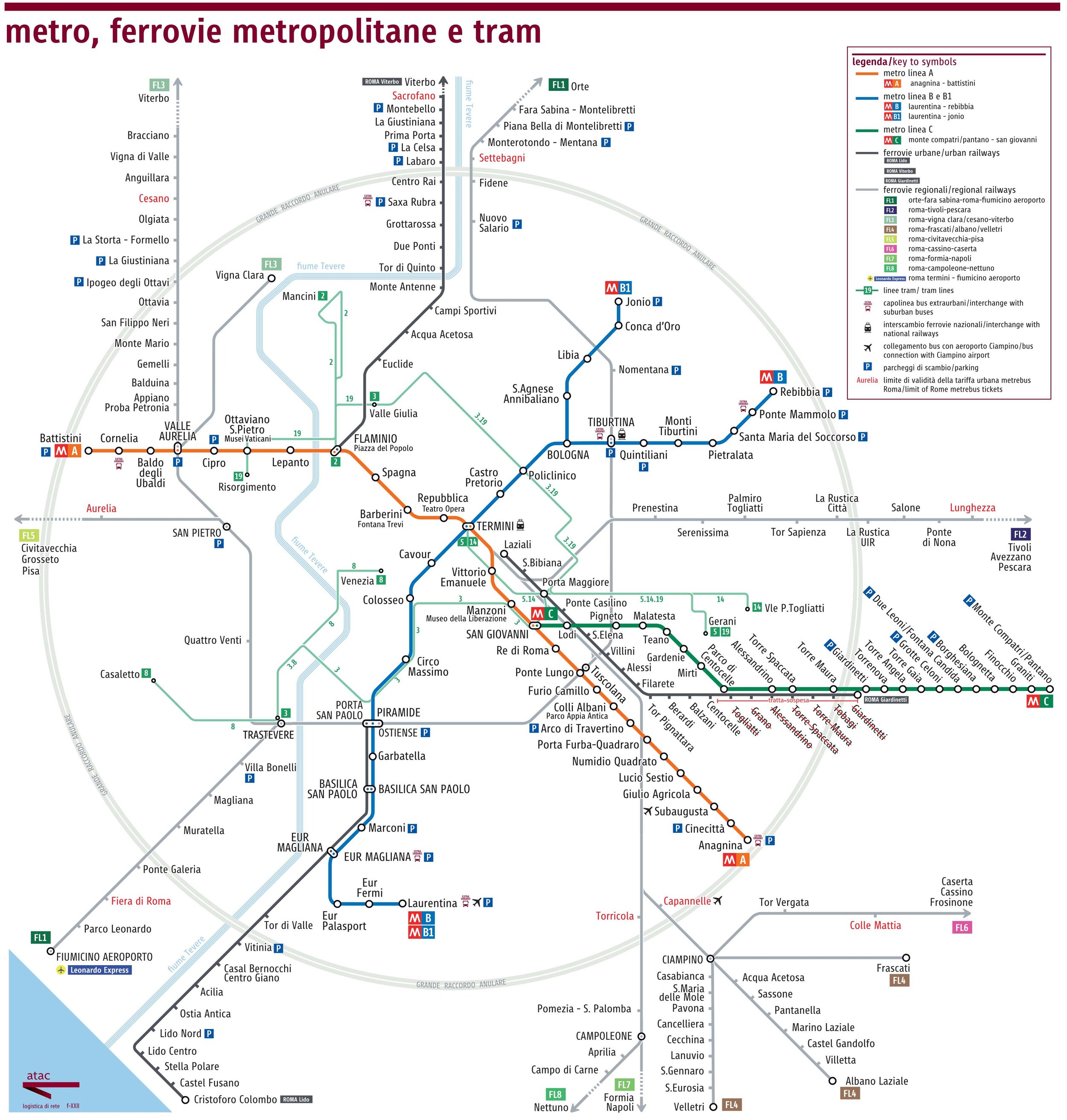
Rome Metro System Map
How Much Is A Day Metro Ticket In Rome?
Rome metro tickets are pretty affordable. You can keep up to date on the changes in pricing, which is rare, on the ATAC website , but as a quick guide, there are the current Rome metro ticket prices:
Can I Tap My Card For The Metro In Rome?
There are two options for tourists to use paperless tickets with the Rome Metro System. Tap&Go are tickets purchased directly with a contactless card (credit, debit or prepaid card), or with a card scanned on NFC payment-enabled devices (smartphones and wearable devices). You can also pre-pay for your ticket using a B+ smartphone app, like: MooneyGo, Tabnet, TicketAppy, Dropticket and Telepass Pay . With these, you scan the QR code or your NFC enabled credit card at one of the specially designated turnstiles in the station and you should be good to go.
Do You Have To Tap Out Of Rome Metro?
Unlike some stations, like we have recently experienced in the Paris Metro, you do not need to hold on to your ticket to exit the station, or “tap out” when your ride is finished. Simply exit one of the available turnstiles and you are free to leave.
Are There Strikes That Can Affect The Rome Metro System?
There are strikes that can affect the Rome Metro System , and these are general city-wide transportation strikes. You should be aware of them because they can affect the subways, buses and trams all at the same time, so you would be limited to walking or taking a cab.
The strikes ( sciopero ) in Rome avoid affecting commuters, so the buses, subways and trams will still run from 6:00AM to 8.30AM and again from 5:00PM to 8:00PM, but all other times will be unavailable.
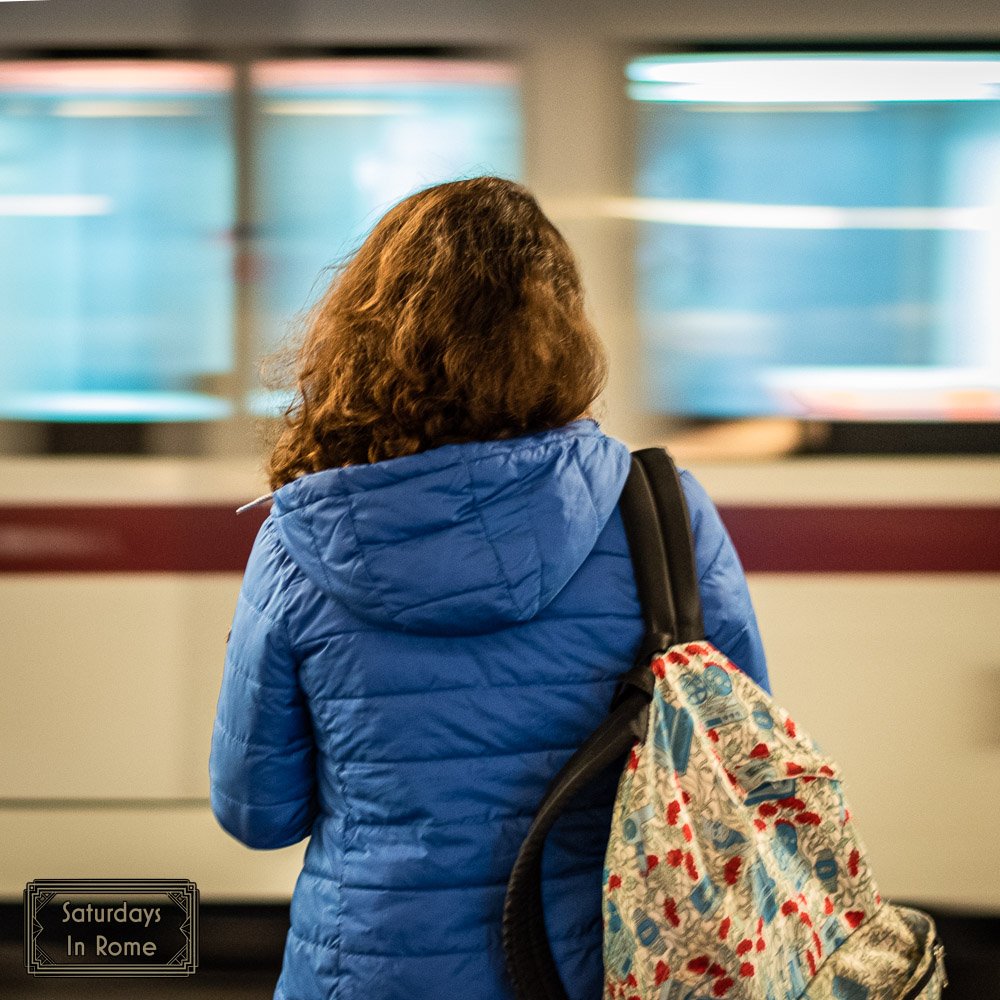
More Information About Getting Around Rome
If you found this information about the Rome Metro System helpful to your plans to come to Rome, here are some other posts that may also help you navigate the city with ease and confidence.
A Taxi In Rome Is Easy To Find With This Travel Guide.
A Rome Scooter Rental Guide For Your Vacation Planning.
Scooters In Rome Are A Problem That Needs Attention.
Your Rome Bike Rental Options Are Easy With This Guide.
Your Leonardo da Vinci–Fiumicino Airport Travel Guide.
Buying A Sim Card In The Rome Airport Is Easy With Our Help.
How You Can Get A Rome SIM Card As Easily As Possible.
Leonardo Express Tickets And Times To The Rome Airport.
Is The Roma Pass Worth It ? This Guide Will Help You Decide.
Vespa Rentals in Rome .
Getting Around Rome By Bus Is Very Easy And Convenient.
Car Sharing In Rome – Useful Facts That You Need To Know.
The Autogrill In Italy Is A Treat On Your Next Vacation.
Train Travel In Italy Has Never Been More Exciting!
Similar Posts
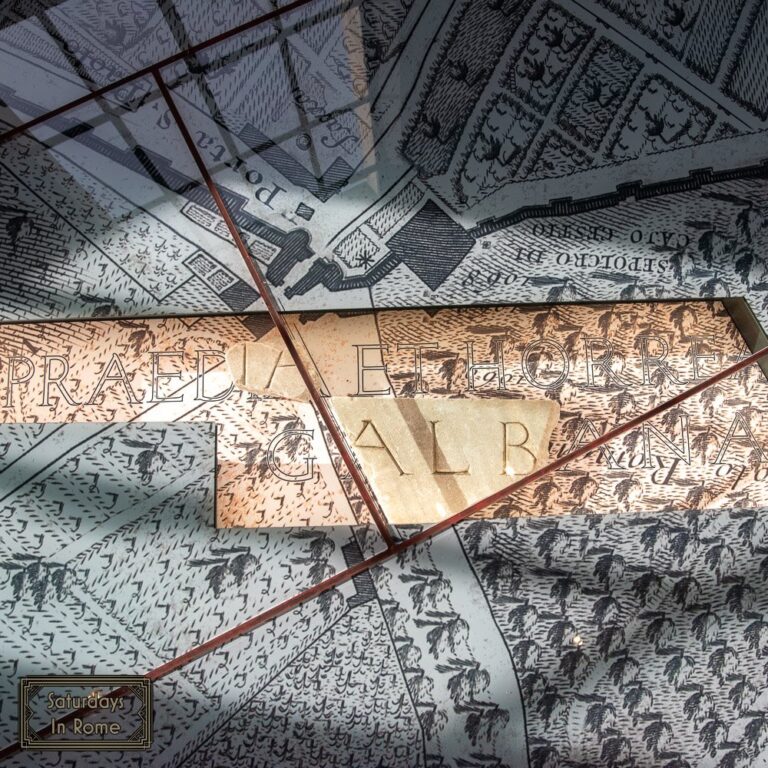
The Museo Della Forma Urbis Is Rome’s Newest Site To Visit
The Museo della Forma Urbis is Rome’s newest museum only steps away from the Colosseum and Circus Maximus and it can easily be a part of your vacation plans.

An Authentic Spaghetti Alla Carbonara Recipe You Should Try
This authentic Spaghetti alla Carbonara recipe is the most delicious dinner idea that will remind you why you and your family need to vacation in Rome, Italy.
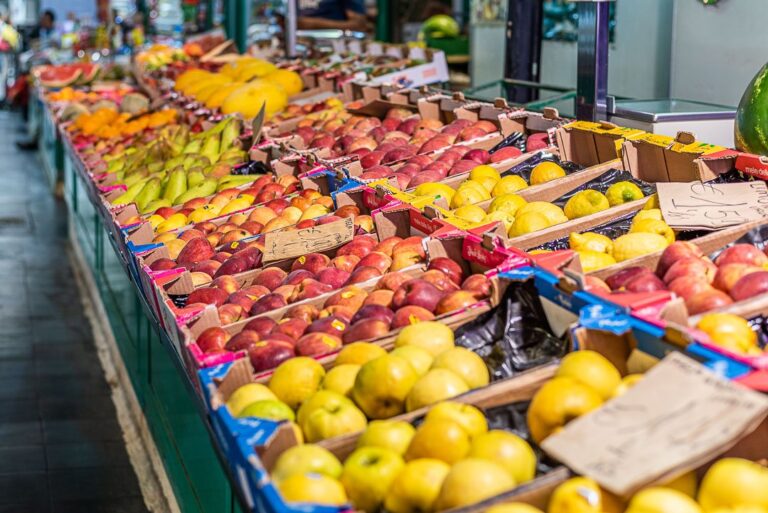
Rome In September – Your Guide For A Perfect Trip To Italy
Rome in September is a beautiful time to visit and this guide will help you plan what to do in Rome while avoiding the large crowds and unpredictable weather.
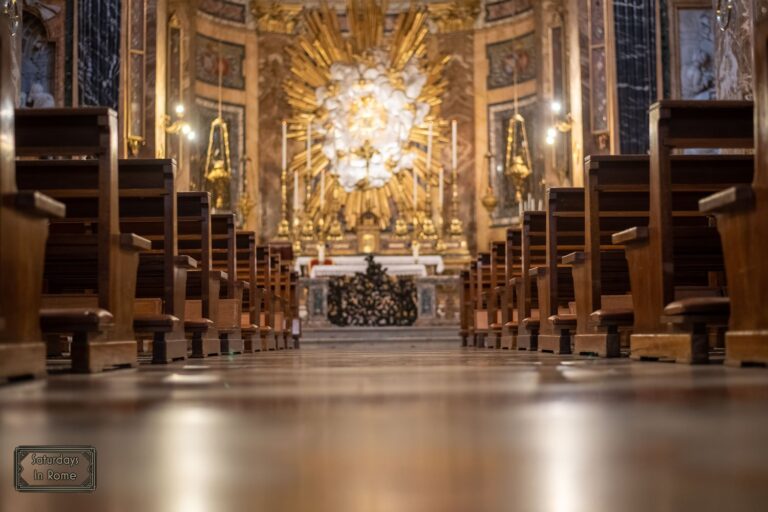

The Church of Santa Maria della Vittoria In Rome, Italy
The Church of Santa Maria della Vittoria in Rome was named in honor of the battle of White Mountain in 1620 near Prague in what is today the Czech Republic.
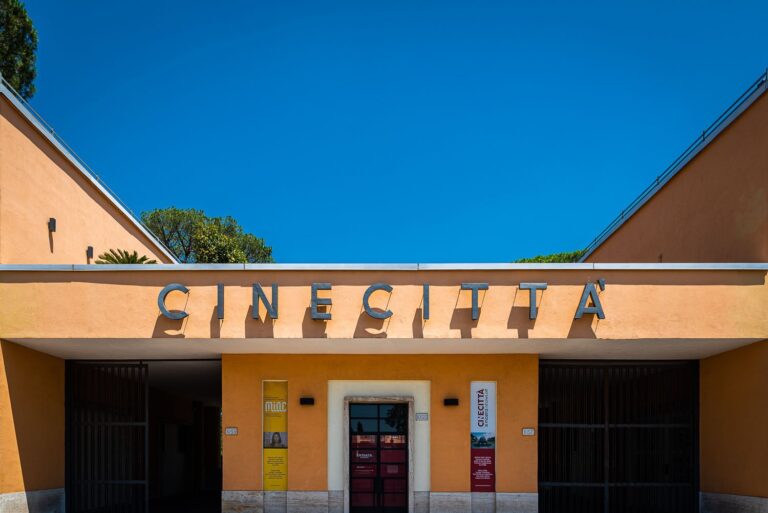
At Cinecittà Studios Lives The History Of Italian Cinema
Cinecittà Studios offers their guests a chance to experience the history of Italian cinema in an amazing lot south of the historic center of Rome, Italy.
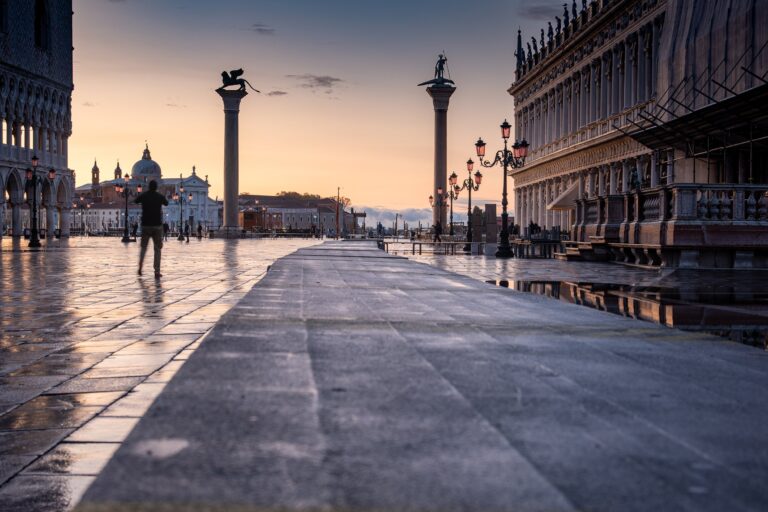
The Venice Visitor Tax Is Something Of Which To Be Aware
The Venice visitor tax has been discussed for years and this complete guide will help you plan your next vacation to Italy with confidence and knowledge.
Rome sightseeing and popular attractions
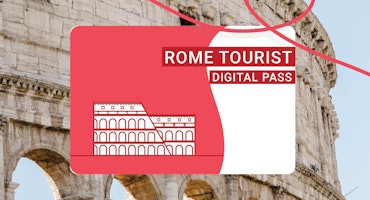
Rome Tourist Card
Snap up the Rome Tourist Card and you'll get everything you need to explore Rome's top highlights including Colosseum, Palatine Hill, Roman Forum and Hop on/off bus. You can even choose the order you see things in.
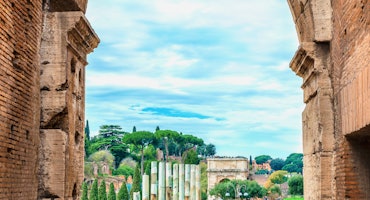
Colosseum, Roman Forum & Palatine Hill: Priority Entrance
Skip the long lines at the Colosseum with this priority-entrance ticket. This ticket will let you bypass the crowds. And after exploring the Colosseum you can head to the area of the Roman Forum and the Palatine Hill.

Vatican Museums & Sistine Chapel: Skip The Line
This ticket will make you save stress and time by allowing you to get priority entrance and skip the line. Visit the the countless masterpieces by Michelangelo, Raphael, Caravaggio, Tiziano and the Sistine chapel.
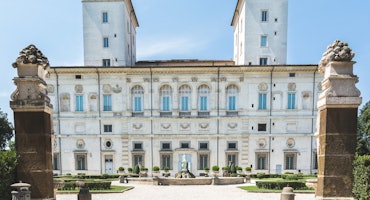
Borghese Gallery: Fast Track
Galleria Borghese is located in the villa of the park Villa Borghese. Admire the architecture and furnishings of this beautiful villa. It is a museum full of art from the Renaissance. The collection includes several sculptures and paintings. Because of limited capacity get tickets for this museum weeks in advance.

St. Peter’s Basilica: Dome Climb with Guide
Get the most out of your visit to St. Peters with a guided tour to climb the basilica’s dome designed by Michelangelo and admire one of the stunning view. After the tour, you can explore the the basilica at your own pace.
The Rome Metro, called Metropolitana di Roma in Italian, is the Eternal City’s main medium of public transport. It began its operation in 1955, making it the oldest system of its kind in Italy. Below, you’ll find a thorough guide to this most essential piece of Rome transportation, with plenty of travel tips and a Rome metro map!
Although Rome is a vast place, its metro is relatively small, and it’s among the smallest among European capitals. Since there’s millennia worth of history in the aptly nicknamed Eternal City, it often happens that excavations for the Rome metro need to stop due to newfound archeological sites. Similar issues occur in other ancient cities like Athens and Mexico City.
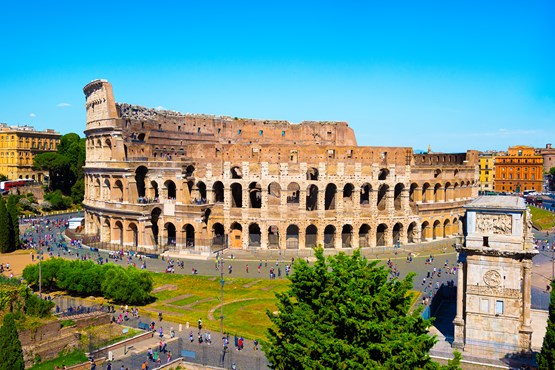
What do I need to know about the Rome Metro?
• Schedule . The trains run daily from 5:30 am to 11:30 pm. On Saturdays they run from 5.30 am to 12.30 am. A train reaches the station every 5 to 7 minutes. • Safety . The metro is generally safe at any time you use it. However, it’s important to keep in mind that Rome is a very touristic city and that leads to pickpocketing. You should take some general precautions to avoid this wherever you are, like being a little more aware of your surroundings. • Lines . Currently, the Rome metro consists of three lines: Line A (red), Line B (blue), and Line C (green). Among them, they operate on 60 km (37 miles) of route within the city, with 73 metro stations. • Tickets . You can purchase tickets inside Rome metro stations, as well as newsstands and many corner shops. The best plan if you’re looking to use a lot of public transportation is to buy a travel card. • Prices . At the moment of writing, you can find tickets ranging from €1.50 one-way tickets to annual passes of €250.
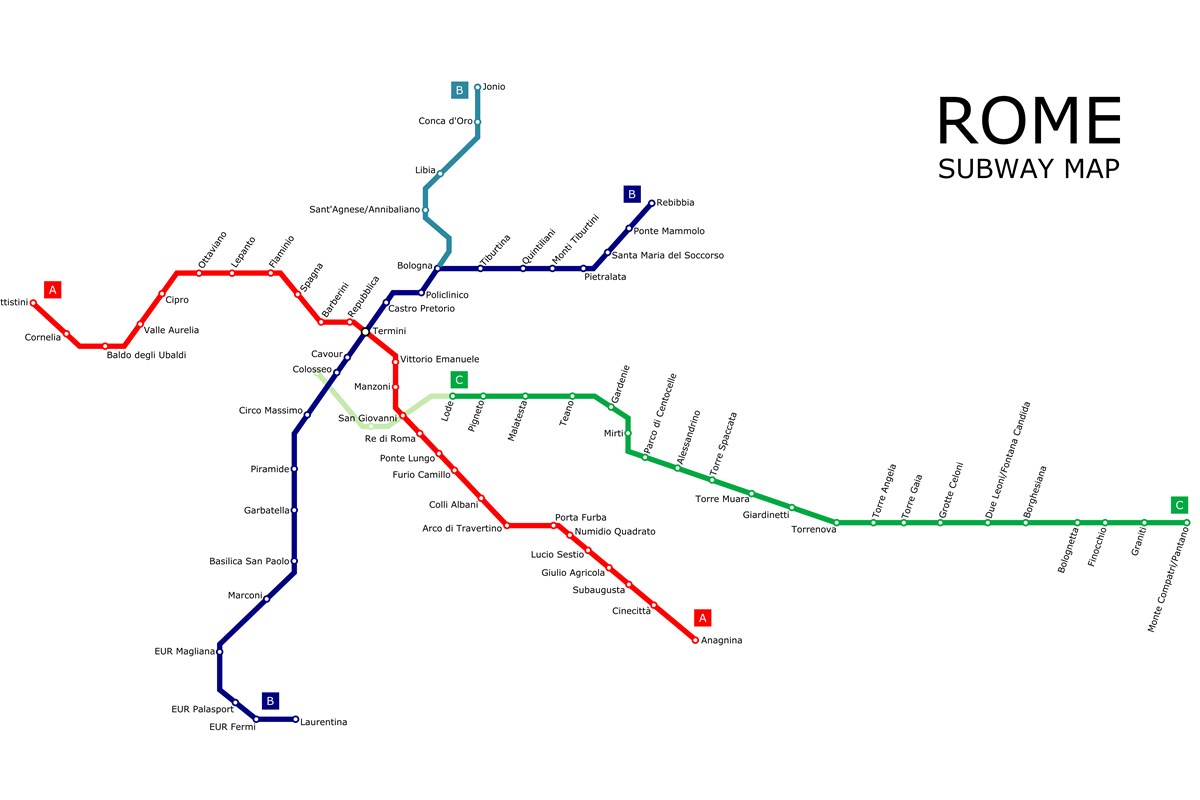
What will I find on Rome metro lines?
Seeing as it is quite small, navigating the Rome underground is very straightforward. The main thing to remember is that Roma Termini is the connection point between lines and just about every other transport in the Eternal City. That includes airport transfers. Line B has a branch that leads to Fiumicino Airport; if you arrive from Ciampino, you can take a city bus to Anagnina and then the metro.
Out of the three lines, only A and B are completed, while the plan is for Line C to be finished in 2022. However, there have been several delays due to new discoveries during excavations. Rome has many layers, even underneath the earth, so it can be difficult to navigate maintaining the city’s legacy while also creating modern new metro lines.
Below, you’ll find a quick guide of which metro stations will get you closer to important landmarks. The two completed lines, Line A and Line B, are the ones that pass through the most landmarks, and both connect to Termini. Line B is the one with most stations connecting to Ancient and Imperial Rome sites. Meanwhile, Line C goes through more areas of interest to locals.
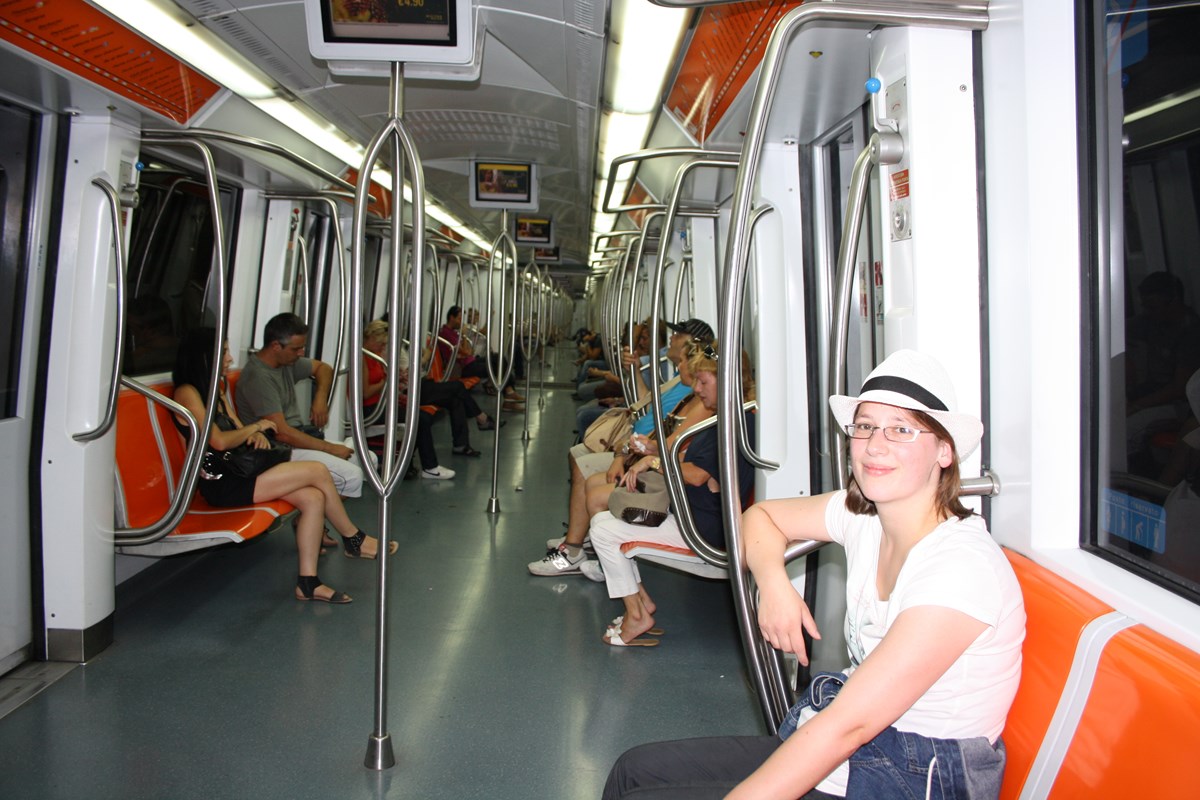
Ancient Rome Landmarks
- Colosseum . The quickest way to get to the most famous Roman landmarks is by getting out at the Line B Colosseo It’ll leave you on the landmark’s very block. As it’s near the Colosseum, this station will also get you pretty near the Roman Forum .
- Circus Maximus . The nearest station is named after the landmark, so you can’t miss it: Line B’s Circo Massimo .
- Pantheon . Walk towards the Pantheon from Barberini , on Line A.
- Pyramid of Cestius . Get out at Piramide on Line B to see this peculiar landmark.
- Trajan’s Market . Get out at Colosseo on Line B to reach this landmark.
- Palatine Hill . It’s next to the Roman Forum and the nearest station is Circo Massimo , on Line B.
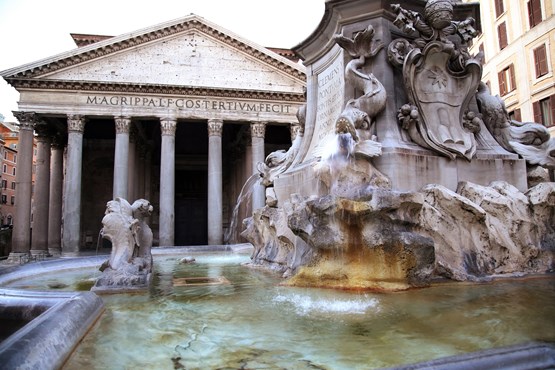
Famous Piazzas and Fountains
• Fontana di Trevi . You can find the most iconic of all Roman fountains on Barberini station, on Line A. The station will also get you close to other famous fountains like the Fontana del Tritone and the Quattro Fontane. • Spanish Steps . The closest station is on Line A and you cannot miss it because it is named after the landmark, Spagna. Piazza di Spagna is at the bottom of the steps, so you’ll reach it through the same station. • Piazza Navona . The nearest metro station is also Spagna on Line A. • Villa Borghese . Line A’s Flaminio will get you close. It’s also near Piazza del Popolo and Pincio Garden.
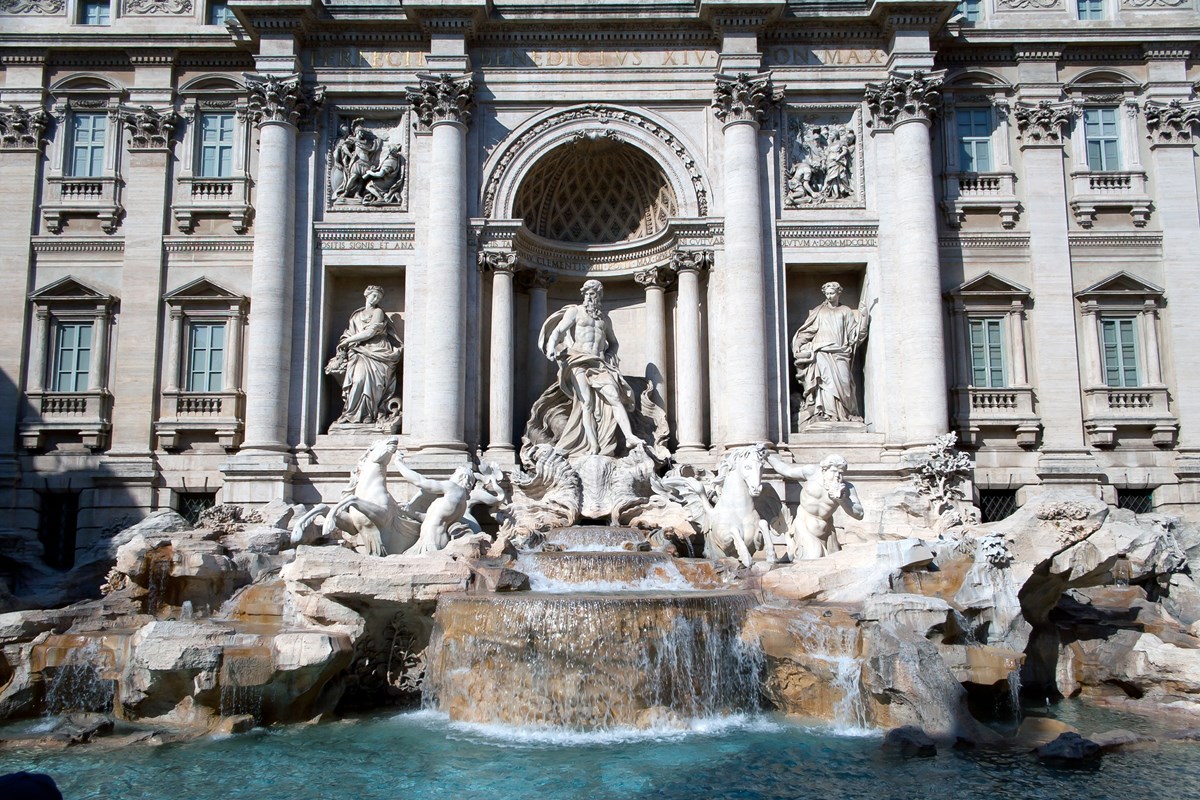
Roman Churches
- Vatican City. The Line A Ottaviano – San Pietro stop will get you the closest to Castel Sant’Angelo, St. Peter’s Basilica and St. Peter’s Square.
- Vatican Museums. While you can reach the whole of the Vatican from Ottaviano, if your focus is the Vatican Museums and the Sistine Chapel, Line A’s Cipro – Musei Vaticani is your best bet.
- Santa Maria Maggiore. Reach this Papal major basilica getting out at Termini station, on either Line A or Line B.
- John Lateran Basilica. You can also reach another papal major basilica on the metro by getting out at San Giovanni , on Line A and Line C. The station is also near the Basilica di Santa Croce in Gerusalemme .
- Saint Paul Basilica. A third papal basilica can be reached through the metro by getting out on Line B’s station of the same name, Basilica San Paolo .
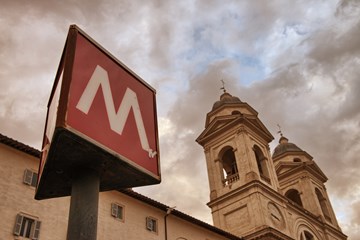
Everything you need to know about the Rome Metro Card
Tickets can be used for all public transportation in Rome: metro, buses, trams and some trips within nearby suburbs. Here are the types of Rome metro tickets: • B.I.T. standard ticket (€1.50). Valid as a one-way metro ticket or 100 minutes on buses, with transfers. • 24-hour ticket (€7). Unlimited trips on all public transportation within the Eternal City during 24 hours counting from the first validation. • 48-hour ticket (€12.50). Unlimited trips on all public transportation for 48 hours counting from the first validation. • 72-hour ticket (€18). Unlimited trips on all public transportation for 72 hours counting from the first validation. • C.I.S. (€24). Valid for 7 days from the date of the first validation. • Monthly pass (€35). Valid for one calendar month. • Yearly pass (€250). Valid for one year.
Did You Know?
In an effort to become more environmentally conscious, the Rome metro has come up with a nifty solution: free rides for recyclers. Starting in 2019, locals can add bottles to recycling machines on the metro and receive tickets from them.
It takes 30 recycled bottles to earn a one-way ticket, so it’s mostly directed at locals and expats living in the city. There are two city-approved apps for this, MyCicero and TabNet, both of which keep track the number of bottles you’ve added to the machines.
The program remains experimental, so it hasn’t been implemented city-wide. You can find the machines on metro stations Piramide (Line B), San Giovanni (Lines A and C), and Cipro (Line A).
Where can I buy tickets to the Rome metro? You can purchase tickets inside the stations, corner shops and newsstands throughout the city.
Which metro station is near the Colosseum? Colosseo station, on Line B, will leave you exactly on Rome’s most famous landmark.
How big is the Rome metro? It’s one of the smallest metro systems in Europe with only 73 stations.
Does the Rome metro work 24 hours? It does not. Trains run between 5:30 am to 11:30 pm from Sunday to Friday. On Saturdays, the schedule changes to 5:30 am to 12:30 am.
You might also like
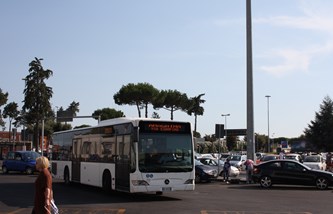
Public Transport in Rome
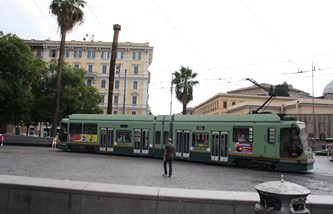
Trams in Rome
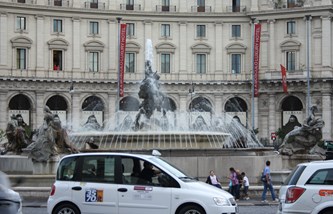
Taxis in Rome
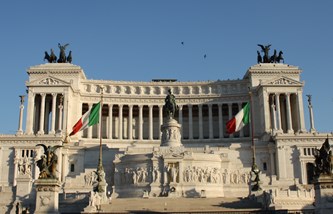
Monument of Victor Emmanuel II

- Things to Do in Rome
- Where to Stay
- Rome Restaurant Reviews
- Day Trips from Rome
- Shopping in Rome
- Explore Italy
- Life in Italy
- Practical Information
Practical Information , Public Transportation , Rome
Complete guide to the rome metro (subway) + map.

Planning to get around Rome using public transportation? Then you should definitely become familiar with how to use the Rome metro system.
The underground subway is certainly not the most extensive system given the size of the Eternal city, BUT if your destination is near a metro stop, then Rome’s underground is one of the fastest ways to travel.
During the day, metros come approximately every five minutes. On nights and weekends, the wait for the next metro can be up to ten minutes.
Rome has three metro lines (A, B, and C). The two main lines are A and B which cross at only one point at Termini station. Then, B splits in B and B1 (so be sure to double check if you need to travel beyond Stazione Tiburtina). Finally, Line C serves some of the Roman suburbs, and it now connects with line A at San Giovanni. The long-awaited station finally opened in May 2018.
Rome’s Line C is shown in dashed green on the map because not every station is complete.
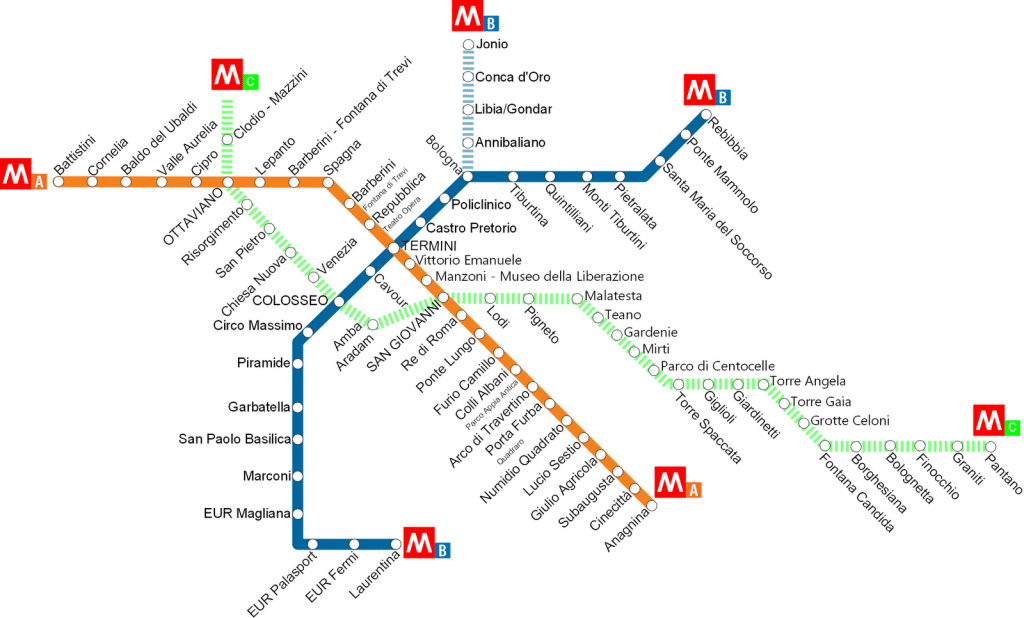
An official Rome metro map is available from ATAC here . (However, please note that the Rome metro is only composed of the lines described above and the map also includes regional trains, such as the FL1).
In order to take the metro (called la metropolitana in Italian), first decide what line you need to use and then understand what direction you need to travel in. The train directions are based on the terminal station at the end of the line.
So that means, for example, if you want to go from Termini to the Vatican, you need to take Metro A in direction Battistini.

Metro tickets are interchangeable with bus tickets. They can be purchased at machines at all metro stations (though you should have change in coins if you would like to do so). These metro stations have self-service machines where you can buy single ride tickets or opt for 24 hour, 3-day or 7-day passes.
Tickets can also be purchased in advance from tobacco shops and newspaper stands. They are validated when you pass through the gate to the metro, and you should hold on to your ticket until you have fully exited the next station because you may be asked to show proof of purchase.
Tickets cost €1.50 are valid for 100 minutes, so it is possible to take the metro and then to take a bus or tram with the same ticket within that time period. However, each ticket is only good for one metro trip, so you cannot reuse it to return, even if you fall within the 100-minute limit. (Here is more information on bus tickets in Rome, which also applies to metro tickets).
If you don’t want to worry about time limits and expired tickets, RomaPass holders have unlimited use of the metro for as long as the pass is valid.
The Rome metro is open from 5:30 am to 11.30 pm but stays open until 1:30 am on Friday and Saturday.
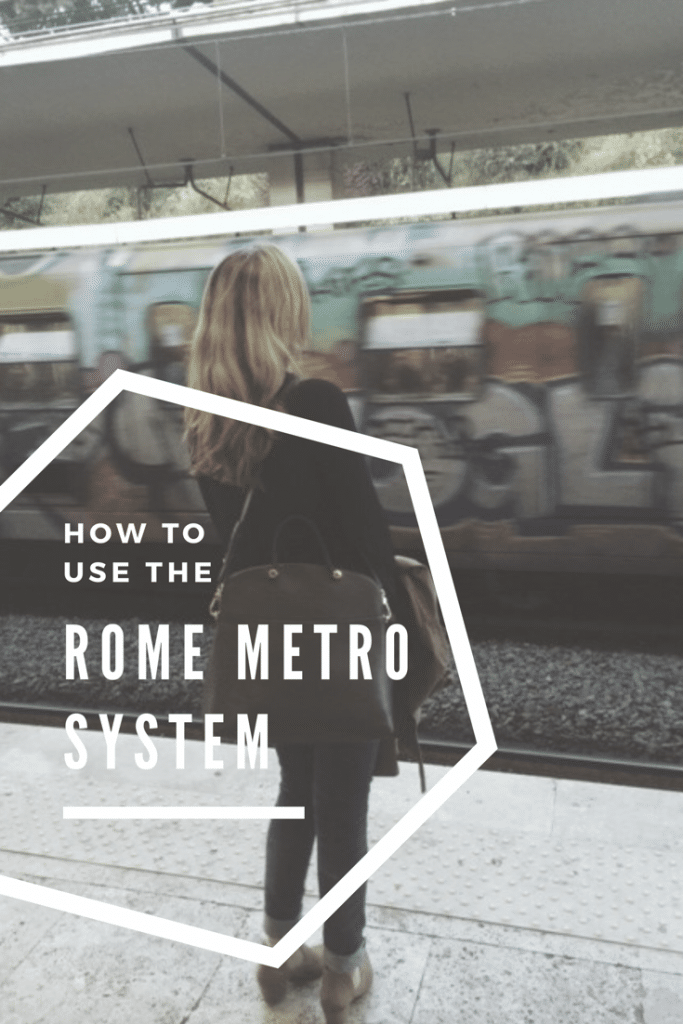
Rome’s metro still leaves some things to be desired. While some of the trains have been upgraded to sleek and modern subway cars with AC during summer, others remain covered in graffiti.
Please also be prepared for crowded trains during rush hour, and watch out for pickpockets that like to take advantage of the packed space.
Do you have any questions or tips for using the Rome metro system?
P.S. You can find this kind of information on the Discover Rome app for iPhone and Android .
Please note that the link to purchase a RomaPass is included for convenience and is an affiliate link. RomaPass can also be purchased in person at official outlets in Rome.

Natalie is a food and travel writer who has been living in Rome full time since 2010. She is the founder and editor of this blog and prefers all of her days to include coffee, gelato, and wine.
34 thoughts on “ Complete Guide to the Rome Metro (Subway) + Map ”
I found the Rome metro pretty easy to use, but it definitely wasn’t an extensive as metros I’ve encountered in other cities. Still though, when traffic was terrible, the metro definitely saved us some time.
That’s a great summary of the system – perfect for passing traffic but won’t get you everywhere!
Pingback: Rome- some nuts and bolts – Rome in Winter
Pingback: How to use Rome’s metro – almost Rome
Excellent information. I’ve checked out the map and fortunately takes me right where I need to go for most sites. I’m still not sure what to say at the stand to get a ticket…but I will learn quickly!! Also, wondering if Credit Cards are widely used in Rome for transportation and other things.
How about taking tours from milan to switzerland?
I have not had a chance to try that yet!
A very helpful summary and great link to the RomaPass. For a first time visitor preparing, this was a great article!
I’d like to use the Metro when I visit Rome however I cannot find help to figure out where to get off to sites I wish to see. For example, Traveling from my hotel to the Vatican…how can I find where to get off the M? I can figure out that I want to travel toward Battistini on the red line but again…which stop puts me closest to my desired site? Capitoline? Palatine Hill? Please help. Thanks
Hi Doug! You want the Ottaviano stop on Metro A. For the Colosseum it is Colosseo. Colosseo is also the closest stop to some of the monuments in the historic center, including Capitoline and Palatine. However, the Capitoline is closer to Piazza Venezia which does not have a metro stop but it is one of the biggest bus stops in the city.
what about staying in the Trevi Fountain area? What would be the best way to travel there from Termini
Ciao! The closest metro stop to the Trevi Fountain is line A – Barberini
Hi, I was wondering about the accessibility of the Metropolitana? My son is a wheelchair user. Thanks.
Ciao Wendy! It is not great but it should be possible. There are elevators at most stops but the problem is that they do not always work. At the stops that do not have an elevator (like the Colosseo) there is a wheelchair lift – but again, I would not trust these to be operational. There is also a small gap between the platform at the metro, but this shouldn’t be as big of an issue as the stairs.
Ciao! Thanks for the informative article. We will be traveling from the cruise port at Civitavecchia. Would we take a train to Termini then transfer to Line A to get close to the Vatican or can a person purchase one ticket from the cruise port for Line A? Thanks
hi! you will need a metro ticket because you are switching from the train to the metro. You can get off at Termini and catch Line A there. Ticket machines are available at the entrances
Would it be possible for you to explain how transfers are done within metro between lines A, B and C, please. Are they made on the same ticket?
Hello! Yes – metro transfers in Rome are all done on the same ticket without leaving the station. To switch from A to B, get off at Termini and follow the signs to the other line. The same can be done from B to C at San Giovanni.
Is the RomaPass the same as the hop on/hop off passes I see advertised everywhere?
Hi! No, the hop on hop off buses are run by different private companies and have their own routes around the city. They are easy to spot, but you can only use your ticket on the one particular company bus.. not the city buses.
So where is labinaca on the metro maps?
Via Labicana is a street rather than a metro stop. The two closest metros are Colosseo (B Line) and Manzoni (A line)
I am trying to get from the Termini Roma to Piazza Venezia by 8am but can’t seem to find a bus that goes then I am planning to go from there to the Gallery Borghese. I am buying a 7day pass. Can you help me find my way . I will be in Rome Sept 3 to Sept 9th 2019 thank you
Hello! You don’t need to go to Piazza Venezia first. You can take the 910 bus from Termini and get off at Pinciana/Museo Borghese. Buses tend to leave every 15 minutes. I
I am trying to take the bus from Piazza Venezia to Termini, which bus would that be and in which direction? Also, I believe I have to take the FL5 train from Termini to Civitavecchia for a cruise. Is the train ticket the same you would use for the metro or bus? And is there a clear difference between the train and metro stops at Termini?
Hi Nicole – if you are going to Termini to get the train to Civitavecchia , I would honestly say take the 8 tram from Piazza Venezia to Stazione Trastevere and get the train there instead. But yes, the metros and the trains are on separate floors at Termini. Bus and Metro tickets are interchangable but you will need to buy a train ticket .
how long does it take from Line A (Orange) at Ottaviano to get to the Termini Train Station? 20 minutes or longer? Thank you!
It depends on how long it takes the metro to arrive. You rarely wait more than 7 minutes, and then it is about a 12 minute journey.
Hi Natalie, If you purchase a BIRG ticket can it be used for trains and Metro? Do you have to purchase separate bus tickets?
I’m sorry – could provide more info on what a BIRG ticket is?
Hi Natalie, On Rome’s buses, how do you know which stop is approaching? Is it displayed or announced? As a first time visitor, I wouldn’t know if I was at the stop I need to get off at if it wasn’t announced. Thanks!
It will be displayed on a scrolling sign near the driver, but may not be noticeably announced. You can track your progress on google maps to be sure!
The Rome Metro is not as extensive as those in London, Paris or Berlin. When Line C is fully operative it will obviously increase the system’s range. It is relatively easy to navigate but the one thing missing is its lack of style! In the land of Gucci, et al, the Metro stations are abysmal! The London Underground looked better during the Blitz!
I really enjoyed this guide to the Rome Metro! It was very informative and easy to follow. The map was also very helpful.
Leave a Reply Cancel reply
Your email address will not be published. Required fields are marked *
This site uses Akismet to reduce spam. Learn how your comment data is processed .
- HelpTourists in Paris
- HelpTourists in London
- HelpTourists in Lisbon

- The most beautiful
- Rome districts
- Parks & Garden
- For couples
- Useful Information
- Everyday life in Rome
- Saving Tips
- Sightseeing
- Architecture
- Holiday Preparation
- Arrival by plane
- Arrival by train
- Underground
- Restaurants
- Coffee shops
- Malls & Stores
- Guided Tours & Walking Tours
- Segway Tours
- New Year’s Eve
- Concerts & Festivals
- Exhibitions
Rome Metro Tickets and prices for the metro in Rome 2024: Tips & Information
Rome Metro: Tickets & prices. All important tips and information regarding the metro and tickets in one place: Compared to other European capitals, the metro system in Rome is relatively easy to grasp because there are only three lines: A, B, and C. Line A and B intersect at the train station Termini in the middle of Rome, while line C lies further outside. However, plans are in place to extend the third line into the city center. The first metro line in Rome opened in 1955 and has since become a regular way of transport for Romans to travel across the city.
Rome Metro: Tickets and prices for the metro
How long does the metro operate.
The metro in Rome operates everyday from 5:30 am to 11:30 pm. It runs an additional hour on Fridays and Saturdays.
Tickets and prices for the metro in Rome
So that you find the right ticket for your stay in Rome, I’m giving you here a short overview of all the metro tickets that are of interest to visitors. In case you wondered, I have also listed the prices as of 2017.
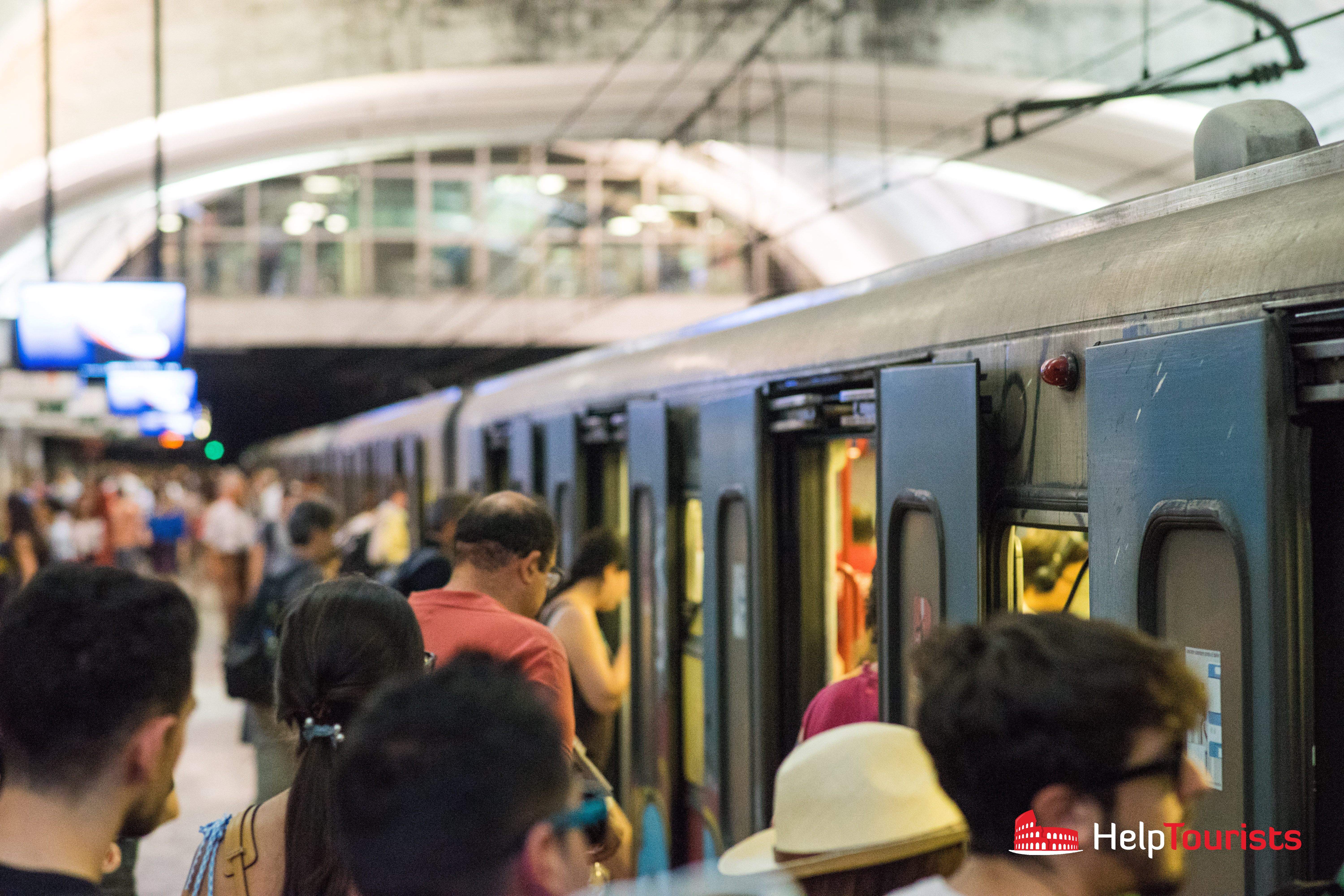
One way ticket
The one way ticket BIT (Biglietto Integrato a Tempo) is for those who use the metro or the bus occasionally to travel from A to B in Rome. The price of the BIT is currently 1,50 euro and is valid for 100 minutes, which means that you may change lines. You can switch from one metro to another, but only within the same metro station. It is also possible to change from the metro to the bus within the given time frame.
For 15 euro you can buy a carnet of 10 BIT tickets.
The day ticket in Rome is a 24-hour-ticket and becomes valid the first time you use it. For instance, if you validate the ticket at 1 pm, you can use it until 12:59 pm on the following day. The price for the day ticket in Rome is 7 euro for adults.

Multi-day ticket
If you spend several days in Rome, you should buy a multi-day ticket: you can choose from the Roma 48h and the Roma 72h. Just like day tickets, multi-day tickets are valid for the duration of the hours purchased. Upon validation, you can either use them for 48 or 72 hours in total. The 48h ticket costs 12,50 euro and the 72h ticket 18 euro.
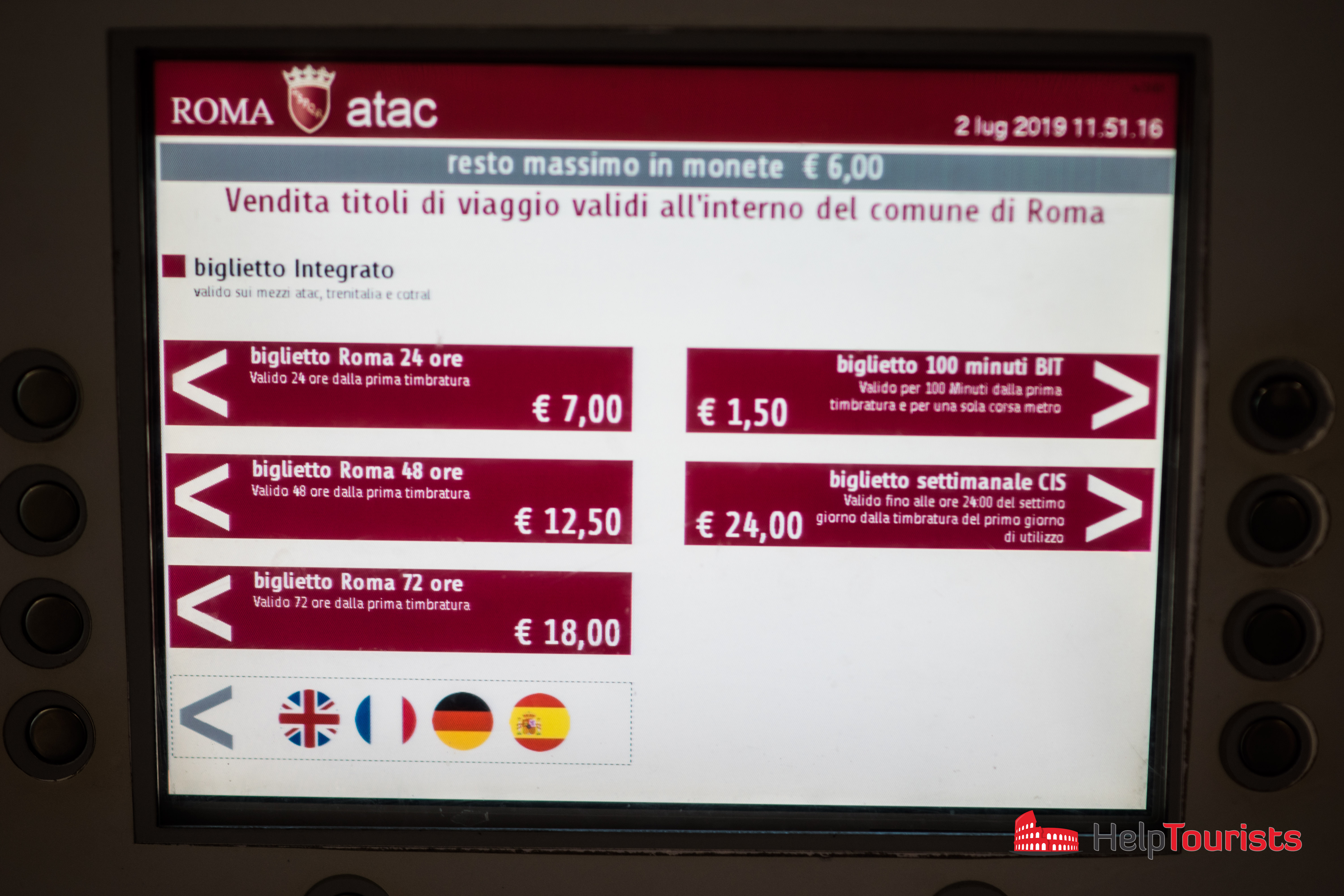
Weekly ticket
The weekly ticket CIS (Carta Integrata Settimanale) can be used for 7 days and is valid from the first validation until midnight on the 7th day.
Tourist ticket for Rome: The Roma Pass
The Roma Pass has been conceived for tourists. It offers a metro card in addition to many other advantages in Rome. With the Roma Pass you have unlimited access to the metro, buses, and the tramway in Rome. You can buy it with a validity of 48 or 72 hours.
The Roma Pass 72h costs 52 euro and is the common Roma Pass. It is available for purchase at all selling points and offers (in addition to the metro card) free entry to two sights or archaeological sites in Rome. With the Roma Pass you also get free entry to many museums or a price reduction on the entry fee. Ultimately, it can also help you skip long queues.

The Roma Pass 48h costs 32 euro and is less common in use. For that reason it is not available everywhere, but you should find it at tourist information centers. As the name indicates, this Roma Pass is valid for 48 hours. It offers a metro card for 48 hours and free entry to one Roman sightseeing or archaeological site as well as different price reductions.
The Roma Pass can be purchased at all participating museums, tourist information counters and certain metro stations in Rome.
The metro plan in Rome
So that you find your way in the metro in Rome, you can download the metro map here .
Social media
Become part of the HelpTourists community on Facebook! In our private group you can exchange ideas with other Rome lovers. Follow us on Instagram and Pinterest and get regular inspiration and insider tips for your next Rome trip!
Pin information about the metro in Rome on Pinterest
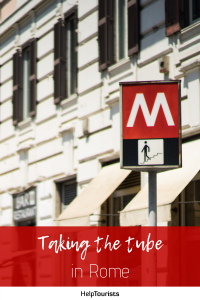
This article contains referral links. There are no additional costs for you, but thanks to these links we get a small commission. This enables us to continue to work diligently on the website and always have the latest information from Rome ready for you. Thank you for your support!
If you enjoyed this article, subscribe now to receive more just like it.

2 Reader Comments
Comments RSS Feed
Dear customer service,
I will be travelling to Rome on 3/11 until 8/11 (leaving for Florence). I am staying at Adesso Hotel Rome (beside Turbitina station). I am thinking of buying the weekly ticket CIS (Carta Integrata Settimanale) which can be used for 7 days and is valid from the first validation until midnight on the 7th day. This CIS ticket is valid only for METRO travel? OR what other tickets is suitable? Thanks
you can use the ticket CIS on the metro, bus, tram and trains in Rome ! I would also recommend this ticket
regards, Solene from HelpTourists
Leave a Reply Cancel reply
Your email address will not be published. Required fields are marked *
Hi, I’m Denise, welcome to HelpTourists Rome!

Sightseeing Activities in Rome
Click on the button to load the content from getyourguide.com.
Load content
Best hotel room offers
Click on the button to load the content from booking.com.
OTHER CATEGORIES

Transportation
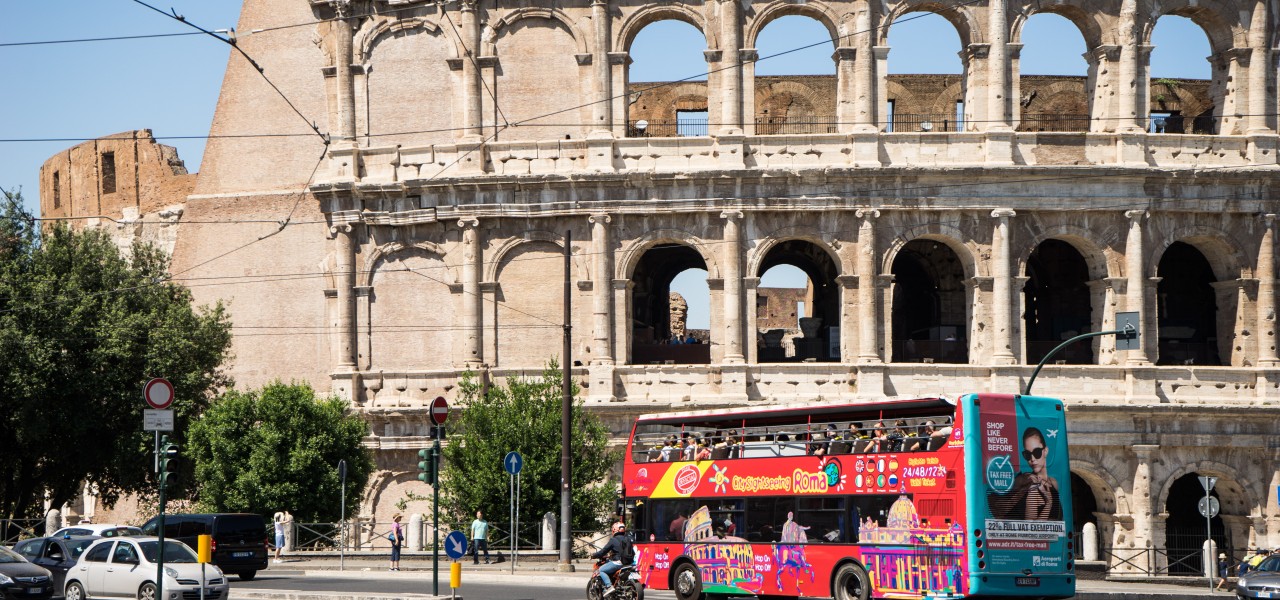
- Data Protection
- Cookie Preference
- TAXI FARES CALCULATOR
- BOOK PRIVATE TOUR
- Hotels near Termini
- 3 Star Hotels
- 4 Star Hotels
- 5 Star Hotels
- Apartments For Rent
- Best Hostels
- Hotels near the Colloseum
- Fiumicino Airport
- Ciampino Airport
- Termini Railway Station
- To Florence
- To Ostia Antica
- Famous Roman Dishes
- Best Pizza Places
- Best Pasta Places
- Local Italian Food
- Best Gelato Places
- Best Rooftop Bars
- Sistine Chapel
- Vatican Museums
- Borghese Gallery
- Roman Forum
- Trevi Fountain
- Spanish Steps
- Castel Sant’Angelo
- Navona Square
- Ancient Sites and Ruins
- Galleries and Museums
- Parks and Gardens
- Squares and Fountains
- Beaches near Rome
- To Alberobello
- How to Choose a Hotel in Rome
- 2025 Pilgrims of Hope Jubilee
- Rainy Days in Rome
- What to See in 3 days
- Buying a Sim Card in Italy
- Tickets to Vatican museums
- Renting a Car in Rome
- Apps for Tourists
- Souvenirs from Rome
- Free Things to Do
- Unusual Things to do
- Public Transport
- Italian food and wine
- Sightseeing Tour at Sunrise
- Sightseeing Tour by Car
- St Peter’s Basilica
- Colosseum & Roman Forum
- Campo Marzio
- Jewish Ghetto Quarters
- Quartiere Coppedè
- Sant’Eustachio
- Marcus Aurelius
- Gaius Julius Caesar
- Octavian Augustus
The Rome Metro Underground System
Written by: Kate Zusmann
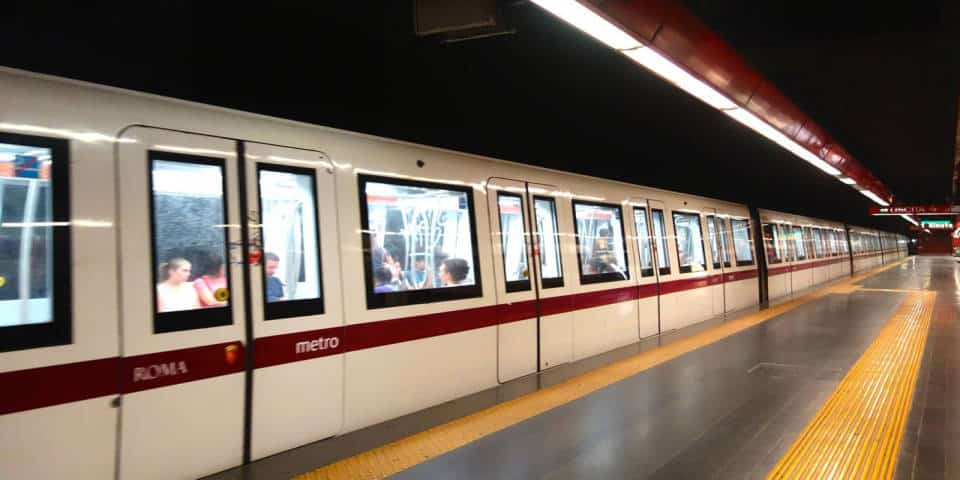
12019 views
The Rome Metro Underground train system has lines A, B, and C. Lines A and B intersect at Rome Termini Station, the central public transport hub. At the same time, Line C is a new line connecting some of the Roman suburbs and is of little use to tourists: it runs between Monte Compatri and Parco di Centocelle. Roma pass allows unlimited public transportation use while it is valid.
What You Need to Know and The Metro Map
The plan in Rome is to extend Line C to Piazza Venezia and the Colosseum . Unfortunately, the Roman subway misses much of the city center and has limited coverage. Therefore, although using the Metro is a fast way to reach the point you need, it is not the most convenient type of public transportation in Rome, especially if your main aim is the historical center of the Eternal City .
The Underground system is frequently crowded, but still it is one of the cheapest and fastest ways to reach most points of the city.
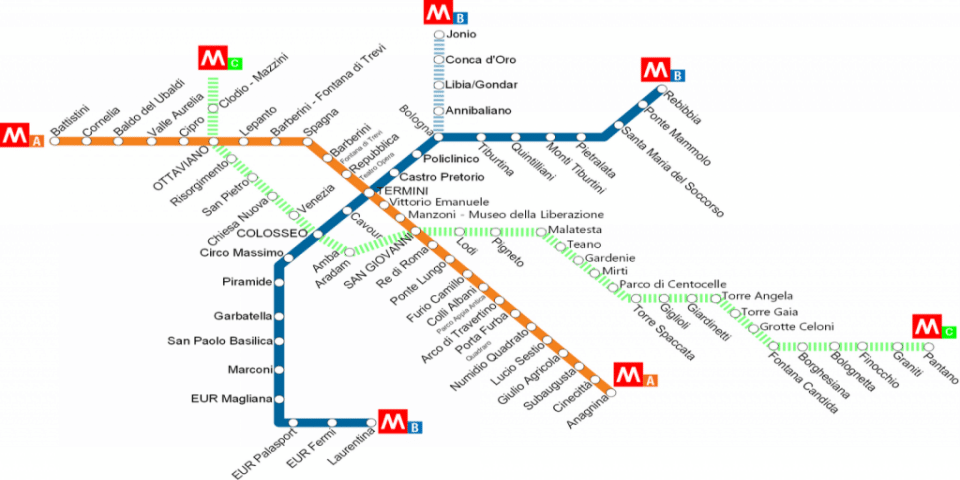
The Colosseum / Roman Forum , the Vatican Museums , and Spanish Steps have Metro stations within a five-minute walk.
An official Rome metro map is available from ATAC here
Suppose you want to use the Metro to reach one of the Roman airports. In that case, you can take line B to Tiburtina or Piramide, where you can catch a cheap train to Fiumicino airport . In contrast, the southern terminus of line A, Anagnina, offers local buses that go directly to Ciampino airport .
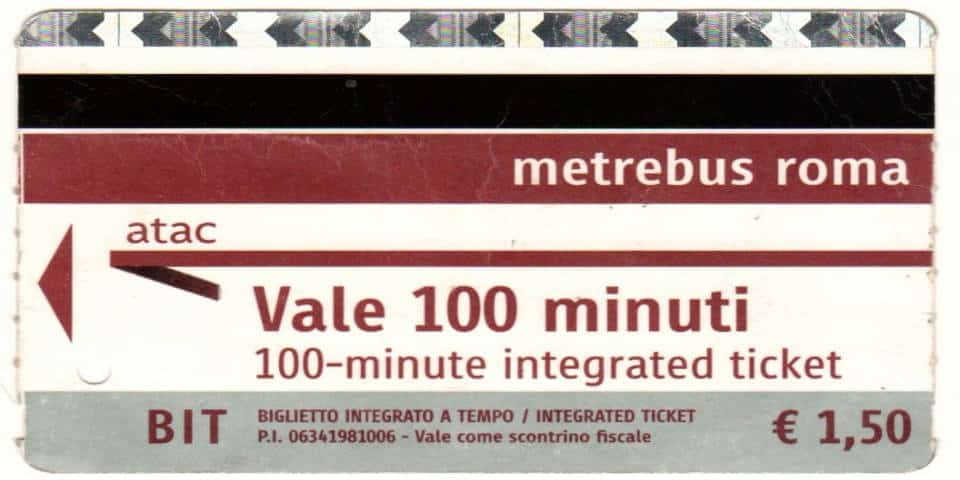
Always hold on tight to your bags and keep wallets out of reach
However, the most convenient way to reach one of the airports is to take a bus or train from Termini station. This is because lines A and B cross there.
Main Metro Stations
You can easily reach most of the critical Roman sites.
When you exit the metro, you will pass on your way to the Vatican Museums by Santa Maria delle Grazie, a Roman parish church.
Ottaviano is the most convenient station to exit if you go to Saint Peter’s Basilica .
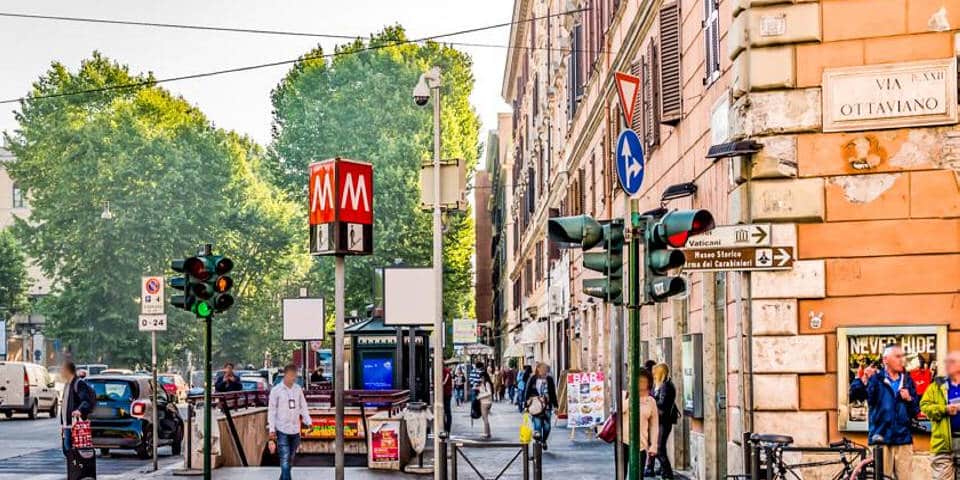
Fix price transfer from the Fiumicino Airport to Rome
If you exit Flaminio station, you can go to the Basilica of Santa Maria del Popolo with the Crucifixion of Saint Peter and the Conversion on the Way to Damascus paintings by Caravaggio and Raphael’s Chapel by Bernini. Moreover, Piazza del Popolo is famous for its two churches: Santa Maria dei Miracoli and Santa Maria in Montesanto.
If you exit Spagna station, you can reach the famous Spanish Steps in a short walk. Also, there is Trinita dei Monti and Sant’Andrea delle Fratte – the church with two Bernini statues, and it is the site where Saint Maximillian Kolbe celebrated his first Mass.
If you exit the Barberini station, there is a Capuchin Crypt and Barberini square (Piazza Barberini) with luxury hotels and restaurants.
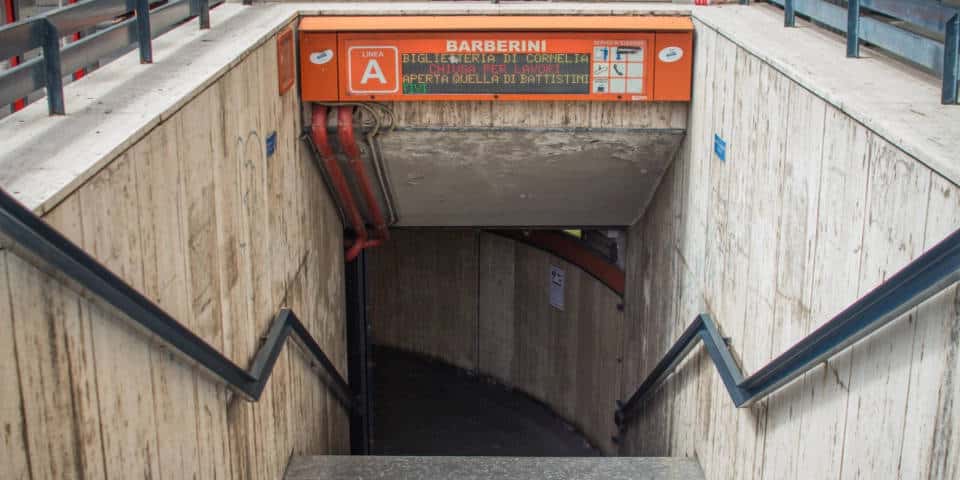
Saint Mary of the Angels and the Martyrs (Santa Maria degli Angeli e dei Martiri) was designed by the famous Michelangelo located there. Piazza Repubblica is also one of Rome’s most popular and essential squares.
Termini station is the most crucial station in the city: there are many hotels and international restaurants, and you can easily reach any point in the town from Termini.
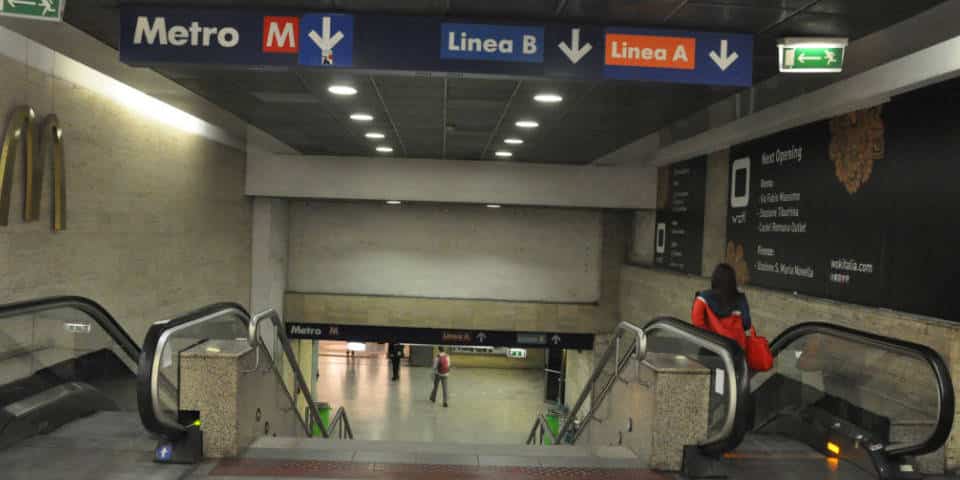
San Giovanni
If you exit San Giovanni station, you can easily reach Saint John Lateran , the Cathedral of Rome, Scala Santa – saint stairs, where Jesus climbed when He was condemned to death, and Santa Croce in Gerusalemme with the relics of the Passion of Christ.
Line B goes through the ancient sites of Rome.
Cavour station will allow you to reach such sites as Saint Peter in Chains and the Monti area . Moreover, Piazza Cavour is one of Rome’s most beautiful and spacious squares.
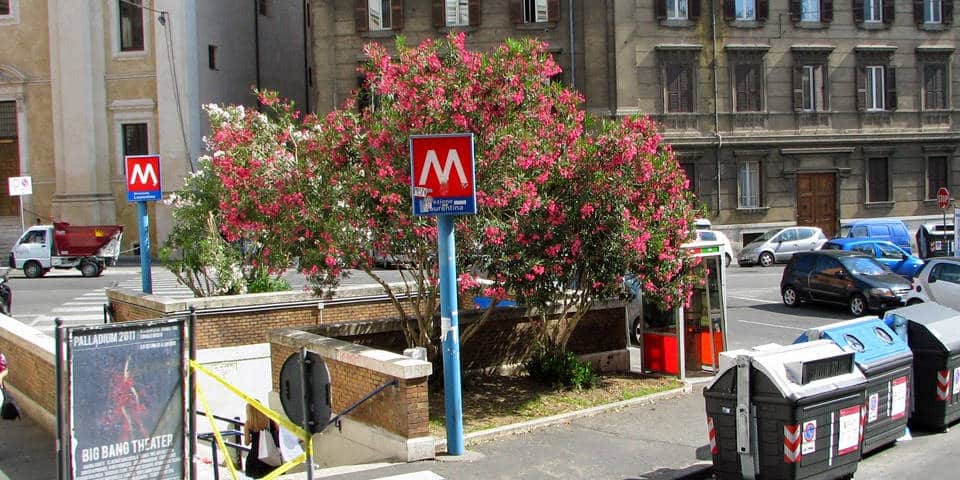
Very convenient station to reach Colosseum , Roman Forum, Palatine Hill , and San Clemente Basilica .
Circo Massimo
You can reach Circus Maximus , Santa Sabina, The Keyhole (where you can see three countries at once), and Santa Maria in Cosmedin with the skull of Saint Valentine and the Mouth of Truth .
Saint Paul Outside the Walls church is located right nearby the metro station. There is the tomb of Saint Paul.
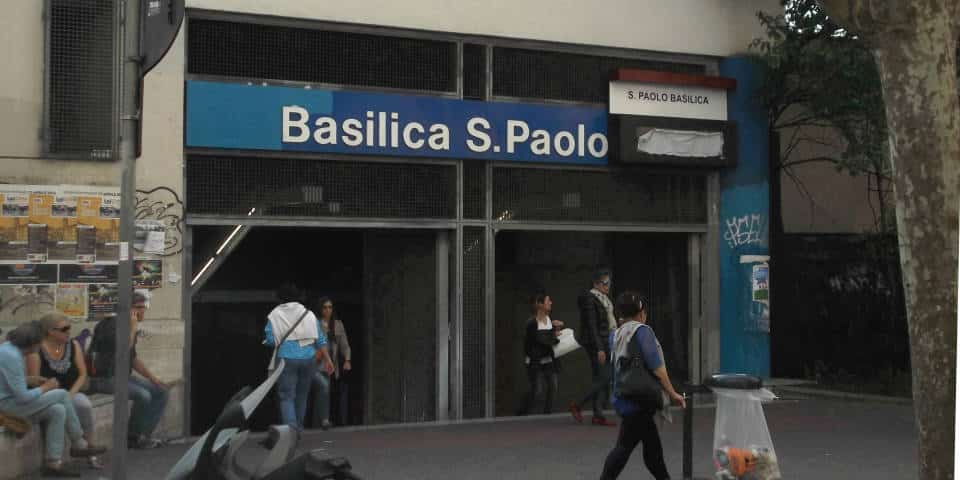
Trains come along about every 3-4 minutes
Useful Information
Metro tickets are interchangeable with bus tickets. You can purchase one at machines at all metro, bus, or train stations. There, you will find self-service machines with different ticket options: single ride, 24 hour-tickets, 3-day or 7-day passes.
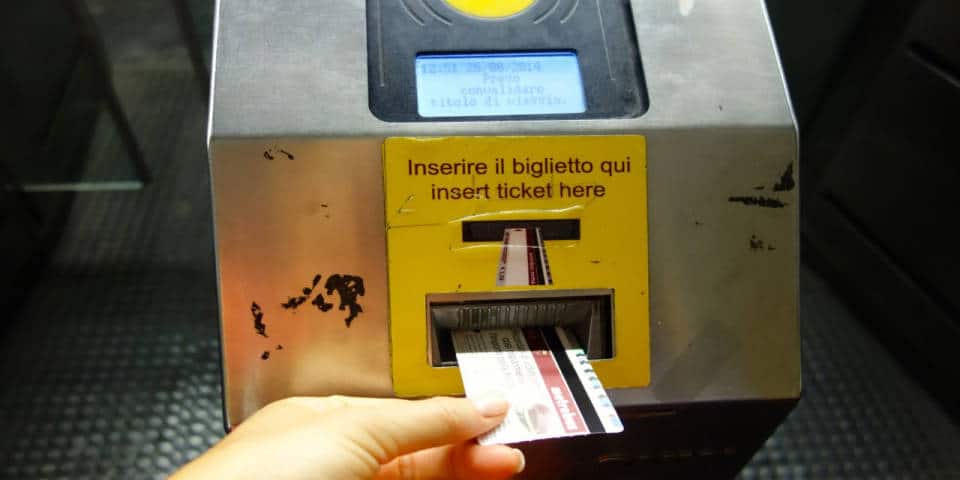
One of the most convenient ways is to buy tickets in advance in one of the tobacco shops and newspaper stands
You have to validate your ticket when you pass through the gate to the metro , but don’t forget to hold the ticket because you may be asked to show proof of purchase even near the exit at the end of your trip.
The price for a standard ticket is 1.50 euro, valid for 100 minutes for the metro, bus, and tram. However, each ticket is valid for only one metro trip, even if you will use it again within 100 minutes.
- A 24-hour ticket is available for 7 euro
- A 48-hour ticket is available for 12.50 euro
- A 72-hour ticket is available for 18 euro
- A one-week ticket is available for 24 euro
- Those under 10 ride free
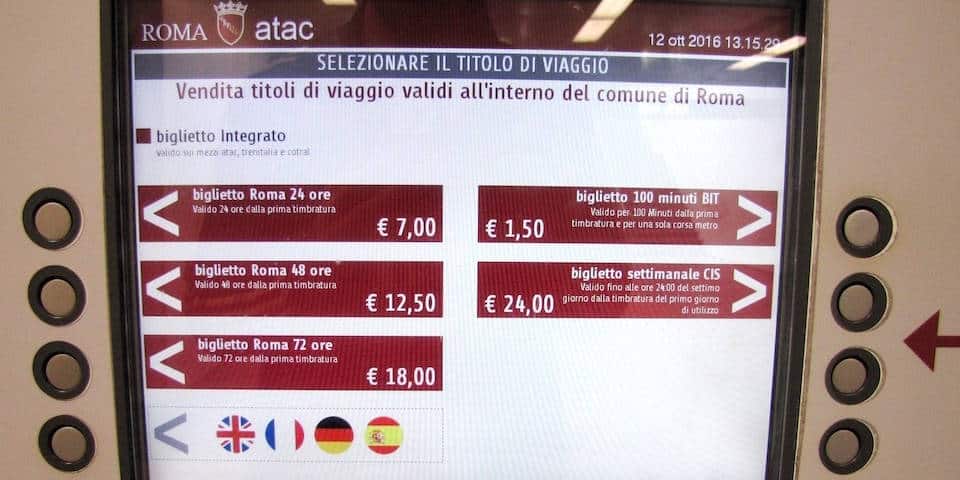
Roma Pass holders have unlimited use of the metro while their pass is valid
Opening Hours
The Rome metro is open from 5:30 am until 11.30 pm and stays open until 1:30 am on Friday and Saturday.
The Metro in Rome allows reaching any point of the city quickly. However, it is not well-connected to the historical center of the Eternal City. Which kind of public transportation do you prefer to use in Rome?
Author: Kate Zusmann
For the last 10 years, I live in the Eternal City. Traveling, exploring new things, writing blogs, and shooting vlogs are my main hobbies, but the thing that I like even more is sharing my experience and thoughts with you! Explore Rome with Us :)
Dive Deeper into Rome's Stories

How to Get from Rome to Matera

How to Get from Rome to Montepulciano

12377 views
How to Get from Rome to Tuscany

How to Get from Rome to Siena

17818 views
How to Get from Fiumicino Airport to Rome City Center
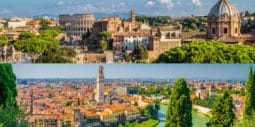
How to Get from Rome to Verona
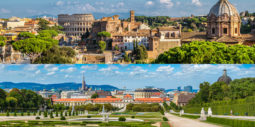
How to Get from Rome to Vienna
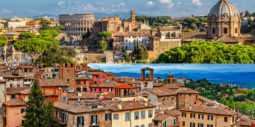
How to Get from Rome to Perugia
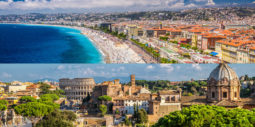
How to Get from Nice to Rome

Read more about Rome

What material is the Colosseum made of?

22513 views
Best 5 Star Hotels in Rome

21458 views
Taxi in Rome: All You Need to Know About Fares and Cab Drivers Tricks
Rome.us © 2024. Created with love by Roman experts and guides.
Privacy Policy
How to navigate Rome’s metro with confidence: Tips and tricks from our forums
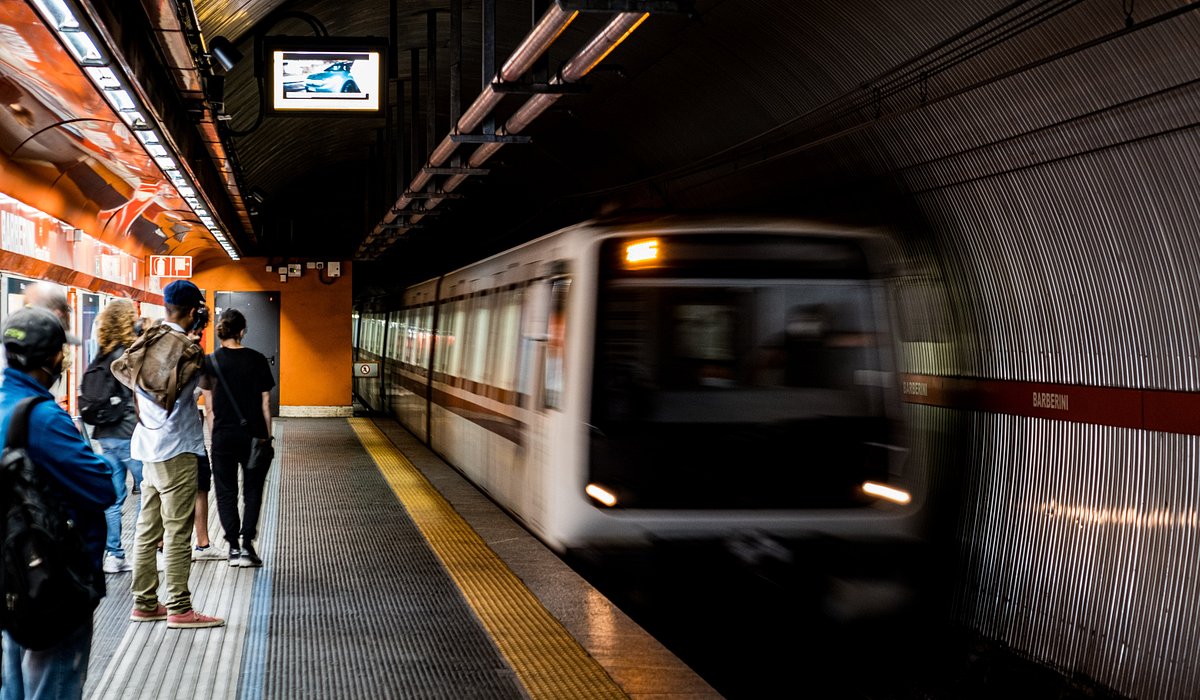
Rome is filled with architectural wonders spanning millennia, and you can hit most of the main attractions on foot. But Rome is a big city and using the metro to get around the Eternal City can help you save time and energy.
Most of the major sights are within walking distance from a metro station, including the Colosseum , the Trevi Fountain , and the Spanish Steps at Piazza di Spagna .
Check out our ultimate guide to Rome’s Metro system and find out how to navigate it like a local.
What is the Rome Metro?

The Rome Metro is the main public transit system within the Italian capital’s metropolitan area. It runs for about 37 miles, spread across 73 stations and three lines (A, B, and C). Plans for a subway system in Rome dated back to the 1880s, though construction didn’t kick off until the 1930s. World War II caused a long delay in the construction, which was eventually completed in 1955.
Today, the Rome Metro is a convenient, affordable, and easy way to get around the city. It’s far more reliable than the tram network and buses, which follow winding routes and often get stuck in traffic.
The subway takes you to most places in and around Rome’s historic core. A few must-sees, however, still lack a subway link: both Piazza Navona and the Mausoleum of Hadrian are almost a mile away from the closest Metro station. The good news is the system is growing in all directions. Line C, for example, will extend to the Colosseum and connect the city center to Rome’s easternmost districts in a couple of years.
Rome Metro vs Ferrovie Laziali (FL) lines
In addition to its subway, Rome has a commuter rail service made up of eight lines. Five of them leave from Termini (the city’s main railway station). The other three either depart from or pass through the Tiburtina train station (located in the northeastern part of the city). One of these is FL 1, which connects Fiumicino International Airport to central neighborhoods like Trastevere .
How to buy Rome Metro passes?
The Rome Metro provides multiple options for purchasing a ticket or pass. The simplest way is to head to a ticket machine (which has an English menu option) or office. Both can be found in all subway and suburban train stations.
But while ticket machines operate according to the Metro system’s working hours, ticket offices are only open between 7 a.m. and 8 p.m. from Monday through Saturday and between 8 a.m. and 8 p.m. on Sundays and public holidays.
You can also buy your tickets at over 2,000 newsstands, bars, and tobacco shops across the capital. Around 1,000 of them sell passes as well.
Finally, all Rome Metro stations have at least a couple of turnstiles allowing for contactless payment through your debit/credit cards and smartphones.
Which Rome Metro tickets work best for you?
That will depend on how long you’ll be staying in Rome, what distances you’ll be covering, and how often you’ll be using the system. Tickets and passes are valid on the subway and on all trams and buses within the city, but none of them can be shared between passengers.

Single ticket
The single ticket to Rome’s public transportation is good for 100 minutes after validation and allows for multiple transfers within that time frame (though only on a single subway ride). It costs $1.50 and can also be purchased via SMS (provided you have a local TIM, Vodafone, or WINDTRE SIM card) or on the MyCicero app . Alternatively, you can buy a carnet of 10 single-ride tickets for $15.00. The single ticket is recommended if you’re planning to take the Metro up to four times a day. If you’re traveling more than that, you’ll get better value for money with a Rome Metro pass.
One-, two-, and three-day passes
If you’re planning to ride the subway several times a day during your trip to Rome, consider getting a 24-hour pass for $7.00, a 48-hour pass for $12.50, or a 72-hour pass for $18.00. These will give you unlimited access to all public transportation around Rome for the specified period and they only need to be validated once.
Weekly passes
Are you staying in Rome for a week or so? If the answer is yes, and you think you might be using public transportation more than twice every day, getting the system’s weekly pass for $24.00 will be worth it.
Tourist passes
The Roma Passes are special versions of the two- and three-day passes meant specifically for visitors. Apart from access to all of Rome’s public transit system, you’ll enjoy discounts on events and exhibitions across the city and free entry to one museum or archaeological site. The 48-hour pass costs $32 while the 72-hour one costs $52.
Regional passes
Passes covering all of the provinces within the Lazio region cost between $8.90 and $39.20 depending on where you’re traveling. They’re valid for three days and can be a great option if you’re using public transportation both within Rome and to reach Fiumicino Airport.
Rome Metro operating hours
From Sunday through Thursday, all three lines of the metro run between 5.30 a.m. and 11.30 p.m. On Fridays and Saturdays, the subway runs from 5.30 a.m. to 1.30 a.m.
Traveler tips to the Rome Metro
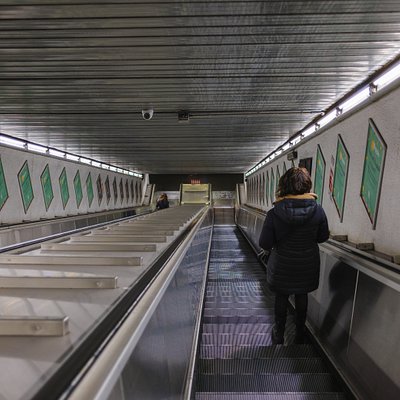
1. Plan your trips before getting your ticket
The Rome Metro offers a handful of ticket and pass options for your convenience, so take a few minutes to figure out which suits you best based on your itinerary.
2. Always validate your tickets and passes
While subway stations have turnstiles, trams and buses have tiny machines where you’re supposed to insert your ticket to have it validated. Failure to do so may result in a fine.
3. Use small bills at ticket machines
No matter which euro bill you use, you’ll get your change in coins. So if you’re paying for your ticket in cash, try to use smaller bills or you’ll end up with a pocketful of coins.
4. Watch out for your belongings
The subway is quite safe day or night, but pickpocketing is relatively common like in all big cities around the world. Be aware of your surroundings, especially around the ticket booths.
Recommended tours and activities

More like this:
- Getting from Rome to Amalfi Coast: stress-free routes, key pit stops, and the very best travel times
- How to get around Rome: A guide for first-timers
- Rome city pass: Which one should you pick for the best value

- Moving in Rome
Metro and railways’ lines and time tables
Linea a: anagnina-battistini.
WEEKDAY SCHEDULE: first departure 5:30 last departure 21:00 (Sunday to Thursday, then shuttle bus service until 23.30) . On Fridays and Saturdays, the last departure from the terminus is at 1.30.
The line is operated by ATAC
ROME-LIDO (METROMARE)
WEEKDAY SCHEDULE: first departure 5:15 . Until August 12th inclusive: last departure from Porta San Paolo 20:15 (shuttle bus service until 23.30) last departure from Cristoforo Colombo 21:00 (shuttle bus service until 23.30).
The line is operated by Cotral
Getting to Rome by Train
The main entry points to the city are Fiumicino and Ciampino airports, the Termini, Tiburtina, and Ostiense railway stations, the A1, A12, and A24 highways, and the main state roads.

RELATED LINKS
On this page, rome public transport, tourist transport & passes, rome fiumicino airport, rome ciampino airport, civitavecchia cruise port.

- Rome hotels
- Venice hotels
- Florence hotels
- Naples hotels
- Pisa hotels
- Sorrento hotels
- Rome Fiumicino Airport
- Rome Ciampino Airport
- Venice Marco Polo Airport
- Pisa Airport
- Naples Airport
- Civitavechia (Rome) Cruise Port
- Naples Cruise Port
- Rome public transport
- Venice water bus (vaporetto)
- Florence public transport
- Naples public transport
- Sorrento local buses beyond Amalfi
Rome public transport tickets and travel passes
Make informed ticket purchase for travel on rome metro, buses, trams and train services.
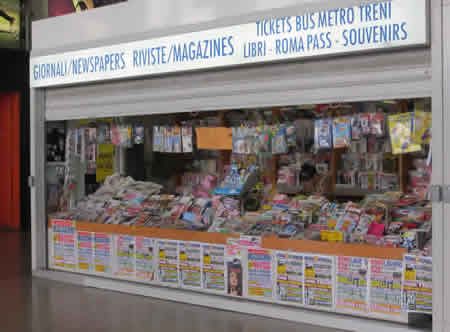
The great thing about travelling by public transport in Rome is that all tickets are integrated. One ticket will get you around on buses, trams, trains and the Metro very cheaply.
Tickets are also easy to purchase as they can be picked up from any of the numerous kiosks in most tourist areas, particularly in places such as Termini Station . From January 2023 contactless payments will also be accepted across the ATAC network.
You can now also purchase a 72-hr public transport ticket in advance of your trip and have it sent to your home address, this allows you to be completely prepared upon arrival. Buy your 72-hr Public Transport Pass in advance now.
There are a few different types of tickets to choose from, including 100 minutes to weekly passes, which we go into details on further down the page. The general rule of thumb though is that if you're going to be using these transport options for less than 5 journeys in one day, the 100 minute ticket is suitable for the majority of tourist needs.
Rome is a stunning city to walk around with treasures found round every corner so don't discount walking around certain areas as the best option.
ROME BUS, TRAM & METRO PRICES 2024
Public transportation is free for children under 10 years old, with accompanying adult.
Top of the page
About rome public transport, what you can use public transport tickets on.
Public transport tickets are valid for all city public transport - city buses and trams , Metro and some rail services within the Rome urban area.
Ticketing on Rome public transport is comparatively simple, there are no complicated travel zones or peak/off peak travel periods.
What's not covered by Rome public transport tickets
There are a few transport options you cannot use public transport tickets on.
For the visitor the main choices not covered are:
- The Leonardo Express train running non-stop between Fiumicino Airport and Rome's Termini Station.
- Any airport bus or train to either of Rome's two airports, Fiumicino or Ciampino.
- The trains to and from Rome's cruise port, Civitavecchia .
- Rome's hop-on hop-off sightseeing buses.
Your transport ticket choice
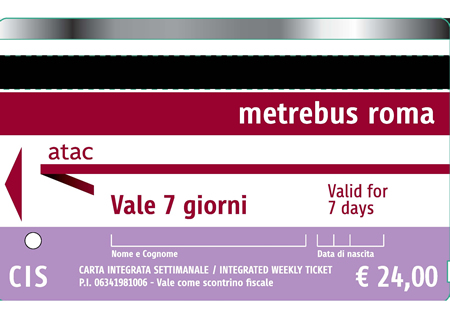
For short term visitors to Rome you have a very straight forward choice of ticketing options.
Your only decision is whether you need single tickets or 24, 48 or 72-hour passes or a 7 calendar day travel pass.
A single ticket is valid for 100 minutes, allowing you to switch bus lines if there is no direct service. On the metro you can switch Metro lines at Termini Station with one ticket.
When you buy any transport ticket it is not stamped with a start date.
You have the responsibility to stamp your ticket on machines provided for that purpose before you start your journey.
If you travel with a blank unstamped ticket it's no different to travelling without a ticket at all.
The tickets themselves are card with a magnetic strip like the 7-day travel pass image here.
Contactless payments work in the same way they do everywhere else, you tap on the reader as you go. You can pay with card, device or download an app. A ticket inspector will ask to see your card/app if they need to check you have paid for travel.
Rome bus, tram & Metro fares & tickets
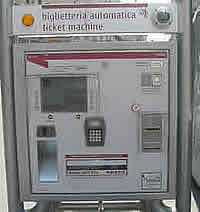
All local public transport is integrated in Rome. You have to purchase your tickets before you board any public transport in Rome. Most people will have a pass of one kind or another.
Tickets for both the bus system and Metro can be purchased from tobacconists, bars, or vending machines at Metro stations and major bus stops. On both buses and metro there is a flat fare, whether you go one stop or to the end of the line. On buses your ticket is valid for 100 minutes allowing you to change buses using a single ticket.
From January 2023 contactless payments will also be accepted across the ATAC network.
At Metro stations there are ticket barriers where you have to insert your ticket to enter and leave the Metro station.
On buses and trams you will find ticket validation machines similar to that pictured below. If you have a single ticket then enter the ticket into the machine. If you have purchased a pass, you put the pass into the machine on your first journey. This stamps the date and time from which the pass or ticket is valid.
Groups of ticket inspectors from time to time descend on to a bus or platform to check all passengers have valid tickets. If not you will incur a heavy fine. Playing the innocent tourist doesn't work.
Where to buy your public transport tickets
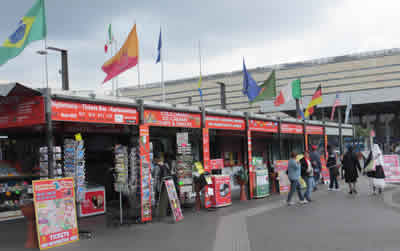
You can buy the travel passes from a variety of sources including vending machines and manned ticket offices at Metro stations and many news-stands / tobacconists like the one pictured at the top of the page.
If you don't speak Italian and are nervous about using vending machines, rest assured most of the people serving at the outlets where tourists frequent normally speak good English, often much better than your hotel.
Most independent visitors to Rome will arrive in Rome city centre at Termini Station. Many kiosks within the station like the one pictured at the top advertise they sell transport tickets.
Out the front of Termini Railway Station by the bus station is the row of kiosks pictured here that specialise in selling travel passes and tours. They advertise the transport passes prominently with prices displayed boldly and staff speak good English too.
These kiosks are conveniently situated next to a Rome public transport information kiosk.
Ticket machines are multi-lingual, easy to use and seemingly reliable. There are manned ticket counters at the key stations. You can also decide to just pay as you go using a contactless card/enabled device.
As yet there is no facility provided by the public transport authority themselves for advance purchase over the internet though there are a couple of options offered by third parties aimed at the first time tourist visitor.
Recent developments have allowed us to now offer a 72-hr Rome Public Transport Pass that you can purchase before you arrive in Rome. This pass is posted to you at home before you leave for Rome, so you can use public transport straight away upon arrival.
Buy your 72-hr Public Transport Pass in advance now.
Validating your public transport tickets
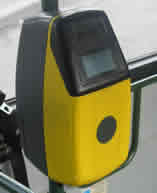
When you first purchase a travel pass or ticket it is blank.
The travel pass only becomes 'live' after you have validated it (stamped with the date you first use it). Showing a ticket inspector an invalidated ticket is no different to having no ticket at all.
On the Metro lines the travel pass is automatically validated when you pass through the ticket barriers for the first time.
On other modes of transport there is a validating machine inside buses and trams and on the platforms of train stations where it is your responsibility to insert your pass into the machine and get it validated.
Single ticket are valid for 100 minutes from the time stamped on the ticket. On buses and trams you can switch routes within this timespan and on the Metro you can switch Metro trains at Termini Station without going through any ticket barrier.
24hr, 48 and 72hr passes are valid from time of validation to the end of the period stated on the card.
Finding your way around
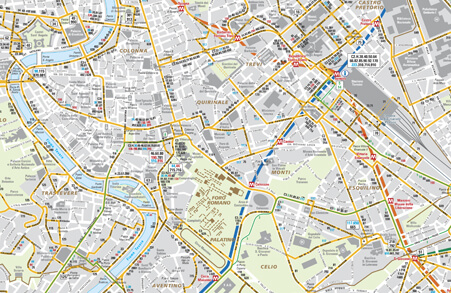
Most visitors will only be travelling in a compact area in the centre of Rome where all the main attractions and hotel districts are situated. The Metro system is very simple, at the moment just 3 lines, only two of which are of use to tourists.
If the Metro is not the solution to an individual journey then the local city buses will be the answer. At first sight the number and complexity of bus routes can seem overwhelming.
On the ground less so, as each route at each bus stop is laid out clearly with all the stops to its terminus. There is normally at least one direct bus going to the destination you require on short trips. Buses are very frequent too.
The bus and Metro map, (link above) covers all of the central area if you want an orientation of routes in advance.
If you are planning on using public transport extensively to get around Rome and visit attractions outside the tourist hotspots in the centre then investing in a Rome bus and Metro map is worthwhile. You can find these sold in most news-stands around bus and train stations like Termini Station.
Outside the front of Termini Station, the main local public transport hub in Rome there is a public transport information kiosk for tourists on one side of the bus station.
Roma Cristiana tour bus plus Rome public transport bundle (1 & 3-day tickets)
Save time and money with the Vatican and Rome card!
It's a straight forward proposition, combine the Roma Cristiana hop on, hop off city sightseeing bus with a 1 or 3 day public transport pass .
The public transport covering all of Rome's metro, tram, suburban train and bus system. Roma Cristiana is one of Rome's leading Hop On, Hop Off sightseeing buses that visits all the major sights in the city of Rome.
Both are combined in one convenient and money saving pass that covers all your transport requirements when visiting Rome.
Travelcard Vatican & Rome
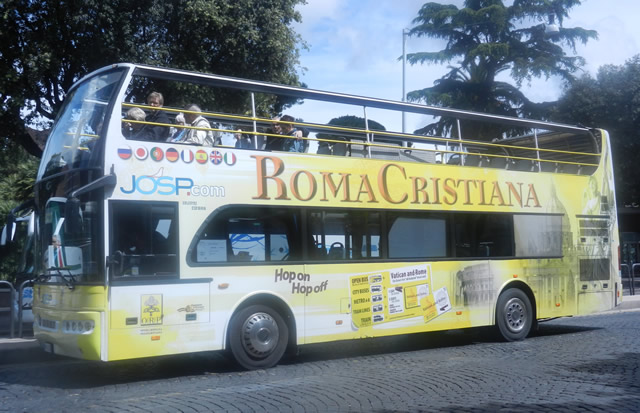
• Includes hop-on, hop-off bus, metro, public bus, tram and trains • Children under 10 free • 1-day or 3-day tickets available
Omnia Card - 3-day pass hop-on hop-off bus, public transport pass, Roma Pass & Vatican Card
Adult €129, child (6 to 17 years old) €59.
The Omnia Card is the most comprehensive sightseeing pass.
When you buy this exclusive travel and sightseeing card, you get access to all Rome’s public transport with a 3-day public transport pass, the Roma Cristiana hop-on, hop-off sightseeing bus, Roma Pass and Omnia Vatican Card.
The pass is offered through Opera Romana Pellegrinaggi (ORP) a branch of the Vicariate of Rome, organ of the Holy See directed by the Cardinal Vicar of the Pope.
This complete solution to your transport and sightseeing needs include:
Roma Cristiana hop-on hop-off sightseeing bus
3-day public transport pass
Fast track admission to Vatican Museums and Sistine Chapel with the Omnia Vatican Card
Fast track admission to St. Peter’s Basilica with the Omnia Vatican Card
The Roma Pass with free entry to two top Rome attractions like the Coliseum, Borghese Gallery, Roman Forum and Palatine Hill and Capitoline Museums
Discounted entry to more than 30 other Rome attractions with the Roma Pass
Omnia Card Rome
• FREE entry to two top attractions including the Colosseum • Includes hop-on, hop-off bus • 3-day public transport pass • Fast-track to Vatican and Sistine Chapel • Fast-track St Peter's
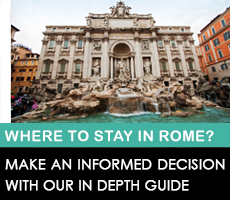
- Archaeological sites
- The Trevi Fountain
- Vatican Museums
- Saint Peter’s Basilica
- Villa Borghese
- Piazza di Spagna
- Piazza Navona
- Colosseum tickets
- Vatican Museum tickets
- Sistine Chapel tickets
- Saint Peter’s Basilica tickets
- Colosseum tours
- Pantheon Tours
- Car rent with driver
- Transfer Rome / Fiumicino Airport
- Transfer Rome / Ciampino Airport
- Transfer Rome Civitavecchia
- Phone numbers
Rome Metro: Tickets
Prices of metro tickets in Rome, season tickets and discounts. Information on the transport of bulky luggage, strollers, animals and bicycles.
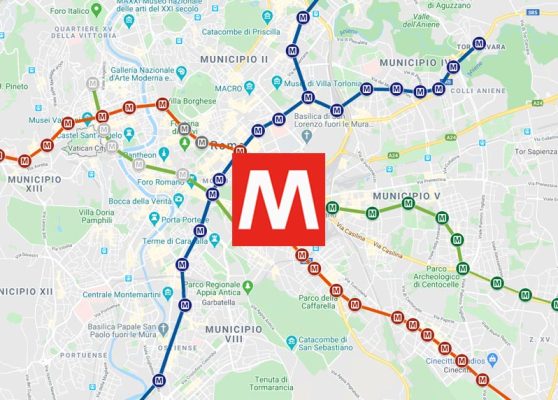
Top selling tickets on ArcheoRoma
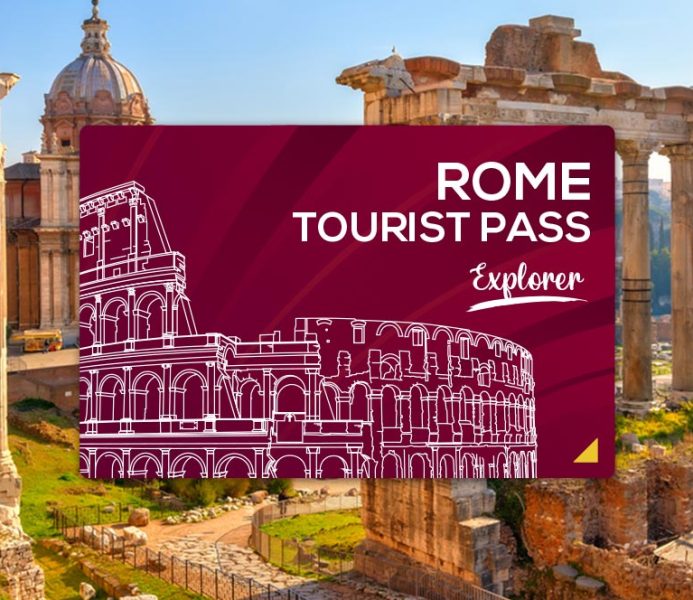
starting from 97 €
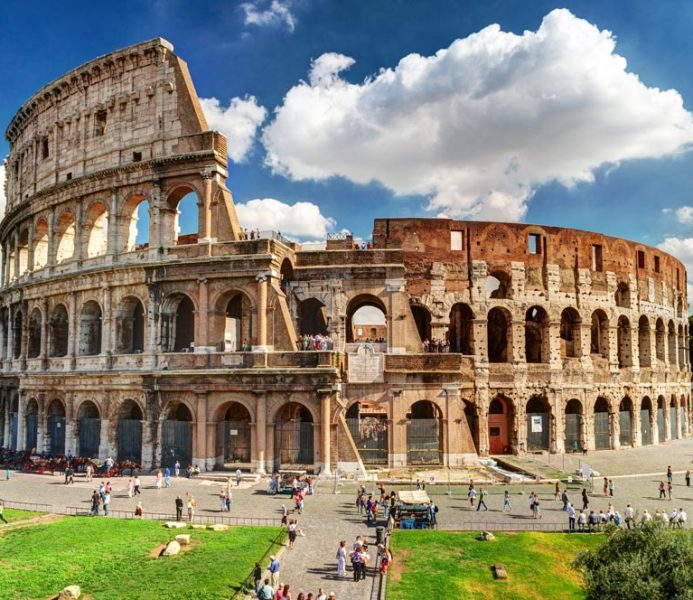
starting from 19 €
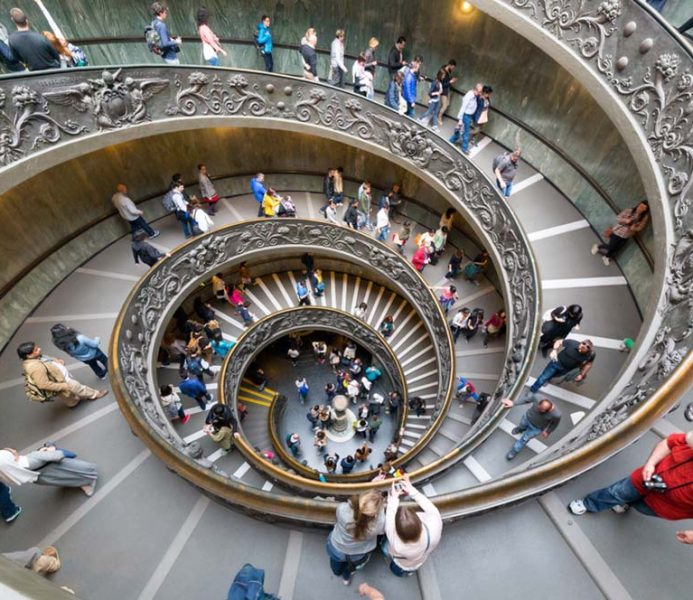
starting from 30.25 €
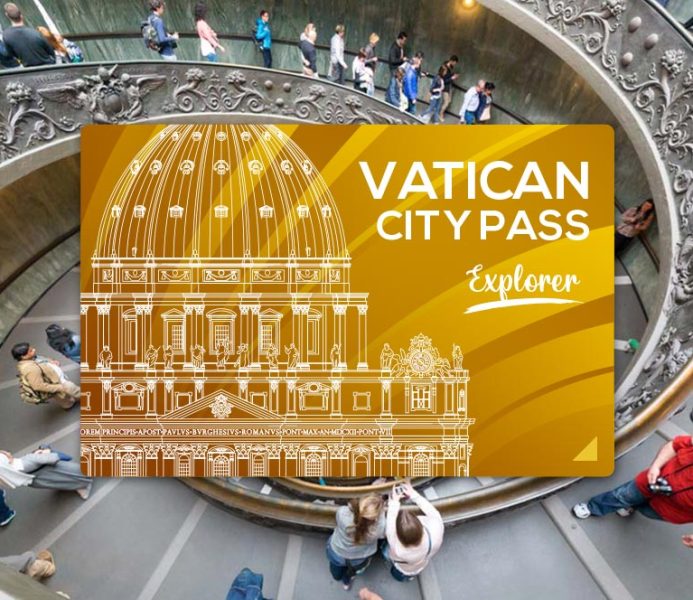
starting from 62 €
In order to travel on the Rome Metro you need to have a valid ticket.
Timed Integrated Ticket (BIT)
The basic ticket is the BIT (integrated timed ticket). It costs 1.50 euros and allows you to travel on all Rome Metro lines, as well as buses and trams.
The hourly limit of the ticket is 100 minutes, as long as you do not exit the subway turnstiles.
Attention: if you jump from Metro A to Metro C or vice versa at San Giovanni station you will have to pay twice for the ticket, because you are forced to exit the turnstile and come back (a problem that will be solved in the future with an underground connection between the two metro).
Children are exempt within the tenth year of age.
Monthly and annual subscriptions
Both monthly and annual subscriptions are available to users.
Monthly subscriptions
The price of the Personal Monthly subscription is 35 euros and is valid for the calendar month shown on the subscription or on the top-up receipt. It allows unlimited rides on the whole territory of the Municipality of Rome. The monthly impersonal subscription differs from the personal monthly one because it allows two people to take advantage of the same travel pass, for a monthly cost of 53 euros.
Annual subscription
The annual subscription , which is valid for 365 days, costs € 250.00 and allows unlimited travel throughout the period.
The Roma Pass is the solution offered by the Roman administration for tourists who have a few days to visit Rome. These are timed tickets, which allow unlimited travel on public transport for 24, 48 and 72 hours, starting from the first stamping.
Roma Pass , Rome’s official tourist card
Discounts for the elderly and unemployed
For those who are over 70 years of age and show an Isee income of less than 15 thousand euros, a specific card has been designed which allows the use of public transport free of charge.
The monthly subscribtion for unemployed , valid for the calendar month shown on the receipt, costs 16.00 euros and allows an unlimited number of trips.
What happens if I don’t have a valid ticket or travel ticket?
The traveler without a valid ticket, in addition to the payment of the ride, is subject to an administrative sanction from 100 to 500 euros. This penalty is reduced to 50 euros if it is paid within 5 days of the dispute. It is not possible to pay contextually to the dispute (paragraph 3, art.10, Regional Law no. 52 of 3 December 1982 and subsequent amendments). It is also valid for title not validated or validated several times and a personalized title without the necessary identity document.
Can I carry bulky luggage on the Metro?
Yes, as long as they fall into these cases:
- Luggage not larger than 50x30x25
- Musical instruments (one per passenger) inside the case, within the dimensions of 150x50x20
- Strollers for children, to be folded to use escalators
If the baggage exceeds even one of the maximum dimensions of 50x30x25, you need to have an additional ordinary ticket. In any case, the baggage cannot exceed the dimensions of 80x45x25.
Can I take the bicycle on the Metro?
Yes. The following are allowed:
- Folding bicycles without limitations, provided they are closed and with dimensions (when closed) not exceeding 110x80x40 cm.
- non-motorized bicycles as long as you purchase an additional ticket and only under certain conditions (which, we hope, will not remain so for a long time, editor’s note). Metrebus ticket holders and children under 12 years of age use the service free of charge (provided they are accompanied by an adult).
Bicycle transport conditions
It is possible to access the bicycle transport service only from stations that foresee the presence of lifts or stairs less than 2 meters wide (it is forbidden to ride bicycles on escalators. It is also forbidden to carry bicycles on fixed stairs, when the escalators are out of service) . Apart from the stations of Barberini and Repubblica (currently out of order anyway), Spain, Termini, Vittorio Emanuele and San Giovanni.
Metro A and B : the bicycle can only be accessed on the first carriage in the direction of travel. In Metro C it is necessary to access the second or fifth carriage (identifiable by the bicycle symbol).
If you are a group of more than 5 passengers with bicycles in tow, it is mandatory to report your presence (and your movements) to the number 0646954037 or by email to [email protected] with an advance of at least 24 hours.
Time limits for bicycle transport
Can i bring pets on the metro.
Yes. Medium and small dogs must pay the ticket at the ordinary rate. They do not pay if they are guide dogs accompanying blind people. They must also be equipped with a leash or basket muzzle.
Cats, birds and small animals must be brought in cages or baskets with dimensions not exceeding 25x45x80.
In any case, the staff may, at its sole discretion, refuse the transport of the animals (as well as the transport of bulky luggage).
Discover Rome
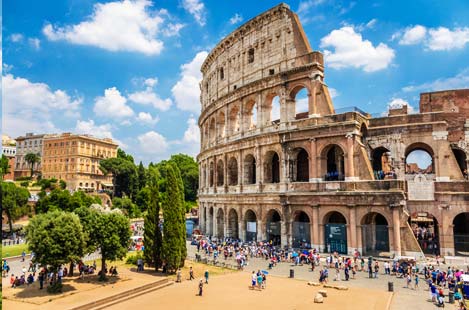
Discover interesting sites
archaeological sites museums
Events and exhibitions
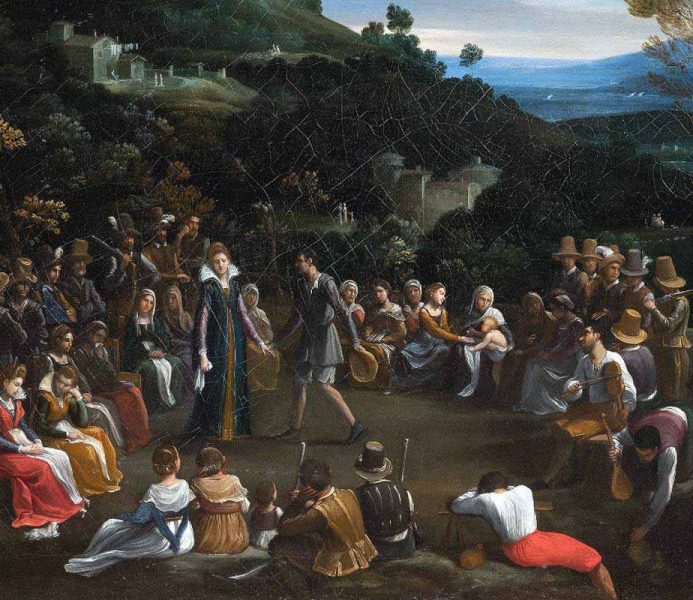
Events you don't want to miss
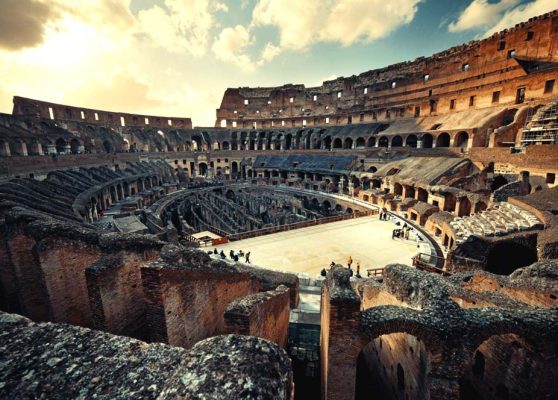
Book your tickets and visits
Guided tour
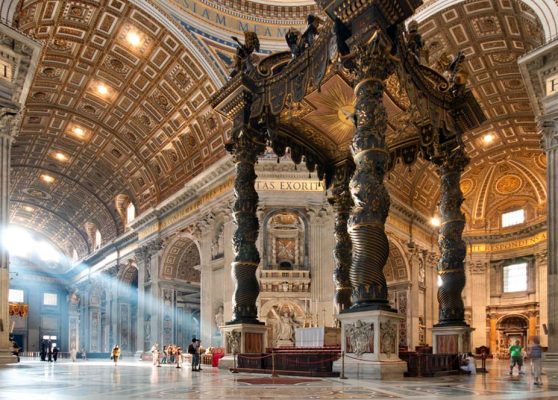
Book your guided tour
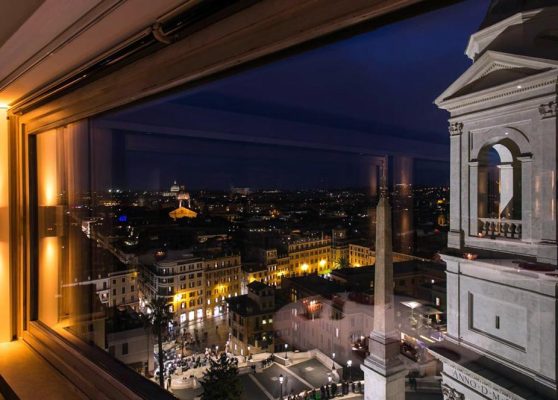
Book your stay in Rome
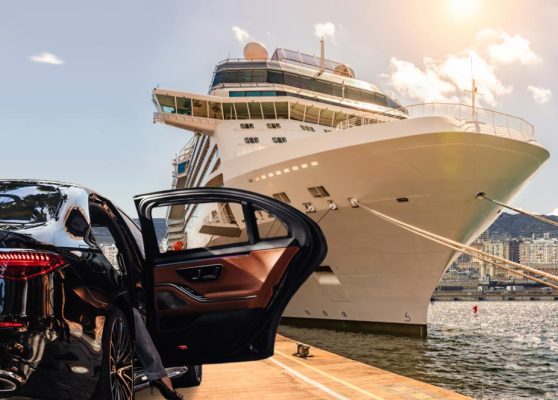
Car rental with driver
Tickets: recensioni e commenti
Hai visitato questo monumento? Cosa rappresenta per te? Quali consigli daresti ad un turista?
Latest news from the magazine
Uncategorized

This year, Rome made a triumphant entry on the list, reaching the top spot as the world's food destination and the fourth place as the world's most...
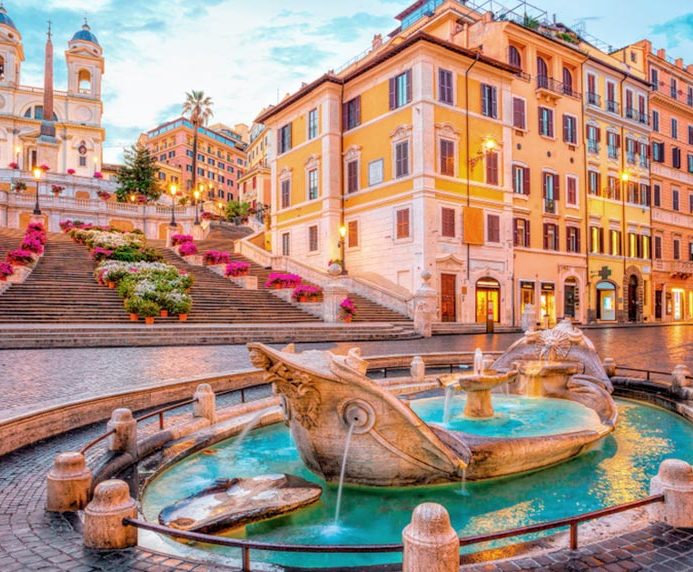
The fountains of Rome The Romans have been passionate enthusiasts of public water since ancient times and the countless fountains present in the...
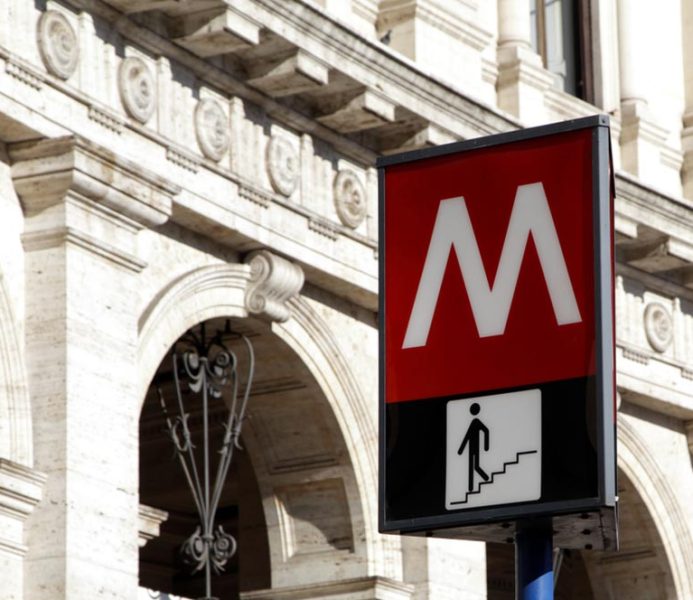
In order to move in the city of Rome there are many solutions provided by public transport that connect the different areas. To use buses, trams and...
Questo sito utilizza cookie tecnici e di profilazione. Proseguendo la navigazione acconsenti all'uso dei cookie. Maggiori informazioni . Accetto
You are using an outdated browser. Please upgrade your browser .
- Book your Rome tickets here!

ROMA METRO CARD – Public transport in Rome
Public transport card – the best way to travel in rome.
The metro in Rome is 73 stations, 60 km of tracks and 770 000 passengers per day. The metro station “Metropolitana” has been in operation since 1955. It has three lines in operation: line A, line B and line C.
The Rome Metro is managed by the company ATAC S.P.A. which itself is administered and controlled by the Municipality of Rome.Line B is in the process of extension; line C, automatic, opened in November 2014 and is in the process of being extended; finally a line D is in project.
Rome’s public transport also includes 3 surface railway lines and 8 regional railway lines (FL: Ferrovie Laziali) FL1 to FL8 serving mainly the Roman agglomeration managed by the Italian Railways Company (Trenitalia ). All these lines are used as part of a unified tariff package.
ROME METRO OVERVIEW
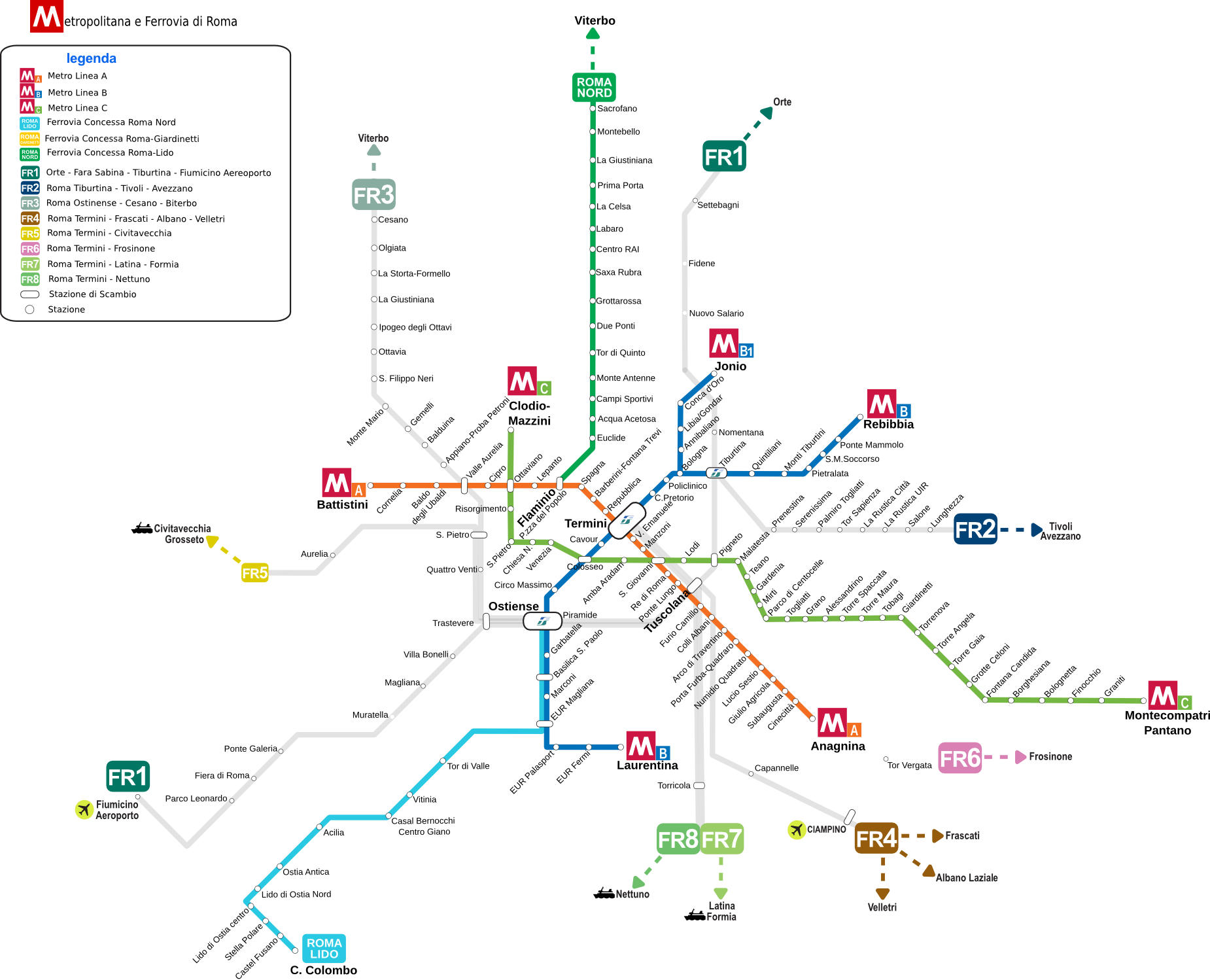
Rome metro card (includes also metro, bus, tram and Airport Bus from Ciampino)
Travelling to Rome? You want to visit all the highlights at your own speed? this Rome public transportation tickets is
In the 1930s, the current government decided to begin work on the metro, with the primary objective of opening a rapid link between the Termini station and the new district planned for the 1942 World’s Fair. never took place, because of the entry into the war of Italy in 1940. Some existing galleries became anti-aircraft shelters during the bombing.
Work resumed in 1948 and the first line was inaugurated by the President of the Republic Luigi Einaudi on February 9, 1955.
The idea was to develop a metro network similar to that of Paris or London, but countless causes (bureaucracy, disagreements over priorities, revisions of plans and continual archaeological discoveries) delayed development. It was not until 1959 that a law approved the construction of a second metro line, from Osteria del Curato (better known as Anagnina) to the Prati district, passing through the center of Rome. and crossing the already existing line at Termini Station.
Work began in 1964 in the Via Tuscolana area. They were weighed down by a series of delays and uncertainties, mainly due to poor organization. To begin with, it was originally planned to work in the open, but this way paralyzed so much traffic in the southeast area of Rome that the work was stopped. They did not recover until five years later by digging tunnels. But even if the traffic was less disturbed, the induced vibrations caused serious damage to the buildings located near the route of work.
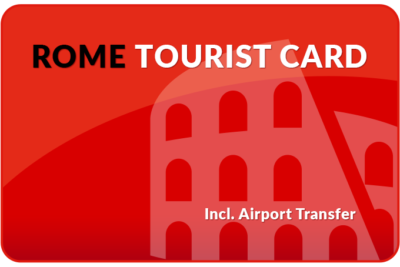
City Pass Rome – 100% Mobile – Fast track entrance
ROMA PASS : Rome Tourist Card The Rome tourist card is a great option for those who wish to enjoy
ALL THE LINES
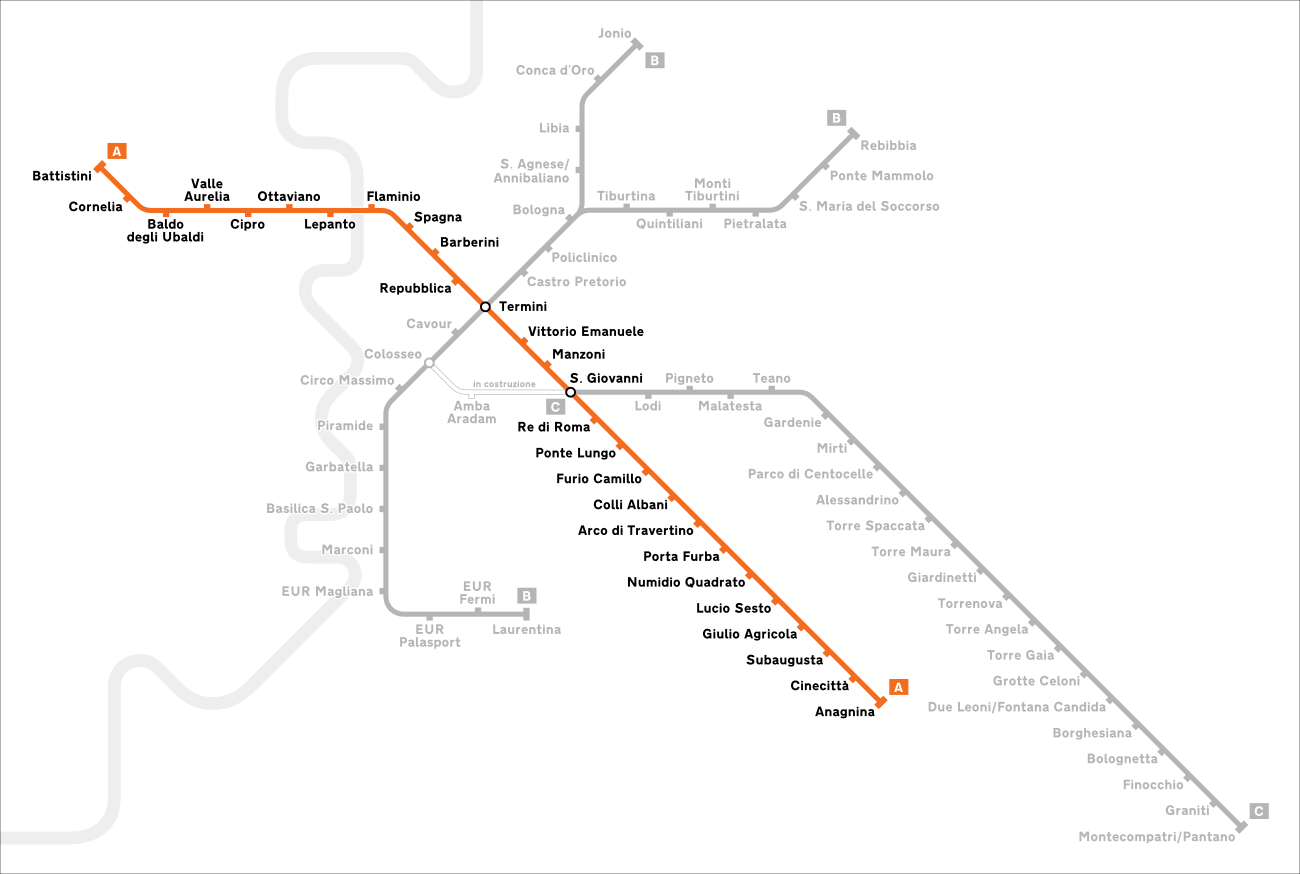
How long is a two way ticket (or return ticket you can say )for the Leonardo Express valid?
It is valid the all day
Is the Airport pass only from the Airport or can you use it to go to the airport?
The 72 hour metro card does it start the time when you first use it? ie: can we buy it on a Tuesday and not use it until Saturday as our first trip?
Dear Stacy, It’s start from when you use it for the 1st time
Can the MetroBus 72 hr card be used also on the train from or to FCO Airport?
No , you should buy a train ticket for leonardo-express.com
How much does a metro card for 2 days cost? Where do you buy them?
Leave a Comment Cancel reply
Your email address will not be published. All fields are required.

Passing Thru Travel
Discover Rome – A Comprehensive 12-Step Traveler’s Guide
Posted: February 28, 2024 | Last updated: February 28, 2024
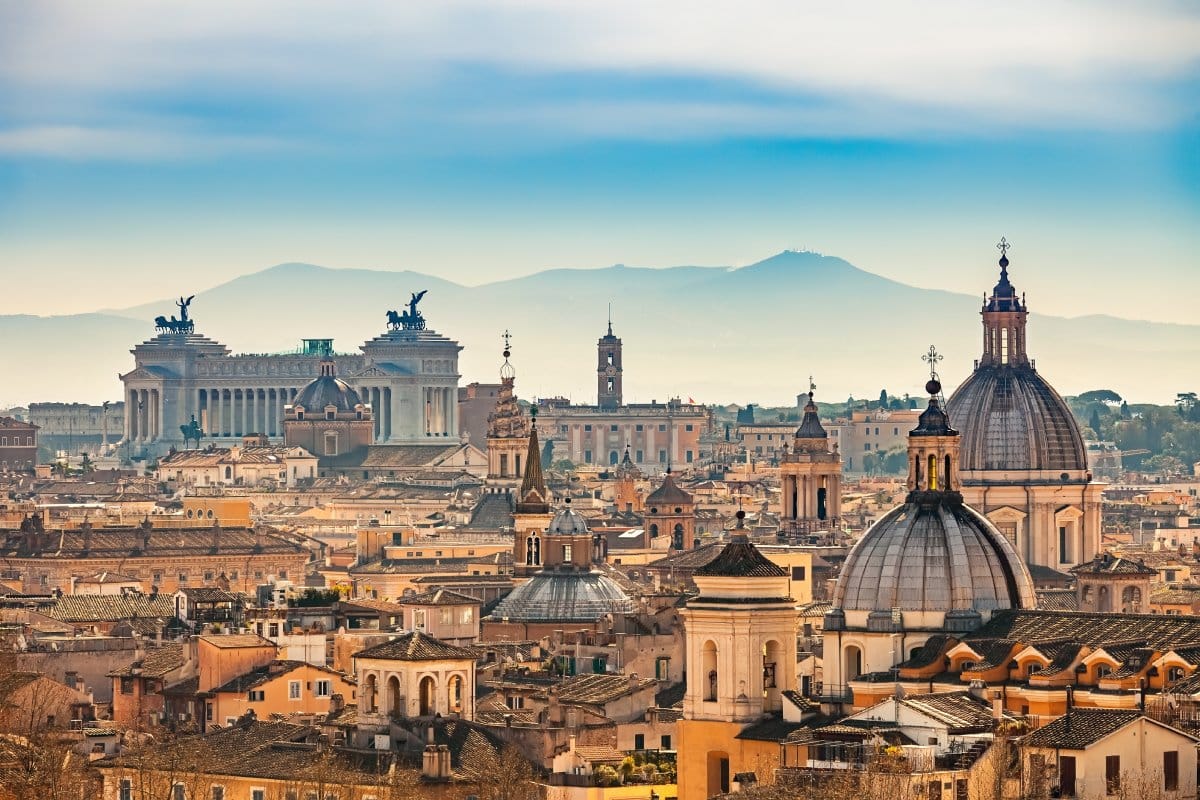
Rome, where history and modernity intertwine seamlessly, offers an unparalleled journey through time. Known as the Eternal City, Rome is a living museum boasting ancient ruins, Renaissance art, and vibrant street life. This guide will navigate you through Rome’s most iconic landmarks and hidden gems, ensuring a well-rounded experience of this timeless city. From the grandeur of the Colosseum to the charm of Trastevere’s narrow streets, get ready to explore the depths of Rome’s rich history and culture.

1. The Colosseum
The Colosseum, an enduring symbol of ancient Roman engineering and architecture, is a must-visit. Once the arena for gladiator battles, it now stands as a monument to Rome’s imperial past. Exploring the Colosseum, you can almost hear the roaring crowds’ echoes and gladiator swords’ clashing. Its massive structure and complex history make it a fascinating site for history enthusiasts and casual visitors.
Insider’s Tip: Purchase a combined ticket with entry to the Roman Forum and Palatine Hill to make the most of your visit.
How To Get There: The Colosseum is conveniently accessible via the Colosseo metro station.
Best Time To Travel: Visit during the off-peak seasons, in early spring or late fall, to avoid the crowds and extreme heat.
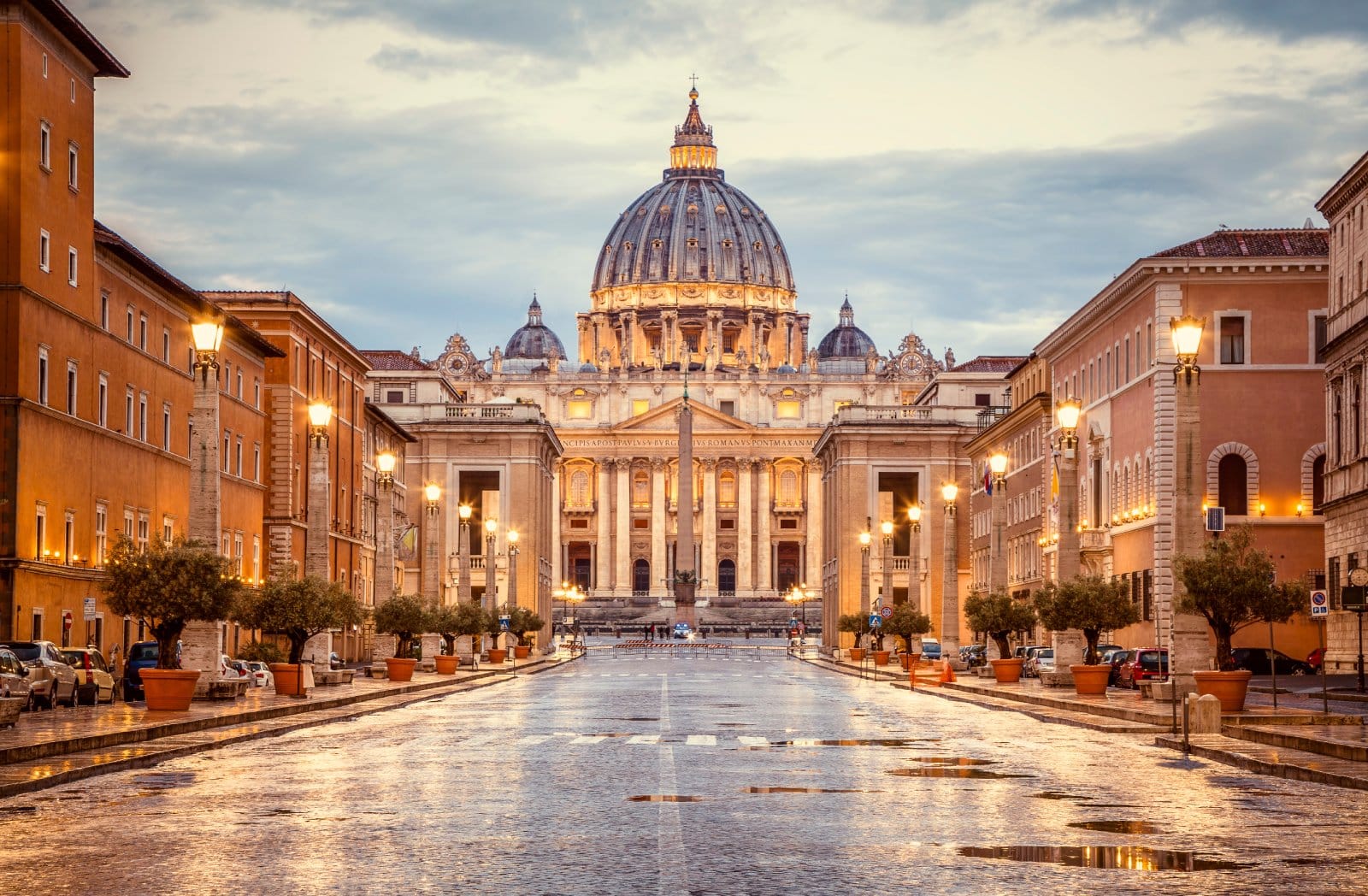
2. Vatican City
Vatican City, the heart of the Catholic world, is a sovereign state within Rome. Home to the Pope, the Vatican is also a treasure trove of artistic and cultural riches. The Vatican Museums house a vast collection of art and historical pieces, including the Sistine Chapel with Michelangelo’s famous ceiling. St. Peter’s Basilica, with its impressive dome designed by Michelangelo, is an architectural masterpiece offering panoramic views of Rome from its summit.
Insider’s Tip: Reserve a guided tour for early morning to access the Sistine Chapel before it opens to the general public.
How To Get There: Reach Vatican City via the Ottaviano metro station, followed by a short walk.
Best Time To Travel: Visit during the winter months to avoid long lines and crowded spaces.
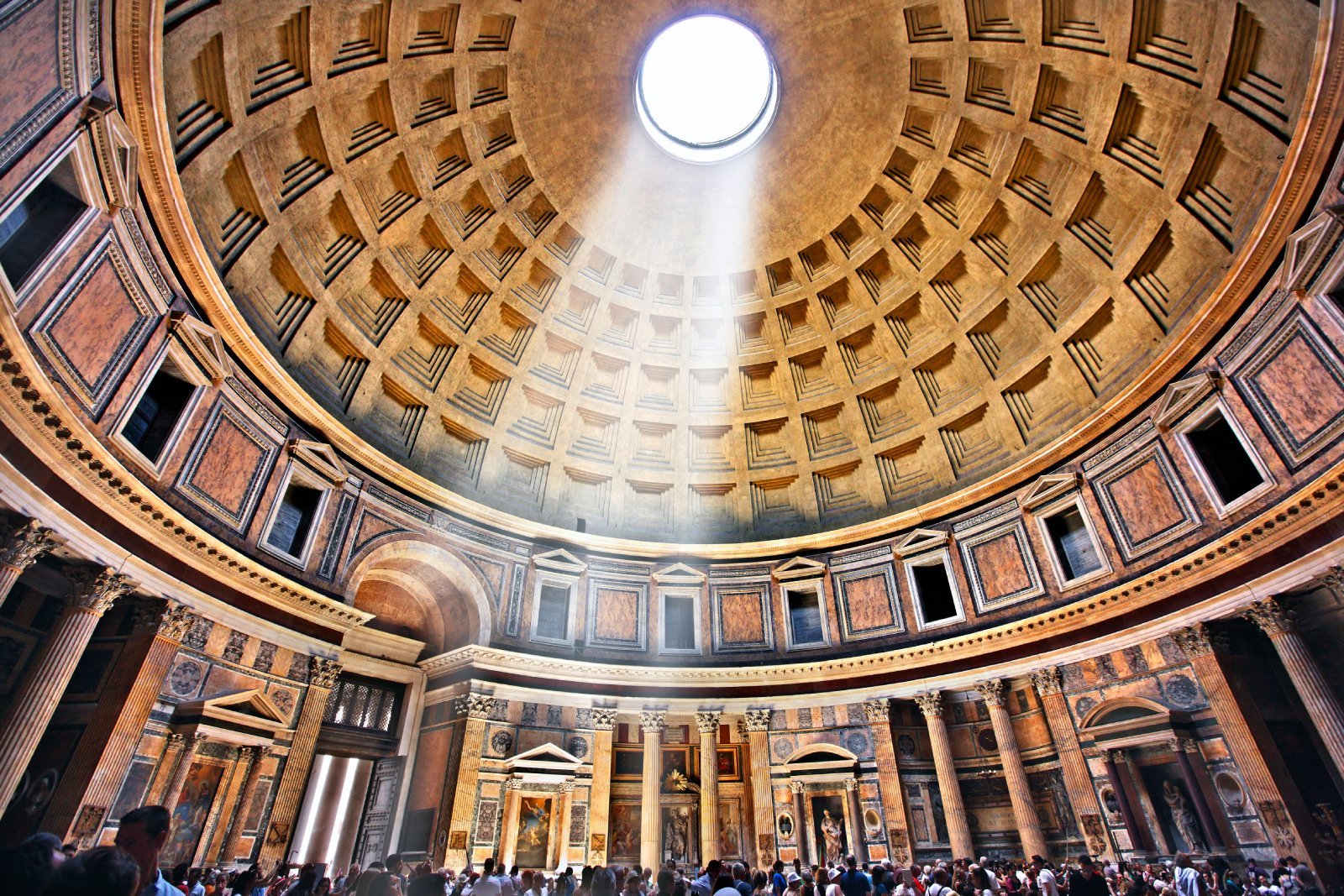
3. The Pantheon
The Pantheon, an impressive feat of ancient Roman architecture, is known for its perfectly proportioned dome, the largest unreinforced concrete dome in the world. Originally built as a temple to all gods, it now serves as a church and a tomb for notable figures, including the artist Raphael. The building’s harmonious proportions and the oculus, a circular opening at the dome’s apex, create a unique and awe-inspiring interior atmosphere.
Insider’s Tip: Visit on a rainy day to see the captivating sight of rain falling through the oculus and evaporating before it hits the ground.
How To Get There: The Pantheon is centrally located and best reached by foot from other nearby attractions like Piazza Navona.
Best Time To Travel: Early mornings or late afternoons are less crowded, offering a more serene experience.
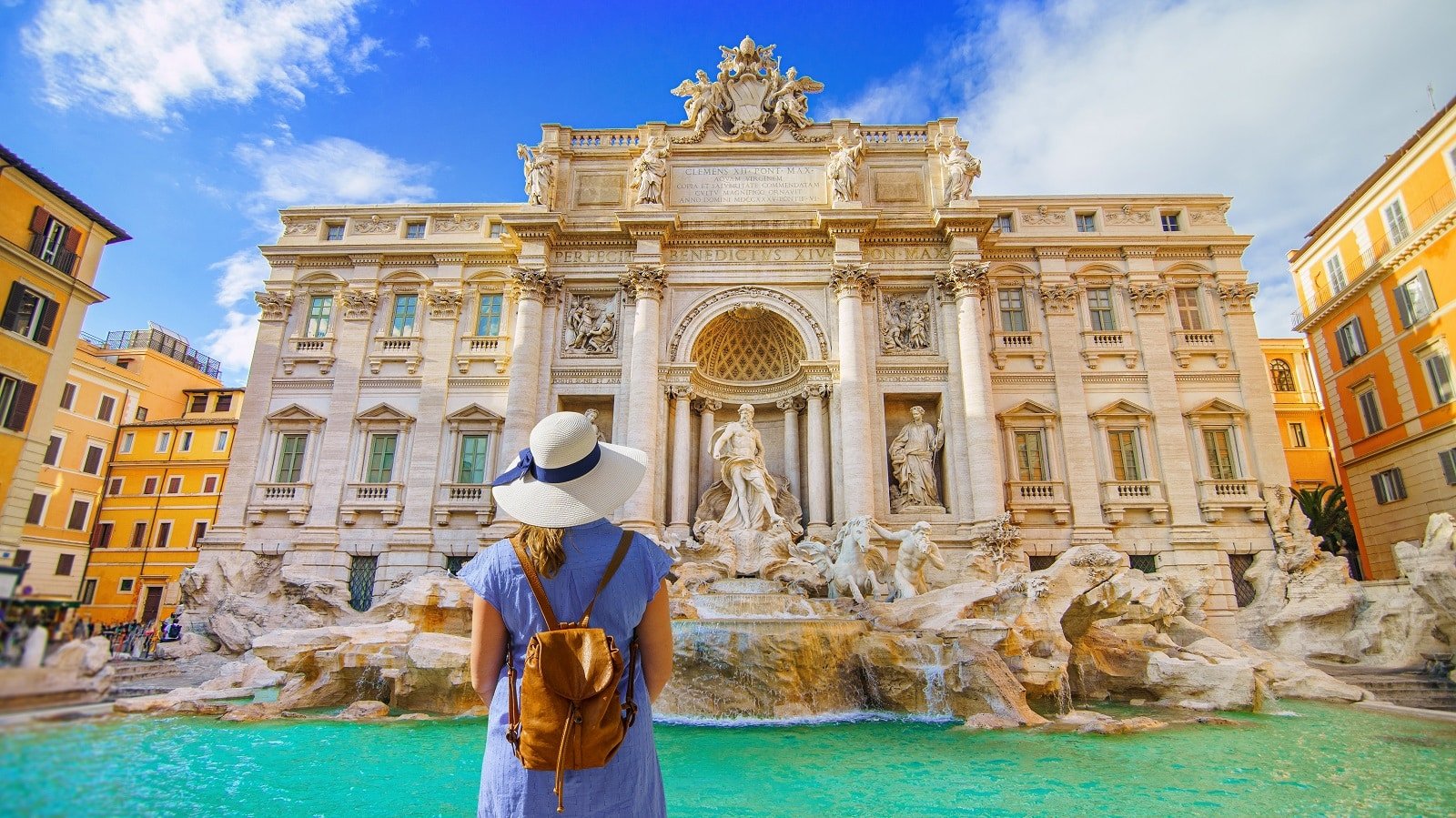
4. Trevi Fountain
The Trevi Fountain, an iconic baroque masterpiece, is not only a visual spectacle but also a testament to Rome’s historical relationship with water. The fountain, featuring the god Oceanus, stands at the end of the Aqua Virgo aqueduct and is one of the oldest water sources in Rome. According to legend, throwing a coin over your shoulder into the fountain ensures a return to Rome.
Insider’s Tip: Visit the fountain at night when it’s beautifully illuminated and less crowded.
How To Get There: The Trevi Fountain is within walking distance from the Barberini metro station.
Best Time To Travel: Early morning or late evening visits allow you to appreciate the fountain’s beauty without the crowds.
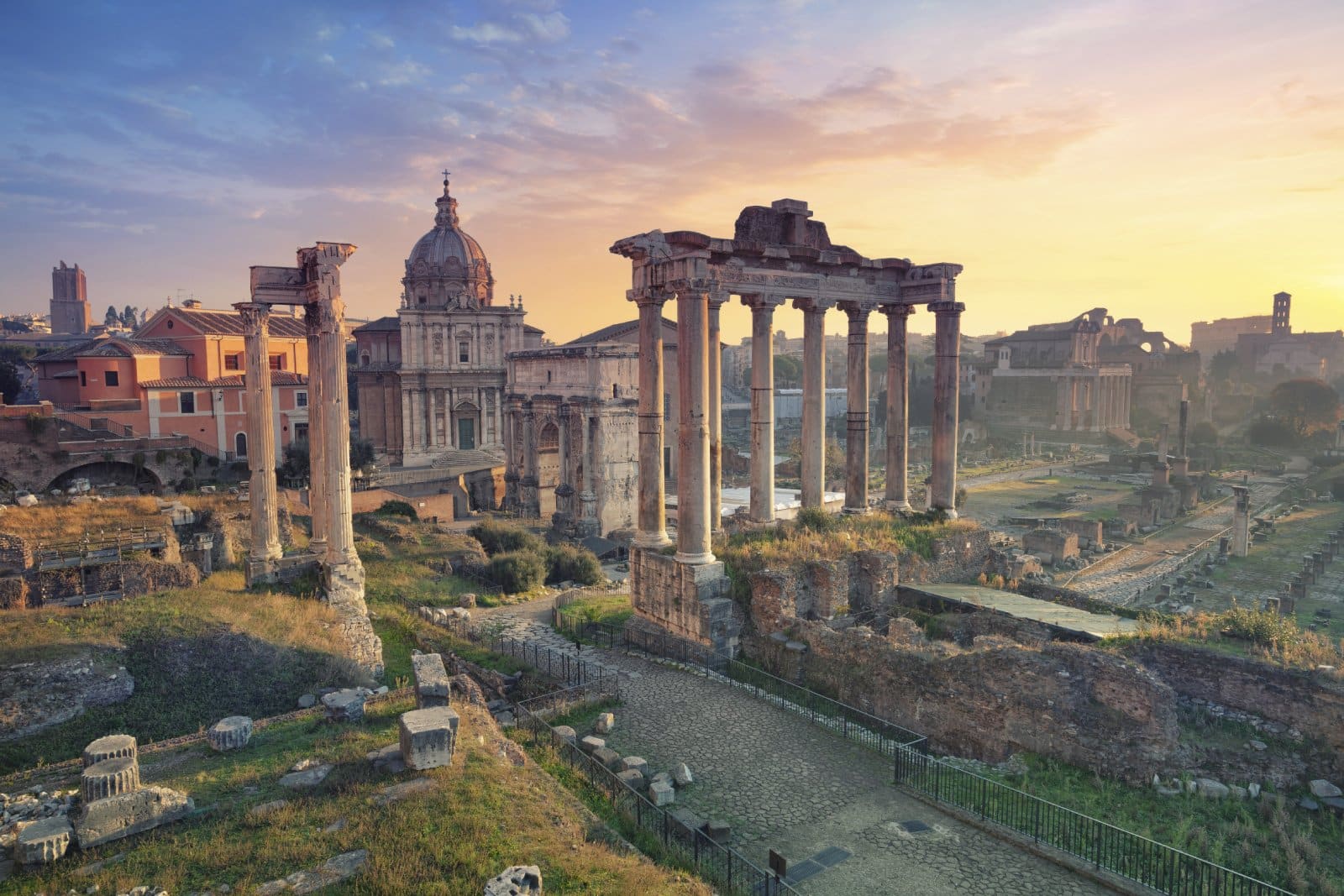
5. Roman Forum
Once the center of public and political life in ancient Rome, the Roman Forum is a sprawling complex of ruins. Walking through the Forum, you’re tracing the steps of Roman emperors and citizens amidst temples, arches, and government buildings that once defined the city’s daily life. The site offers a profound sense of history, as each ruin has its own story, contributing to the narrative of Rome’s glorious past. The Forum appeals to history buffs and anyone seeking to understand the depth of Rome’s historical significance.
Insider’s Tip: Climb the Palatine Hill for a panoramic view of the entire Forum area.
How To Get There: The Roman Forum is close to the Colosseum and can be accessed easily from the Colosseo metro station.
Best Time To Travel: Visit early in the morning to avoid the heat and crowds, especially in summer.
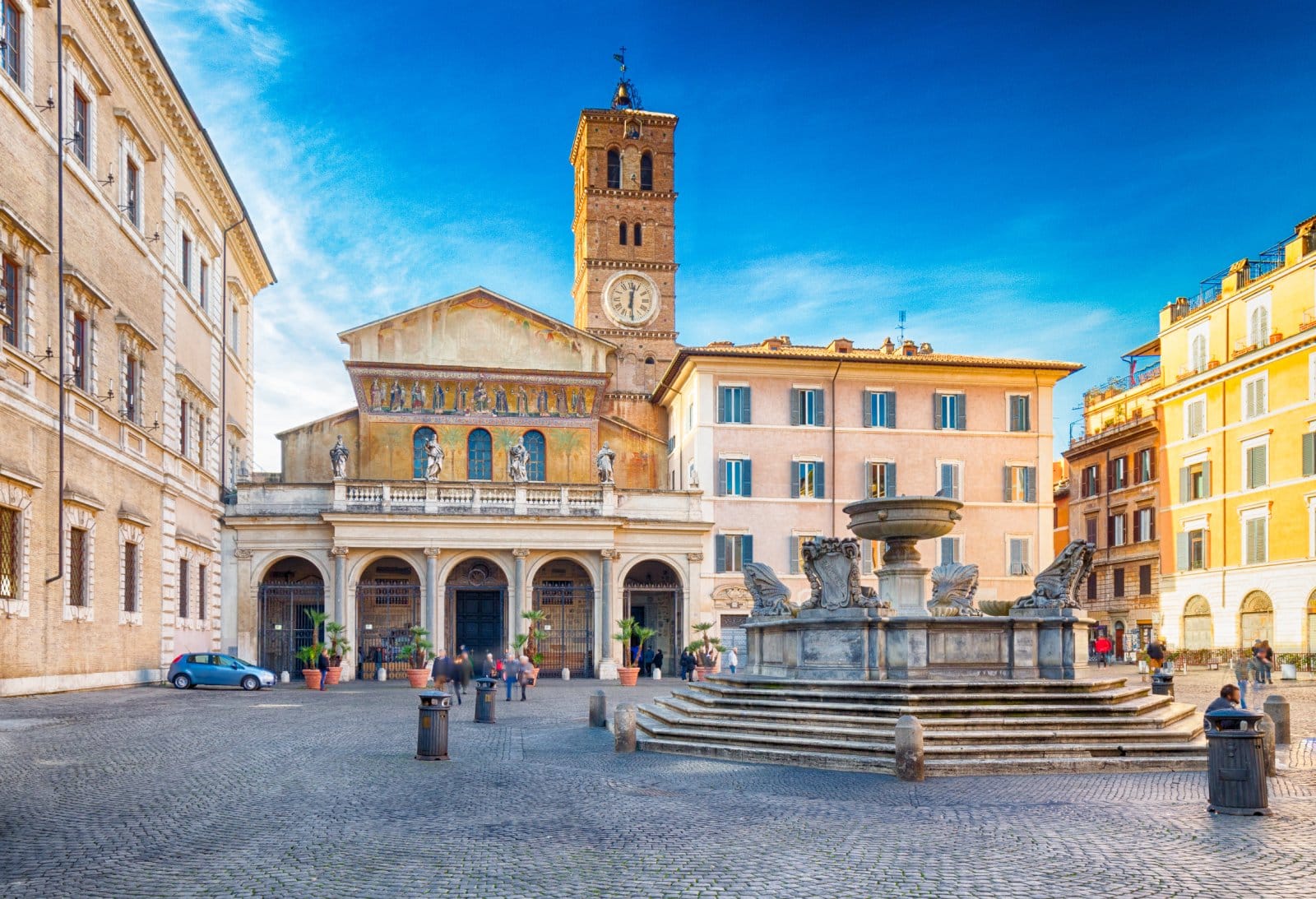
6. Trastevere
Trastevere, known for its narrow cobblestone streets and medieval charm, offers a glimpse into the more traditional side of Rome. This vibrant neighborhood, with its ivy-clad buildings, artisan shops, and trattorias, has a unique character and laid-back atmosphere. Walking through Trastevere, you’ll find hidden piazzas, historic churches, and local markets, each adding to the area’s enchanting appeal. It’s an ideal place to enjoy authentic Roman cuisine and experience the city’s lively nightlife.
Insider’s Tip: Dine at a local trattoria for a traditional Roman meal away from the tourist-heavy areas.
How To Get There: Trastevere is easily accessible by bus or tram, but exploring on foot from the city center offers a more immersive experience.
Best Time To Travel
Evening time is perfect for experiencing Trastevere’s lively atmosphere, while daytime offers a quieter exploration of the neighborhood.
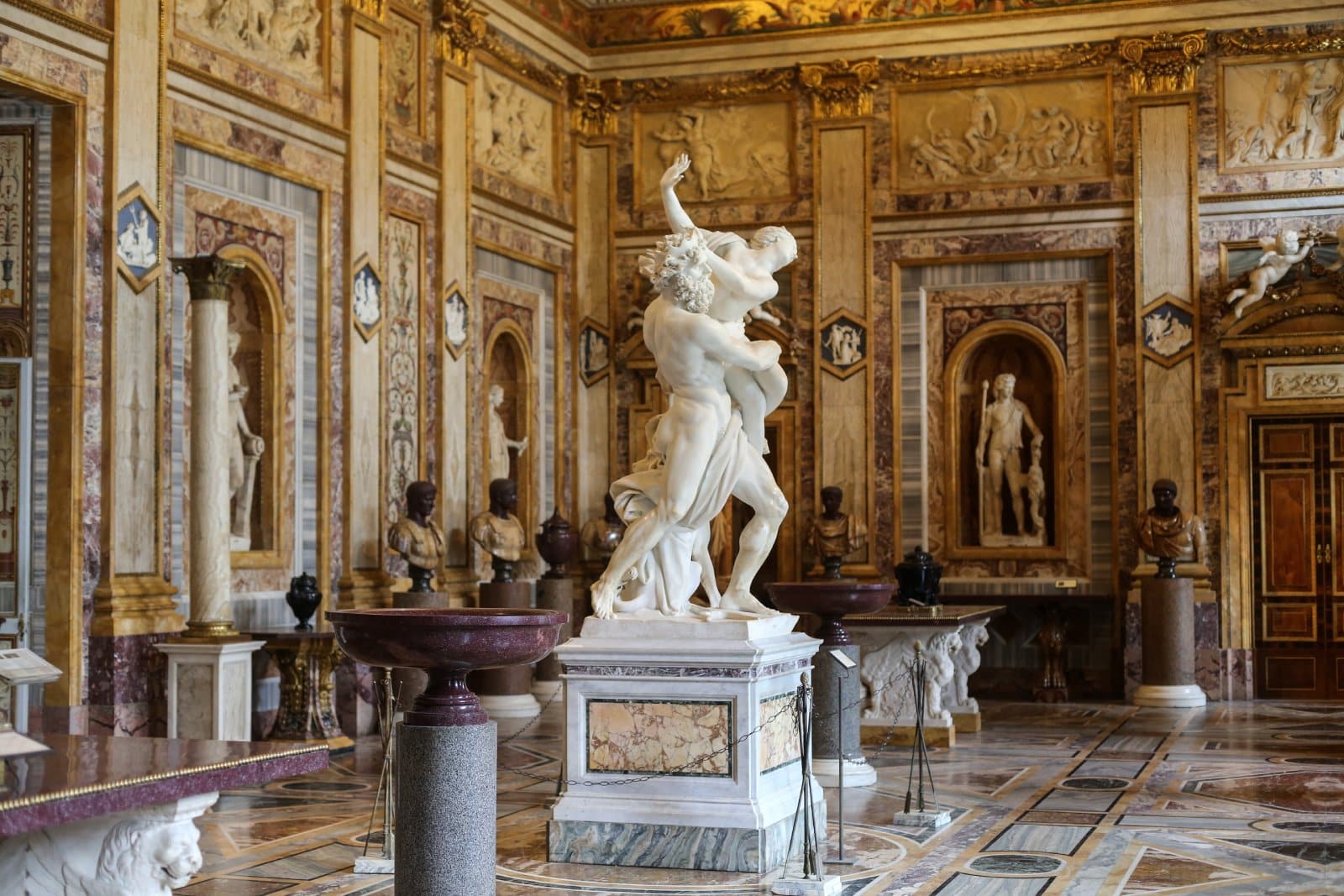
7. Galleria Borghese
The Galleria Borghese is one of Rome’s most remarkable art galleries, housing a substantial collection of sculptures and paintings. Located in the lush Borghese Park, the gallery includes masterpieces by artists such as Bernini, Caravaggio, and Raphael. The villa is an architectural sensation, and the surrounding gardens provide a peaceful retreat from the city’s hustle and bustle.
Insider’s Tip: Booking tickets in advance is essential, as the gallery limits the number of visitors to preserve the tranquil atmosphere.
How To Get There: The gallery is located in the Borghese Park, reachable by bus or a pleasant walk through the park from the city center.
Best Time To Travel: Weekday visits usually mean fewer visitors, providing a more intimate viewing experience.

8. Campo de’ Fiori Market
Campo de’ Fiori is a bustling marketplace by day and a lively social square by night. The market offers a range of fresh produce, flowers, spices, and Italian specialties, making it a colorful and sensory experience. Exploring the market, you’ll find everything from local cheeses and cured meats to artisanal pastas and oils. It’s not just a place for shopping; it’s a vibrant part of Roman life where locals and tourists mingle.
Insider’s Tip: Visit early in the morning to see the most lively market and get the best selection of fresh produce.
How To Get There: Campo de’ Fiori is centrally located and within walking distance from many major sites, including Piazza Navona.
Best Time To Travel: The market operates every morning except Sundays.
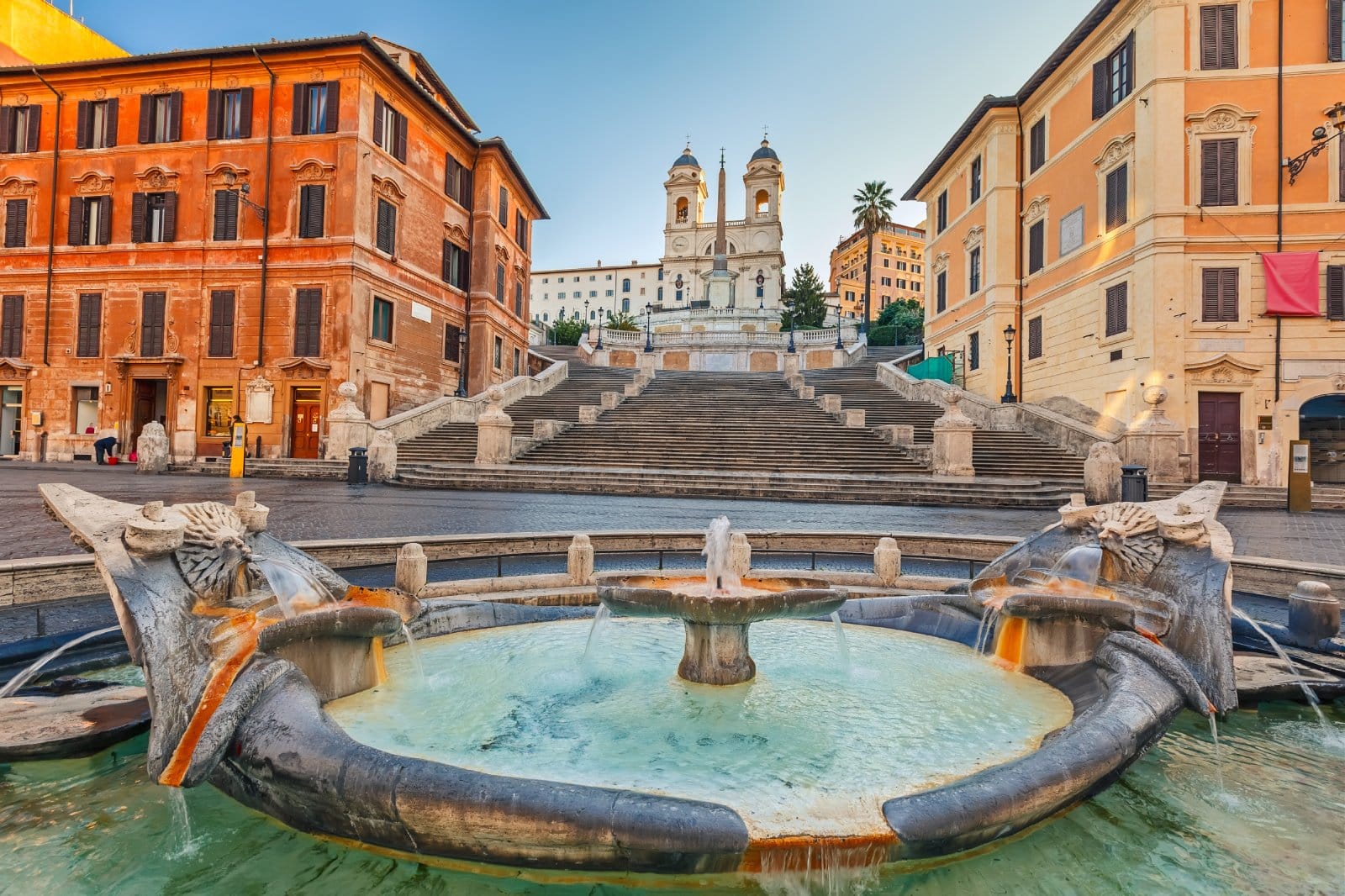
9. Spanish Steps
The Spanish Steps, an architectural and cultural icon of Rome, connect the Piazza di Spagna at the base with the Piazza Trinità dei Monti at the top. Climbing the steps offers a delightful view of the city’s rooftops. It is a popular spot for locals and tourists to gather. The steps are not just a passageway but a place to pause, enjoy the atmosphere, and people-watch.
Insider’s Tip: Visit during spring when the steps are adorned with beautiful flowers, enhancing their iconic charm.
How To Get There: The Spanish Steps are a short walk from the Spagna metro station, easily accessible from various parts of the city.
Best Time To Travel: Early mornings or late evenings offer a more peaceful experience, as the steps can be crowded during the day.
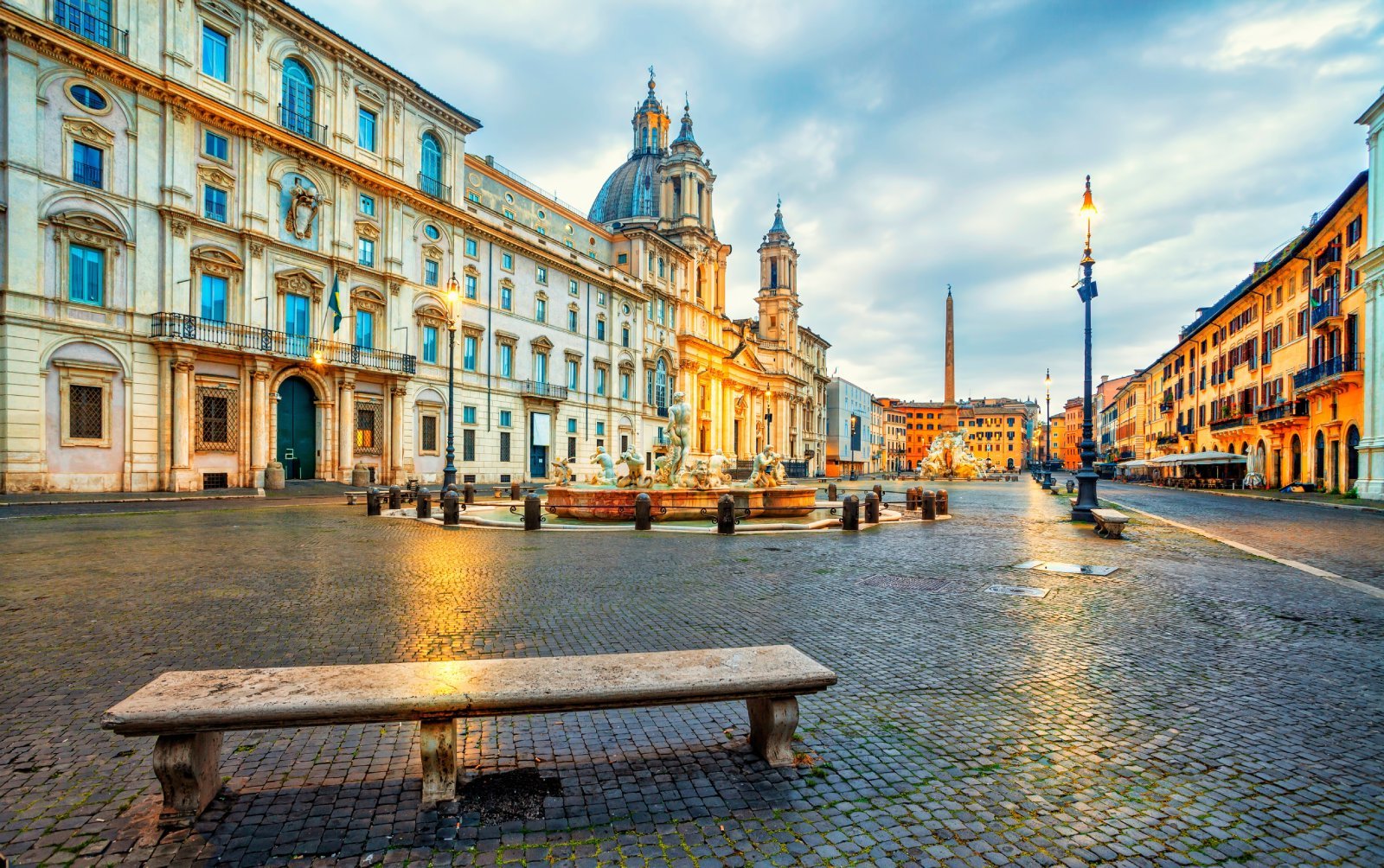
10. Piazza Navona
With its stunning Baroque architecture, Piazza Navona is one of Rome’s most famous squares. Once a Roman stadium, the piazza is lined with restaurants, gelaterias, and bustling cafes today. Its centerpiece is the Fountain of the Four Rivers, designed by Bernini, representing the world’s major rivers across four continents. The square is a feast for the eyes and a hub of artistic and cultural activity, often hosting street artists, painters, and musicians.
Insider’s Tip: Enjoy a coffee or aperitivo at one of the cafes surrounding the piazza for prime people-watching and a view of the fountains.
How To Get There: Piazza Navona is centrally located and best reached on foot from other nearby attractions in the city center.
Best Time To Travel: Visit in the late afternoon or early evening to enjoy the lively atmosphere and beautiful lighting.
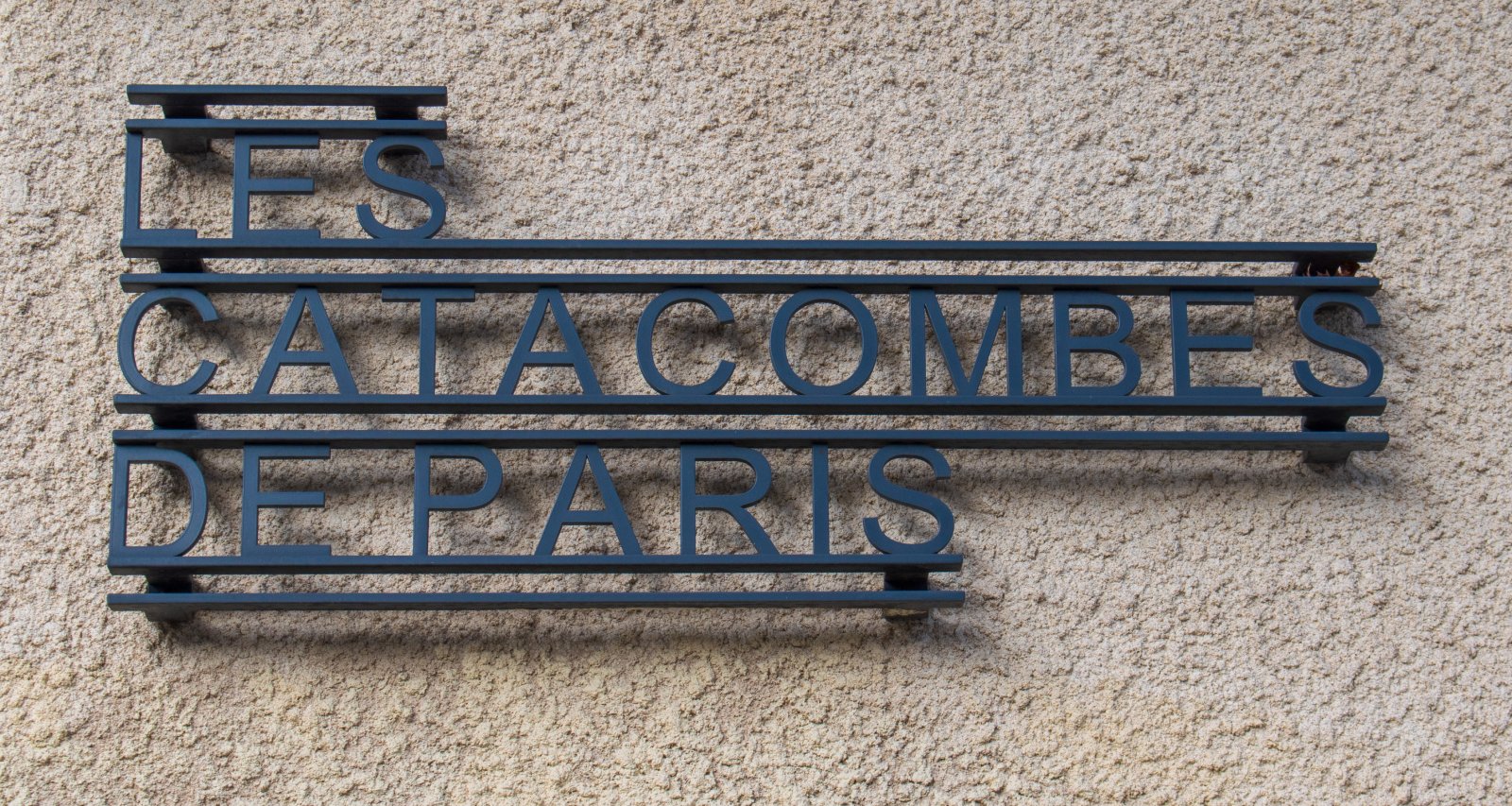
11. The Catacombs
Rome’s catacombs are ancient underground burial places that offer a unique glimpse into early Christian history and burial practices. The Catacombs of San Callisto and San Sebastiano are among the most visited, featuring miles of underground passageways and tombs. A guided tour of the catacombs provides insight into the fascinating and somewhat eerie world beneath Rome’s streets.
Insider’s Tip: Wear comfortable shoes as the tours involve walking through narrow and sometimes uneven passageways.
How To Get There: The catacombs are located outside the city center, accessible by bus or a combination of metro and bus.
Best Time To Travel: The catacombs maintain a cool temperature year-round, making them a good visit any time, but they are less crowded during the off-peak seasons.
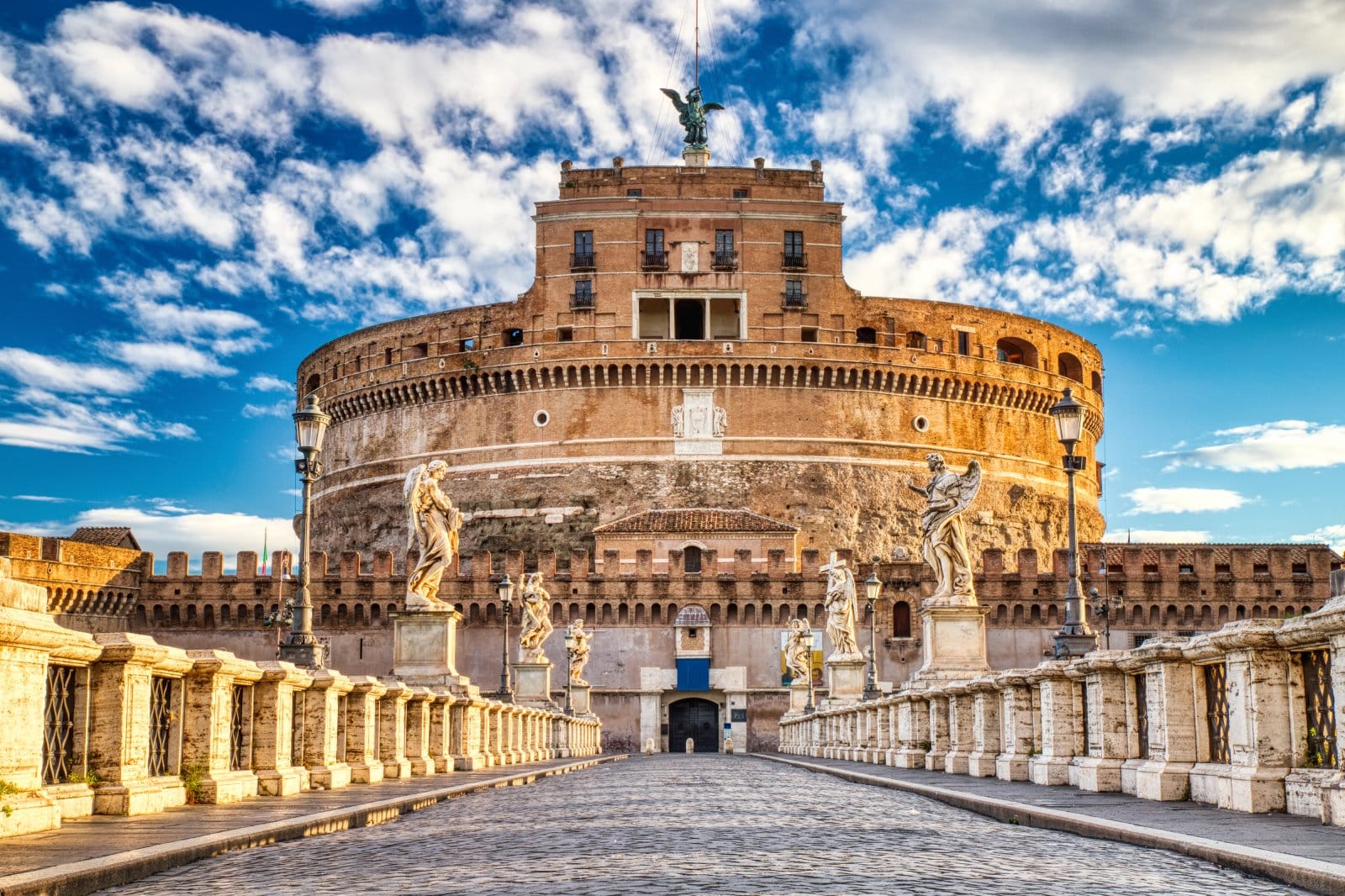
12. Castel Sant’Angelo
Castel Sant’Angelo, initially built as a mausoleum for Emperor Hadrian, has served various roles throughout history, including a fortress, a papal residence, and now a museum. The castle offers a rich history to explore, along with stunning views of the city and the Tiber River from its terrace. The bridge leading to the castle, Ponte Sant’Angelo, is adorned with beautiful angel statues and provides a picturesque approach to the fortress.
Insider’s Tip: Visit in the late afternoon to experience the sunset from the castle’s terrace, offering one of the best views in Rome.
How To Get There: The castle is within walking distance from Vatican City and is easily accessible by foot or public transport.
Best Time To Travel: Early morning or late afternoon visits are recommended to avoid crowds and to enjoy the view in the best light.
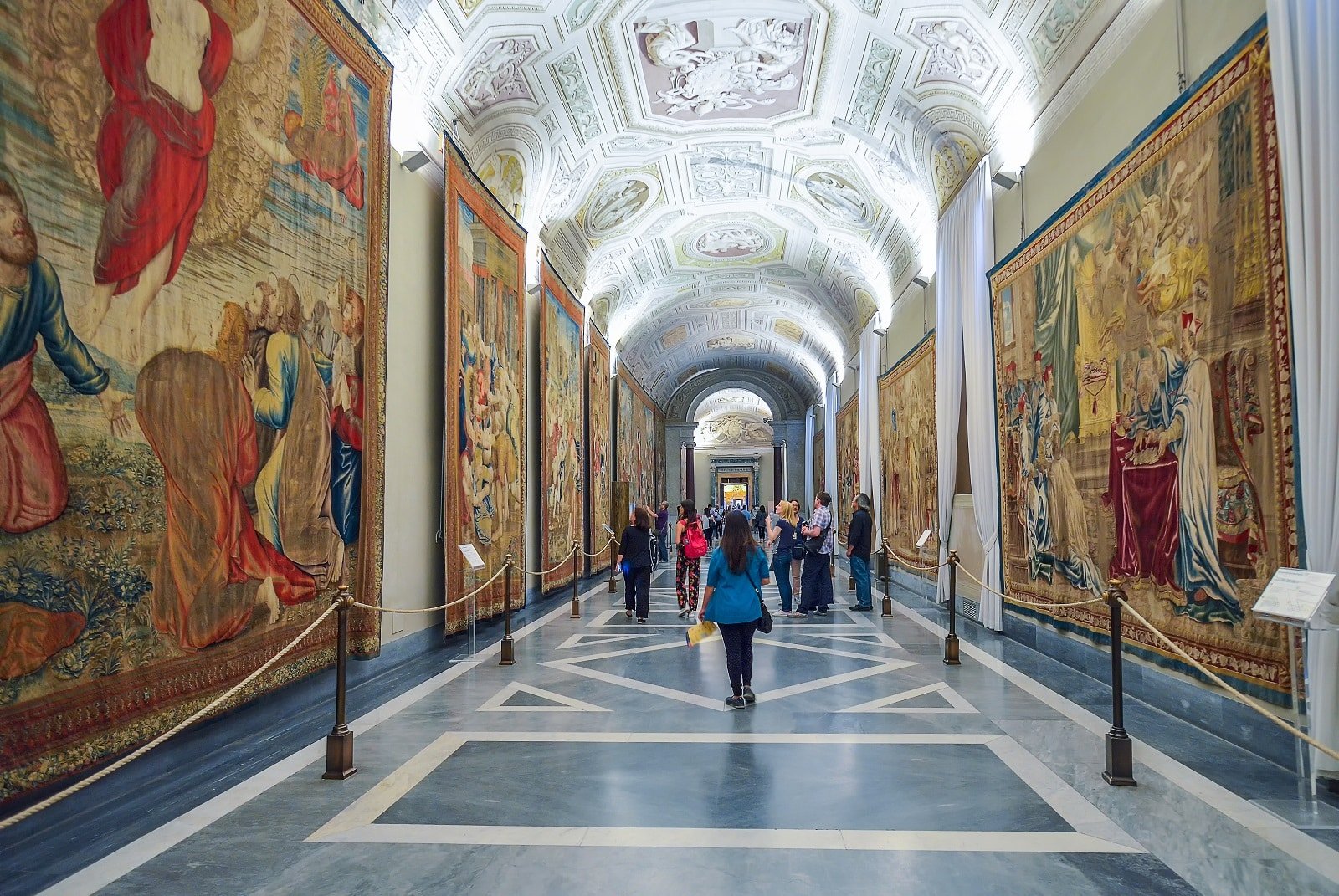
The Bottom Line
Rome is not just a city; it’s a living museum, a testament to the grandeur of human civilization. Each cobblestone street, ancient ruin, and magnificent artwork tells a story of a past era, inviting you to be a part of its ongoing narrative. As you wander through Rome, remember that you’re walking in the footsteps of emperors, artists, poets, and philosophers.
Your journey through this eternal city is an exploration into the heart of human history and creativity. Embrace each moment, savor each experience, and let Rome’s timeless beauty inspire and enchant you. Buon viaggio!
More Articles Like This…
Barcelona: Discover the Top 10 Beach Clubs
2024 Global City Travel Guide – Your Passport to the World’s Top Destination Cities
Exploring Khao Yai 2024 – A Hidden Gem of Thailand
The post Discover Rome – A Comprehensive 12-Step Traveler’s Guide republished on Passing Thru with permission from The Green Voyage .
Featured Image Credit: Shutterstock / S.Borisov.
For transparency, this content was partly developed with AI assistance and carefully curated by an experienced editor to be informative and ensure accuracy.
More for You
Caitlin Clark’s rookie salary with WNBA sparks outrage
US Navy warships shot down Iranian missiles with a weapon they've never used in combat before
Ketanji Brown Jackson's New Warning To Supreme Court
Is It Safe To Grill Frozen Hamburger Patties Straight From The Freezer?
TikTok star Kyle Marisa Roth dies at 36
One of the best British spy dramas of all time is finally streaming on Netflix
The Pool Noodle Hack That Makes Spray Painting Cabinet Doors A Breeze
The passport rule that prevented Vicky Pattison from boarding her flight – and how to avoid the same mistake
The Best Met Gala Entrances, from Lady Gaga to Rihanna
U.S. women’s track Olympians say photo was shocking but uniform isn’t
These Are 10 Smells That Cats Absolutely Hate
Corrupt politicians may get a big break. And it hinges on how SCOTUS justices define one word.
Tech trick: How to tell who’s calling when you don’t recognize the phone number
The Coolest Car From the Year You Were Born (1945-1995)
A Russian tank was seen charging into battle with a giant, makeshift metal roof on top of it as Ukraine leans into drone attacks
12 Rude Things You Probably Shouldn’t Be Doing at the Grocery Store
Where is Jennifer Pan from ‘What Jennifer Did’ now?
US man who deflected hockey puck flying directly at boy, 4, hailed as hero
29 Ridiculous Lies That Hollywood Has Managed to Mainstream
Republicans Suddenly Cancel Multiple Bills
FYI, something just happened!
This is just an info notification message.
Oops, an error occurred
This is just an error notification message.
Wait, I must warn you!
This is just a warning notification message.
Congrats, you did it!
This is just a success notification message.
- Pressrelease
- Aer Lingus’ 24-hour Flash Sale on Rome flights is ...
Press release Aer Lingus’ 24-hour Flash Sale on Rome flights is live!

- Deal of the Week: 24 hour flash sale offering up to 50% off flights to Rome ending at 11:59 PM on 17th April
- Travel from 1st May to 31st May
- North American transatlantic fares starting from €199 each way
- Live from now until 22nd April
- Valid for travel from 1st May – 15th June
17th April 2024: Act fast! The Aer Lingus flash sale offering up to 50% off fares to Rome is live now and ends at 11:59 PM tonight. Jetsetters who take advantage of this offer can book flights for travel from the 1st – 31st May.
Aer Lingus’s latest ‘deal of the week’ is offering all history buffs, foodies and sun-seekers the chance of a lifetime to visit this historic city for up to half off the fares. Do as the romans do this summer and take in the grandness of the Colosseum, enjoy fresh pasta in the sun and make a wish in the Trevi fountain. With all that the city centre has to explore, as well as historic sites such as the Vatican only a metro ride away, Rome has something to offer all passengers looking for an escape this summer.
For those looking to travel further afield, Aer Lingus also has a sale on transatlantic flights with fares starting at €199 each way. This offer is on now until the 22nd April and valid for travel from 1st May – 15th June.
Aer Lingus holidaymakers seeking the allure of North America are spoiled for choice with the 16 transatlantic destinations the airline has on offer. Learn more about the USA’s origins with a road trip through New England, touching down in the heart of America’s history, Boston or Philadelphia. For those looking for sunshine and adventure Aer Lingus’ new route to Denver is there for the taking. These exciting routes, alongside beloved classics such as Los Angeles, New York, Chicago, San Francisco, Minneapolis, Toronto and Hartford, are all on offer for those looking to shake up their summer plans.
Whether its an Italian short break or a North American adventure, passengers won’t want to miss these summer savings!
For more information on this offer, please visit www.aerlingus.com .
Notes to editor
From 8th May Aer Lingus will operate 3 flights daily to Rome from Dublin
- EI 402 0620 1025
- EI 404 1025 1430
- EI 406 1545 1945
Transatlantic Destinations from Ireland, summer 2024
- New York, JFK (Dublin and Shannon)
- Newark, New Jersey
- Boston (Dublin and Shannon)
- Washington, DC
- Hartford, Connecticut
- Philadelphia
- Orlando, Florida
- Los Angeles
- San Francisco
- Cleveland, Ohio
- Miami (operate as part of winter schedule until 29th March, 2024)
- Minneapolis St-Paul (commencing April 29th, 2024)
- Denver Colorado (commencing May 17th, 2024)

AOoWksFgly0VhwLVU4010TGzrgi3OTO0WZsyjhnr0bNAKBI824elrAvGdYSBYHiHSJJfCqWYhm87thFYKjaCviVBFEo9vdPgNQGAi1tINCmfys5U3FxtoaFrSchXbQXG1YH3pBLw4VIYsG0ky8uPUdnJTdmtYbhvAnJxEvPDrrAGuSMnOewYXlKII0iMbzG7fC5K8E74wNpFJXgZh84eAOxk8CaKIVDmOlpHk9f1u9YkPVNDPx3Ox8f9QVIDGu1nIMWZoE4iB99XLmPcFm4dEBhZ3WNOziJAWXhnlQMruq7L5P3Uv7lfosIB87qiw9ZolJtyIK6AEoGmTOrCnQ9Fb3fvg7bUuipFCFNASWKmbQn2QtMBbHnIB3SeqjxG7rUC2FhIreznV2wapMQzH52Xw8Jd3KgtxjERoJQJ6XI38sqrEYc78dvFfDHHEbM8TqMm3HjAek6iEzesHgvVJfqZ5k2PPtWR4N3zPXVt7m79dtyx1c9ZMKIuhsNF4JEyHT4UxXtwPtieRmA8oA47zhqXfifAv8g7apvBC9sozEM8mba1xqeXKyVQxnbTJyPdpdfTYSYJlRAlXHNIjgjib1y2uZDyXMlMA969oB4RJzSBn8zlQsqYMUPDHKirvgvhR9EJnvzVadt774TOGUwo2Xxg5vyHmjEhRdbYRXzxSbp9oCl31qWF1WPZn30aHm2xroyz3ttkD09lzeEqHxG09dl0sTKv2xawWZECogd7pB7N1V6ymEgPFTyAW0fAc5SOFi3SGotlGONHaUkH5FApGrnmyIpMALWvYqB43teZWB4kKClXT5FNsDOL6FQ2C4tZQHjK9RXheYhM0tqMqvRnvanagoEjICGKTwNdzibmfW4X0eZqcG1GBazpuq1Ru7Bz13PS7gygDEOMu80b3ORpO9dEuMNcrPjlMeHblOq8ppwKFiWE6rdgwshHAciK3IOQ9MK2DCelpyWyK7AobZl6dEz0fSLYTfkk4RDMnnMR
- Mobile Site
- Staff Directory
- Advertise with Ars
Filter by topic
- Biz & IT
- Gaming & Culture
Front page layout
hey google —
Ev charging update in google maps includes “ai-powered” station info, the update will first roll out to cars with google maps built-in..
Jonathan M. Gitlin - Apr 17, 2024 1:06 pm UTC
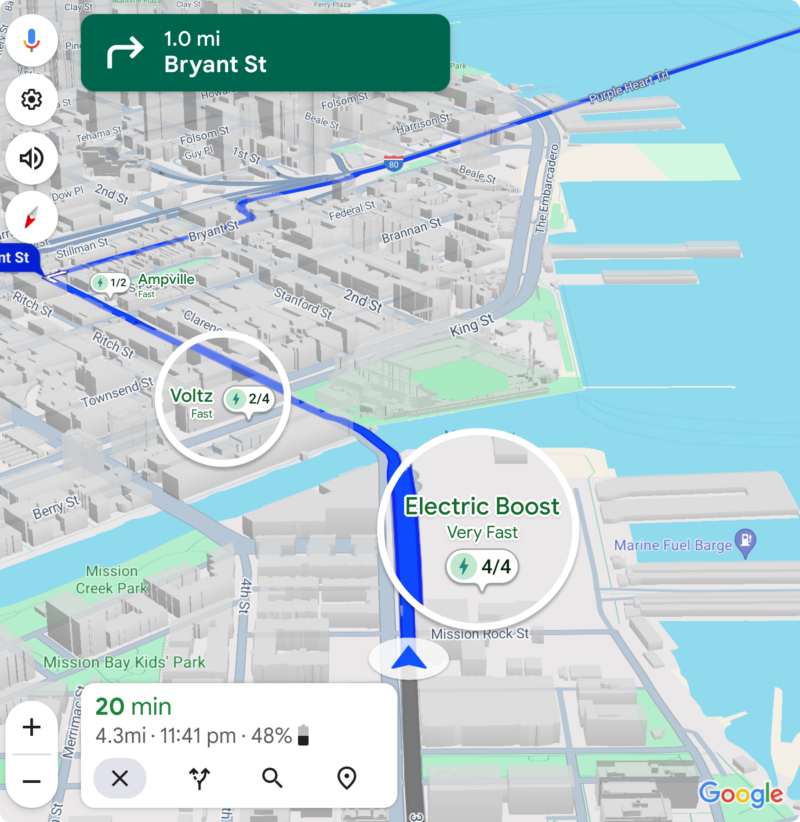
Google Maps is making itself friendlier for electric vehicles. A couple of years ago it added the option to select different powertrain types when calculating a route—gas, hybrid, electric, and so on. Lower-energy routes with fewer hills are helpful for electric vehicles, but mostly what EV drivers on unfamiliar terrain really want to know about are the chargers: Where are they, how fast are they, and do they work? Soon, that critical information will be available to Google Maps users via a new update.
Live charger status is usually available from the on-board navigation system built into an EV. Better yet, those native nav systems invariably talk to the powertrain, so they know how much state of charge is currently in the battery and how much to expect upon arrival. Add in real-time status on chargers—how many are working, how many are available—and it's not hard to see why plenty of EV drivers stick with the built-in system.
But for some EVs, that built-in system is Google Maps, including EVs from Ford, Honda, General Motors , Volvo, Polestar, and soon even Porsche . These will be the first devices to receive the update, Google says, which will roll out globally in the coming months. After the connected cars, smartphones will be next.
A new API means Google Maps can query the car's state of charge, so Maps can calculate how much range you'll have on arrival. And there will be "AI powered summaries" based on user reviews that give precise directions to public chargers (which can often be tricky to find in multilevel parking structures). If that sounds a little familiar, there's a reason—last month (Google-owned) Waze announced similar real-time charger data, and better EV-specific route-planning.
- User reviews will be summarized by AI. Let's hope they don't hallucinate. Google
- Longer road trips in an EV can require multiple stops. Google
- Rate your charging experience here. Google
- Amtrak is coming to Google travel search? Google
- Don't be dumb, driving would take longer. Take the metro! Google
And planning an EV road trip could be slightly less stressful in Google now—the search engine is adding a filter to select hotels that offer EV charging to its travel search.
Some other Google Maps users might notice the app suggesting lower-carbon routes like walking or public transport, if the transport times are close. Google says for now that feature will roll out in 15 cities around the world, "including Amsterdam, Barcelona, London, Montreal, Paris, Rome and Sydney," and one of the provided screenshots shows train times on Amtrak's Northeastern corridor, which suggests it should work in some locations here in the US.
reader comments
Channel ars technica.

IMAGES
VIDEO
COMMENTS
Tickets can be purchased at the metro stations, at news-stands and in most corner shops. If you are planning to use public transport regularly we recommend that you buy a few tickets at a time or buy a travel card. Opening times. The metro opens every day from 5:30 am to 11:30 pm. On Friday and Saturday, the metro runs until 1:30 am. Fares
Rome has 3 metro lines: A, B, and C. You'll probably only need to know about Line A and Line B. These cover the city center and some of the most important monuments, like the Colosseum, the Spanish Steps, and the Vatican . Line C goes through residential parts of the city and isn't useful for tourists. Line A is orange on the subway map ...
You would need this only if you want to retrieve your trips, see travel costs, or buy the monthly ticket. ... The Rome metro doesn't run 24 hours, each line follows its own schedule. Line A Anagnina-Battistini runs from 5.30 am to 11.30 pm from each end. On Friday and Saturday, the last ride from each end station departs at 1.30 am.
Buy this Rome Travel Card here. The metro is also included in the Roma Pass, which gives you 48 or 72 hours access to public transport including one or two attractions. CIS Metro Ticket: With this ticket of 24 € you can travel 7 days. The metro runs every day from 5:30 am to 11:30 pm, 01:30 am on Saturdays. Children up to 10 years old travel ...
How early/late does Rome's Metro run? The first train from each end of the metro lines (see map) is 5.30am every day. The last train leaves from the ends of the metro at 11.30pm on weeknights, and 1.30am on a Friday and Saturday night. That means if you're in the center and it's just after 11.30/1.30 you may still be able to catch your metro.
It costs €1.50 per ride on a single ticket ( read more on tickets ). These tickets can also be used on buses, trams, and commuter trains within the city. Rome Metro stations are marked with red M signs like the one shown in the image below. Trains operate between 5:30 am and 23:30 (11:30 pm) from Sunday to Friday.
CIS ticket (7-day use) A 7-day pass costs 24€, and is good for unlimited travel on the buses and metro in Rome from and including the day you validate it, until midnight of the 7th day. Roma Pass ( tourist package ) - You may also consider getting the Roma Pass, which allows for unlimited travel on Rome's bus and metro system for a 2 or 3 day ...
Here are your Rome metro ticket buying options: ATAC Ticket Offices - You can purchase tickets in one of the ATAC ticket offices present along the subway and railway routes. The hours are from 7:00AM to 20:00PM from Monday to Saturday, and from 8:00AM to 20:00PM on Sundays and holidays. Stores - You can purchase tickets in one of the 2,700 ...
Here are the types of Rome metro tickets: • B.I.T. standard ticket (€1.50). Valid as a one-way metro ticket or 100 minutes on buses, with transfers. • 24-hour ticket (€7). Unlimited trips on all public transportation within the Eternal City during 24 hours counting from the first validation. • 48-hour ticket (€12.50).
The Rome metro is open from 5:30 am to 11.30 pm but stays open until 1:30 am on Friday and Saturday. Rome's metro still leaves some things to be desired. While some of the trains have been upgraded to sleek and modern subway cars with AC during summer, others remain covered in graffiti. Please also be prepared for crowded trains during rush ...
72-hour ticket: €18.00 (unlimited travel on Rome's public transport - metro, bus and train - from 72 hours of the ticket's validation) CIS ticket: €24.00 (valid for seven days) On the metro children under 10 travel free if they are accompanied by an adult. How to validate your ticket on the Rome metro
The first metro line in Rome opened in 1955 and has since become a regular way of transport for Romans to travel across the city. Rome Metro: Tickets and prices for the metro How long does the metro operate? The metro in Rome operates everyday from 5:30 am to 11:30 pm. It runs an additional hour on Fridays and Saturdays.
Roma Pass holders have unlimited use of the metro while their pass is valid. Opening Hours. The Rome metro is open from 5:30 am until 11.30 pm and stays open until 1:30 am on Friday and Saturday. The Metro in Rome allows reaching any point of the city quickly. However, it is not well-connected to the historical center of the Eternal City.
The Rome Metro (Italian: Metropolitana di Roma) is a rapid transit system that operates in Rome, Italy. It started operation in 1955, making it the oldest in the country. ... (€53.00) and may be used alternatively by different persons. Children under 10 years old travel can travel for free on public transport services when accompanied by a ...
48-hour ticket valid for unlimited metro, bus, and train travel within Rome for 48 hours from validation. €12.50. 72-hour ticket - valid for unlimited metro, bus, and train travel within Rome for 72 hours from validation. €18.00. C.I.S. - valid for 7 calendar days.
This ATAC map shows the metro, tram and train lines it services in Rome; the train stations marked in red font are the farthest point you can get to on an ATAC metro/bus ticket. Source: ATAC, June 2022. Types of pass: In addition to the 100-minute ticket, you can get a 24 hour, 48 hour, or 72 hour pass, for €7, €12.50 and €18 respectively.
If you're traveling more than that, you'll get better value for money with a Rome Metro pass. One-, two-, and three-day passes If you're planning to ride the subway several times a day during your trip to Rome, consider getting a 24-hour pass for $7.00, a 48-hour pass for $12.50, or a 72-hour pass for $18.00.
With the new 2022 financial law passed by the government (art. 1 comma 393, Legge di Bilancio 2022), 1.7 billion euros have been allocated for the T2 section of metro C in Rome. The stations involved are Venezia, Chiesa Nuova, San Pietro, Ottaviano and Clodio/Mazzini.
LINEA A: Anagnina-Battistini. WEEKDAY SCHEDULE: first departure 5:30 last departure 21:00 (Sunday to Thursday, then shuttle bus service until 23.30). On Fridays and Saturdays, the last departure from the terminus is at 1.30. The line is operated by ATAC.
Ticket Type Price; B.I.T standard ticket - valid for one metro ride or 100 minutes on all buses allowing transfers: €1.50 24-hour ticket - valid for unlimited metro, bus, and train travel within Rome for 24 hours from validation: €7.00 48-hour ticket valid for unlimited metro, bus, and train travel within Rome for 48 hours from validation
100 minutes. 1,50 euro. The basic ticket is the BIT (integrated timed ticket). It costs 1.50 euros and allows you to travel on all Rome Metro lines, as well as buses and trams. The hourly limit of the ticket is 100 minutes, as long as you do not exit the subway turnstiles. Attention: if you jump from Metro A to Metro C or vice versa at San ...
The Roma metro card allows you to visit Rome at your own rythm. At every corner every districs you will discover antic monuments, stones.Book your tickets! ... The best way to travel in Rome! The metro in Rome is 73 stations, 60 km of tracks and 770 000 passengers per day. The metro station "Metropolitana" has been in operation since 1955.
Story by Katie Hollamby. • 1mo. 1 / 14. Discover Rome - A Comprehensive 12-Step Traveler's Guide ©Provided by Passing Thru Travel. Rome, where history and modernity intertwine seamlessly ...
The cost of Rome's bus, metro and tram tickets was expected to increase this summer under a new pricing plan, according to Italian media reports. Advertisement The cost of a ticket will go from €1.50 to €2 as of July 1st when new pricing is set to come in for Rome's public transport system, according to local newspaper RomaToday .
April 17, 2024. Deal of the Week: 24 hour flash sale offering up to 50% off flights to Rome ending at 11:59 PM on 17th April. Travel from 1st May to 31st May. North American transatlantic fares starting from €199 each way. Live from now until 22nd April. Valid for travel from 1st May - 15th June. 17th April 2024: Act fast!
Google says for now that feature will roll out in 15 cities around the world, "including Amsterdam, Barcelona, London, Montreal, Paris, Rome and Sydney," and one of the provided screenshots shows ...